
www.youtube.com/watch?v=QowTqmxYZ1Q
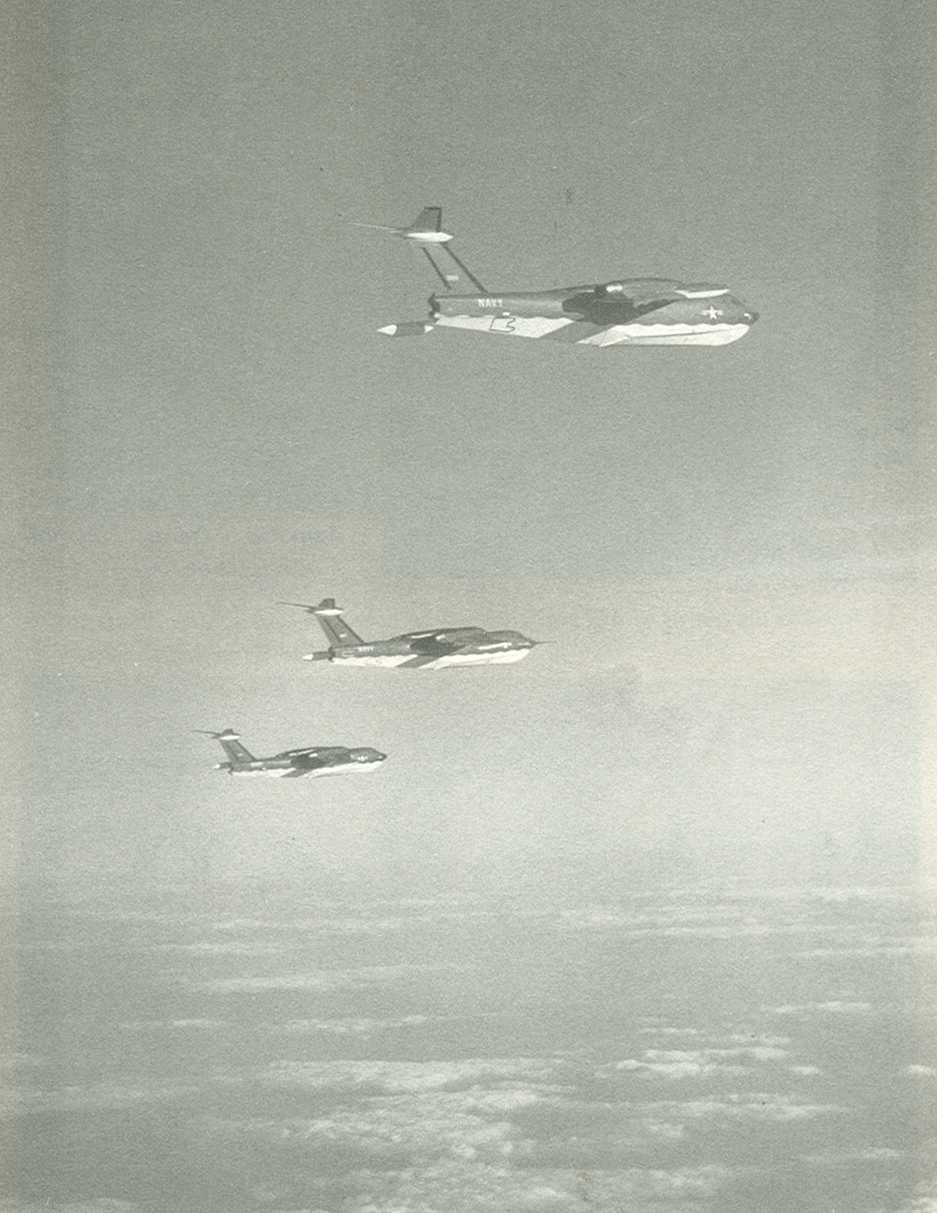
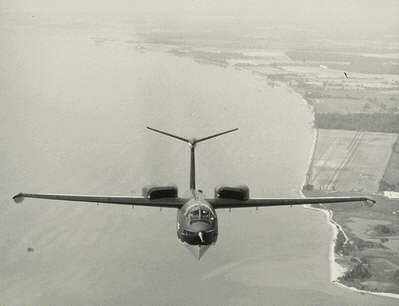
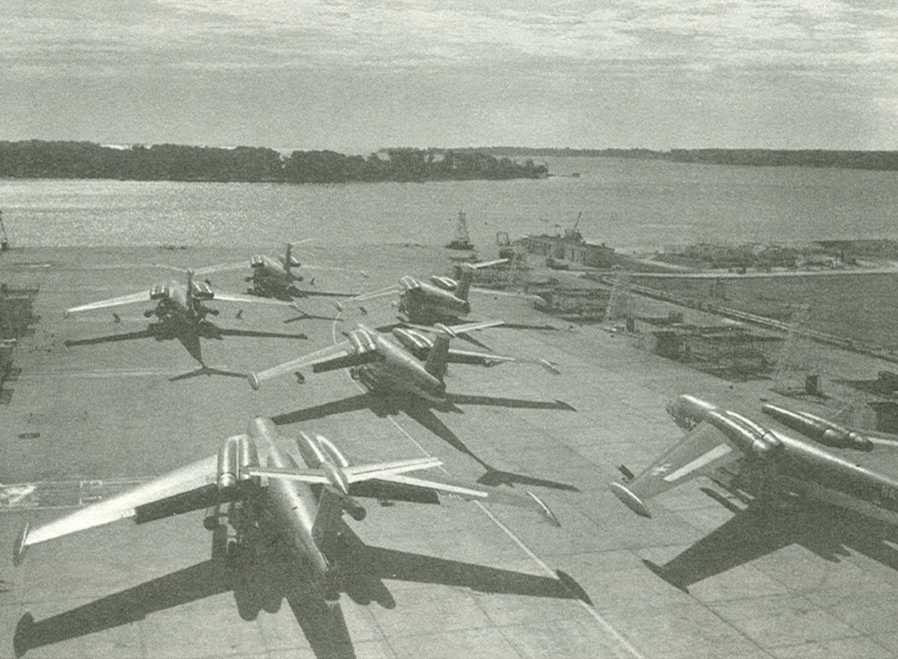
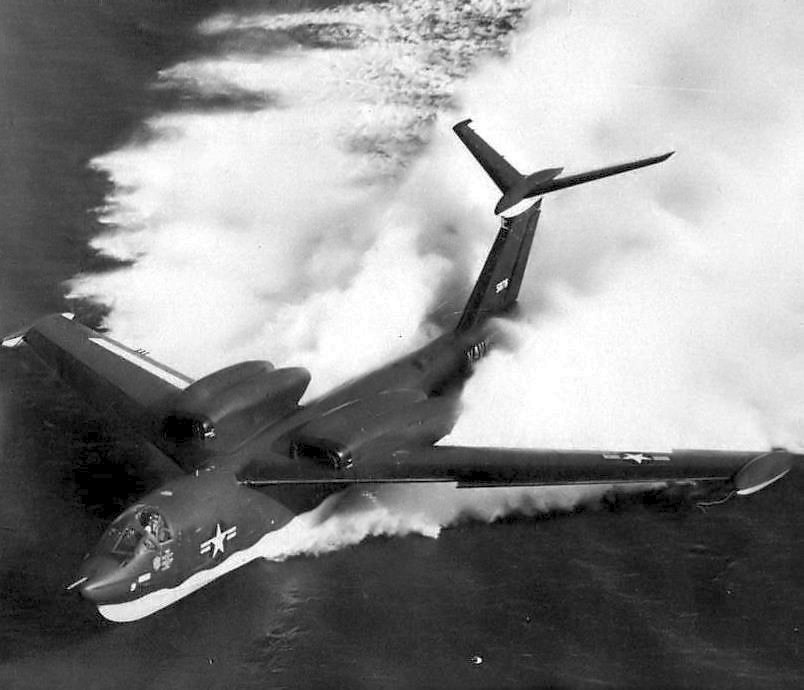
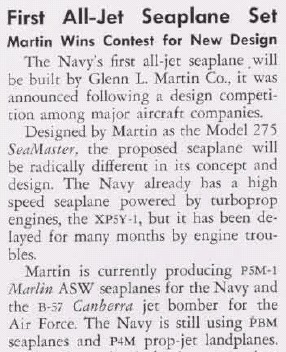
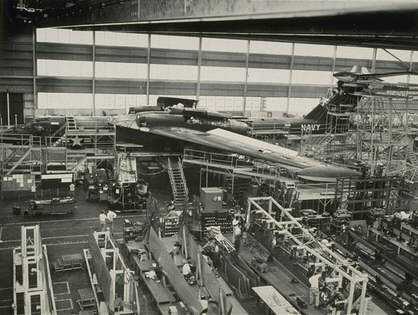
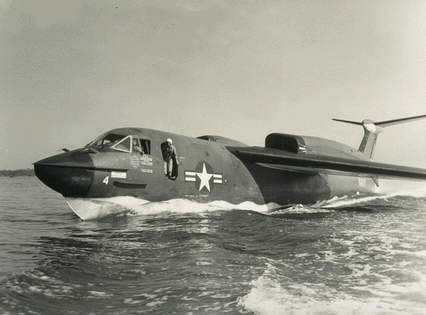
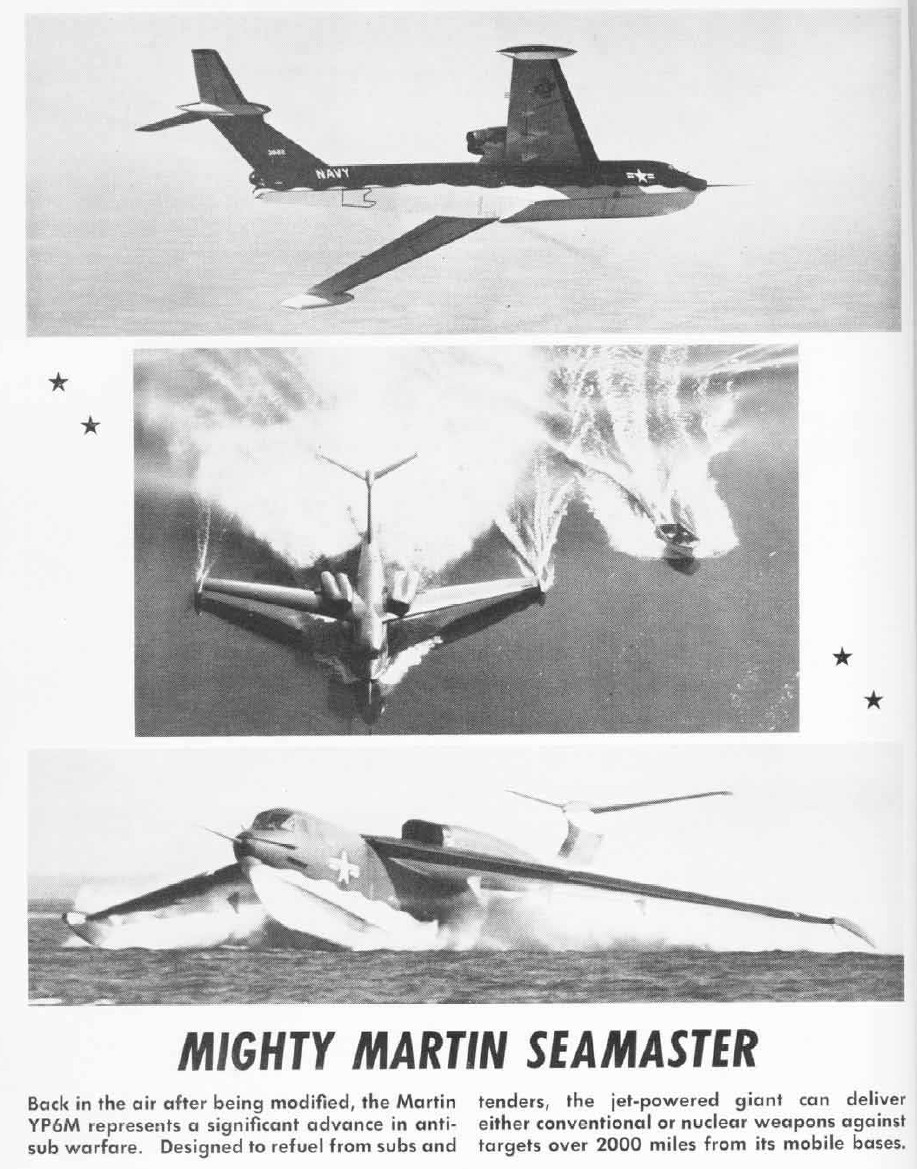
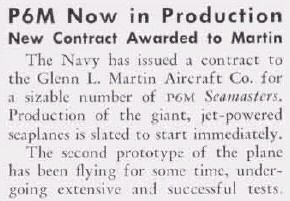
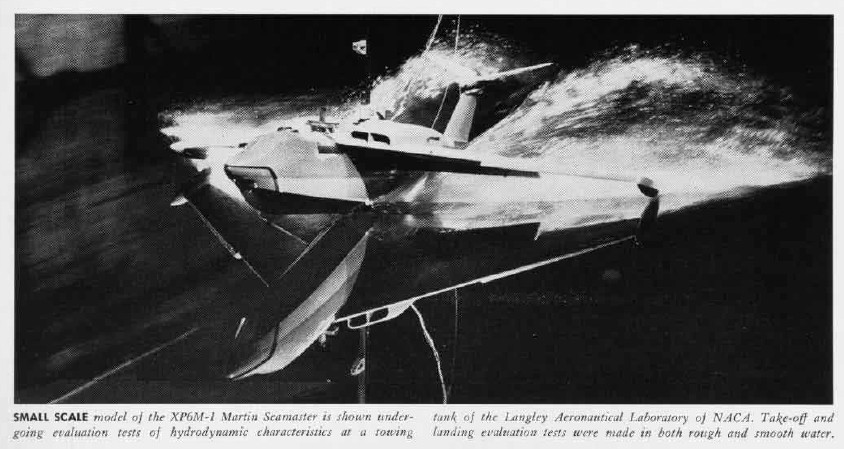
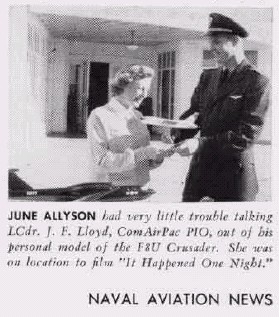
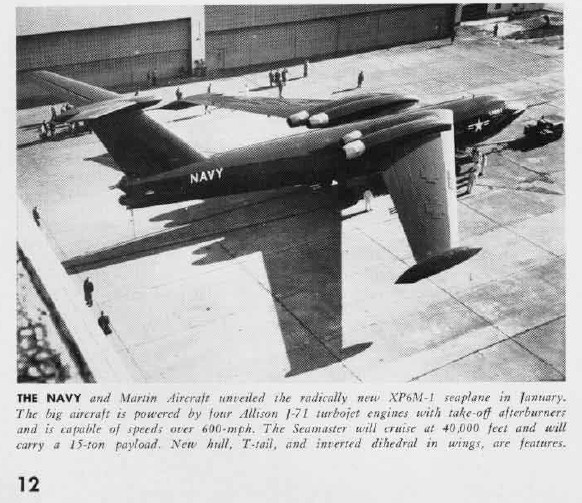
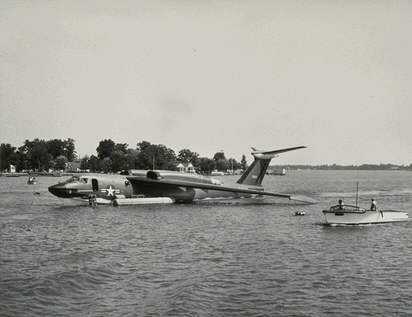
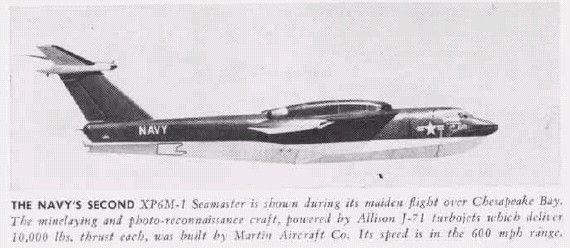
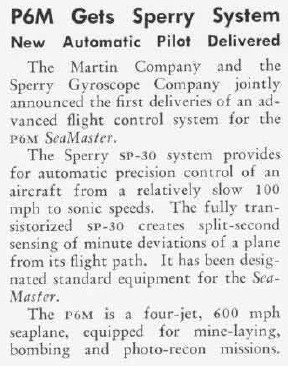
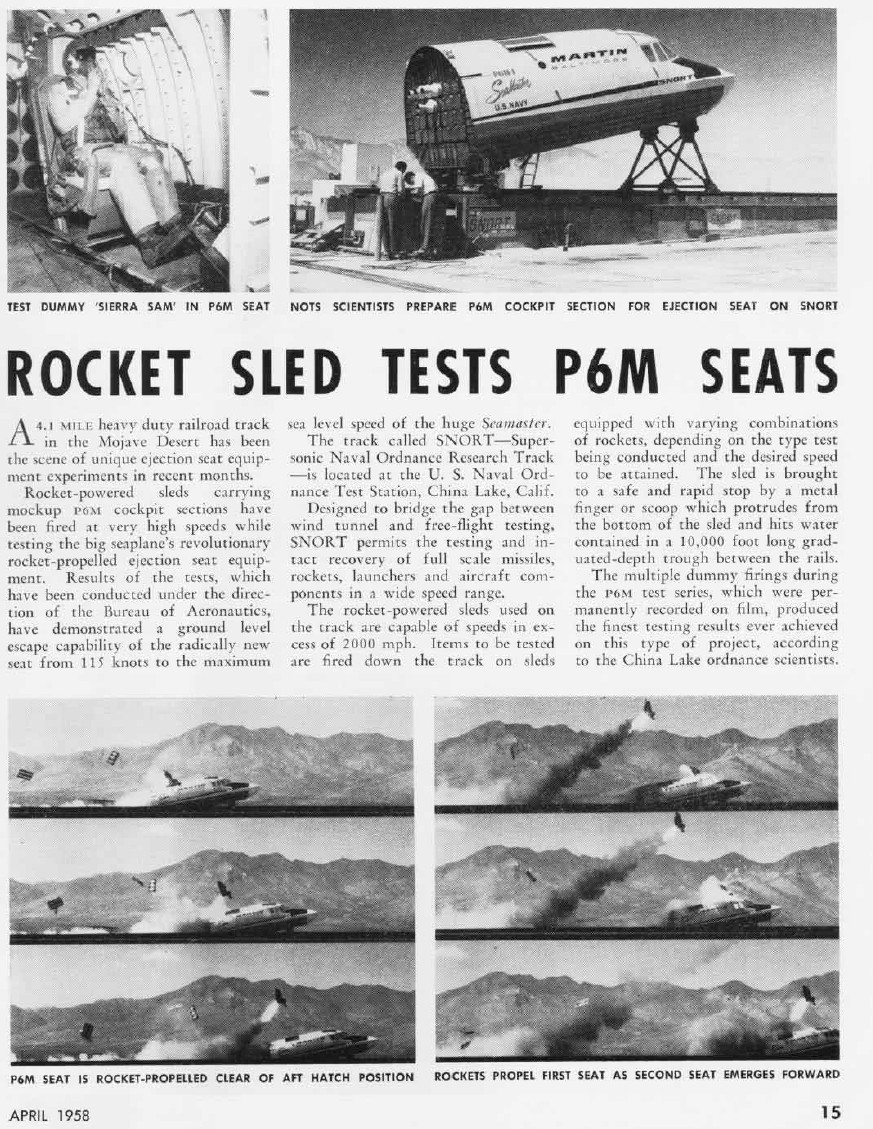
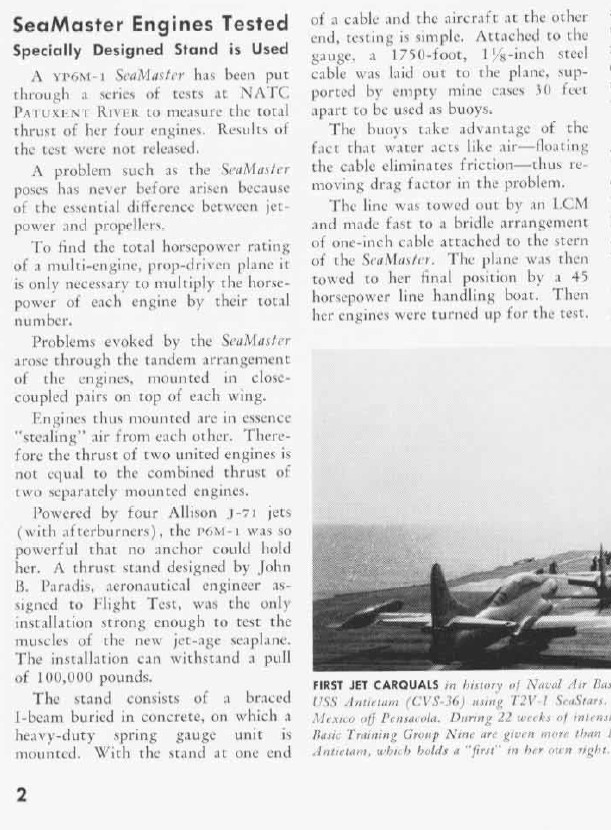
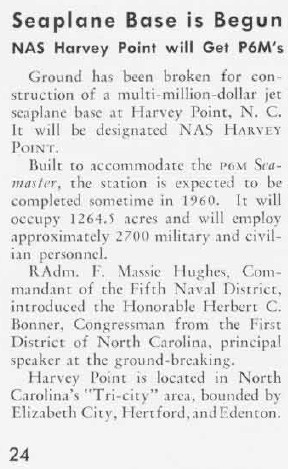
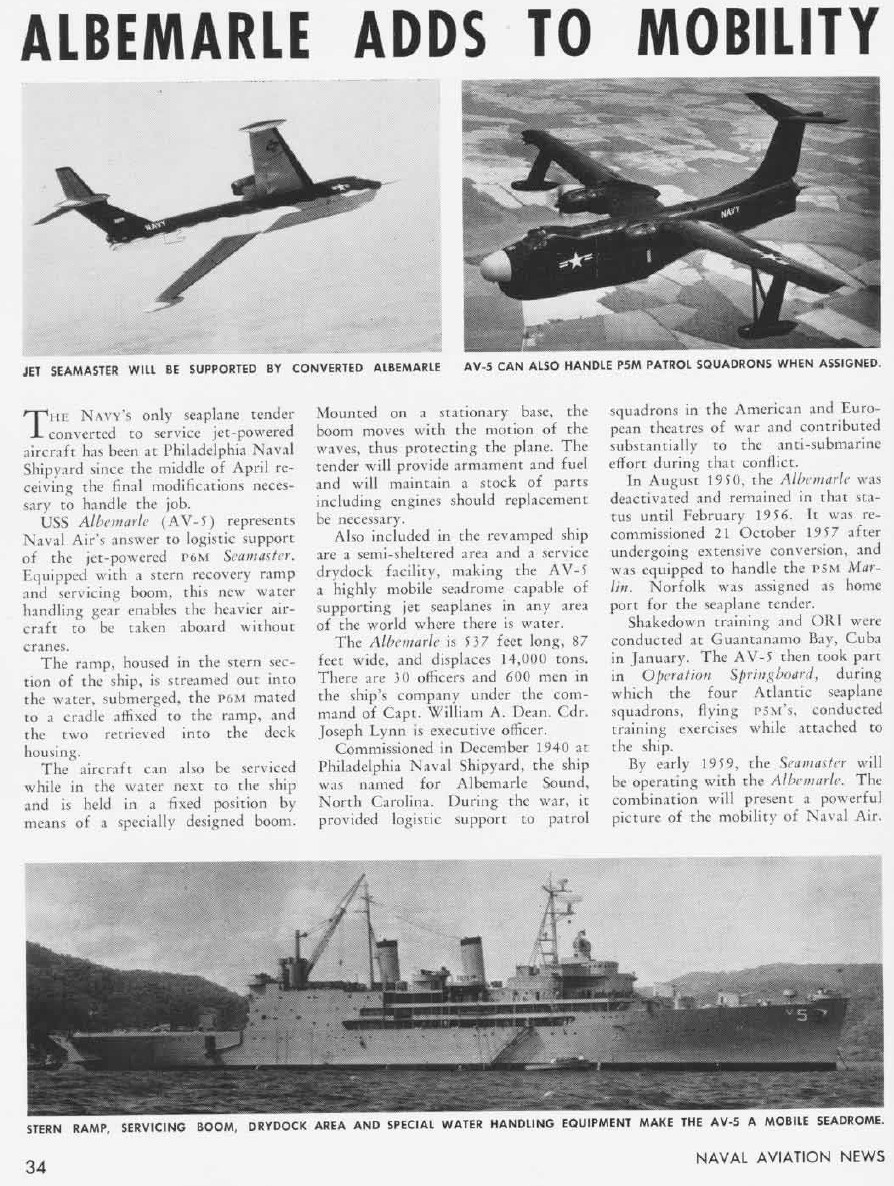
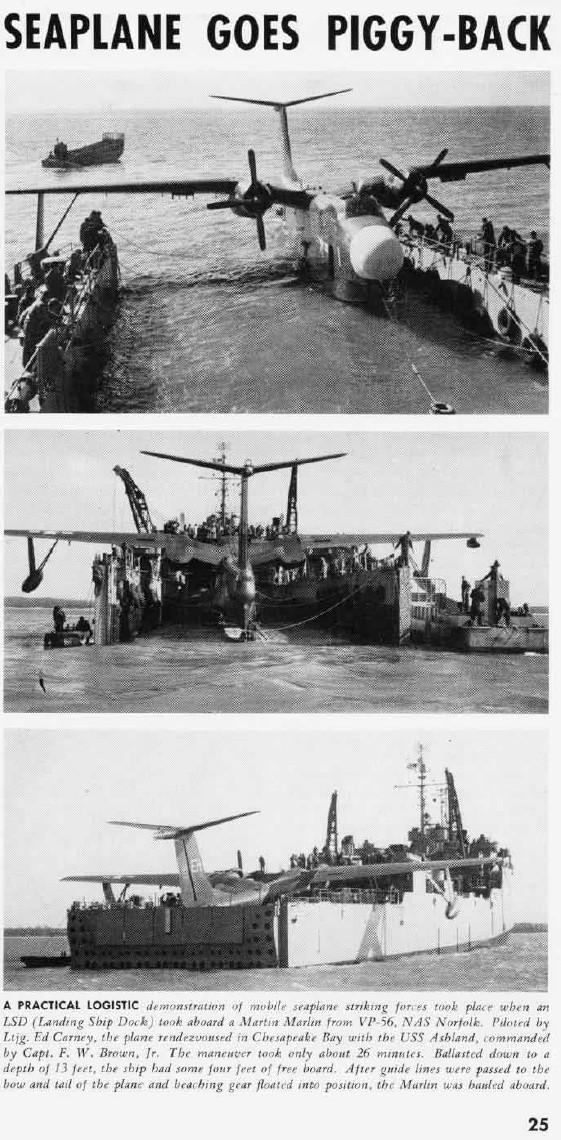
The Seaplane must return or the surface Navy is finished





















The invention of the military seaplane, like the tracked tank, the Amphibious Commandos, the Hurricat, the Landing Ship Tank, were all the brain-childs of Winston Churchill, no doubt the greatest man of the 20th century.
In his book, An illustrated History Seaplanes and Flying Boats, Maurice Allward writes:
WWII Began a Technical Revolution: what went wrong?
The post-WWII world was a time when unprecedented amazing physical maneuver advances were made by the "greatest generation" combat veterans of the war. The jet engine perfected gave us MACH 3+ plus stealthy SR-71 reconnaisance jets, intercontinental B-52 Stratofortress heavy bombers (see story on bottom of the page), moving propellers the t-tail STOL airland and airdrop C-130 Hercules transport plane, moving rotor blades, troop V/TOL helicopters, nuclear submarines and aircraft carriers, aluminum alloy tracked armored fighting vehicles (AFVs) that can swim and be parachute airdropped, an armored flying tank with a massive 30mm gatling cannon...all done before the computer "push button" mentality born of the space program took hold.
"Another British pre-war visionary, also of the Admiralty, was Winston Churchill, who as First Lord in October 1913, had recommended the following types of aircraft for duties with the Royal Navy; 'an overseas fighting seaplane to operate from a ship or base, a scouting seaplane to work with the fleet at sea, and a home service fighting aircraft to repel enemy aircraft . . . ' Churchill's enthusiasm for seaplanes had resulted in an early purchase of a Sopwith Bat Boat for the RNAS."
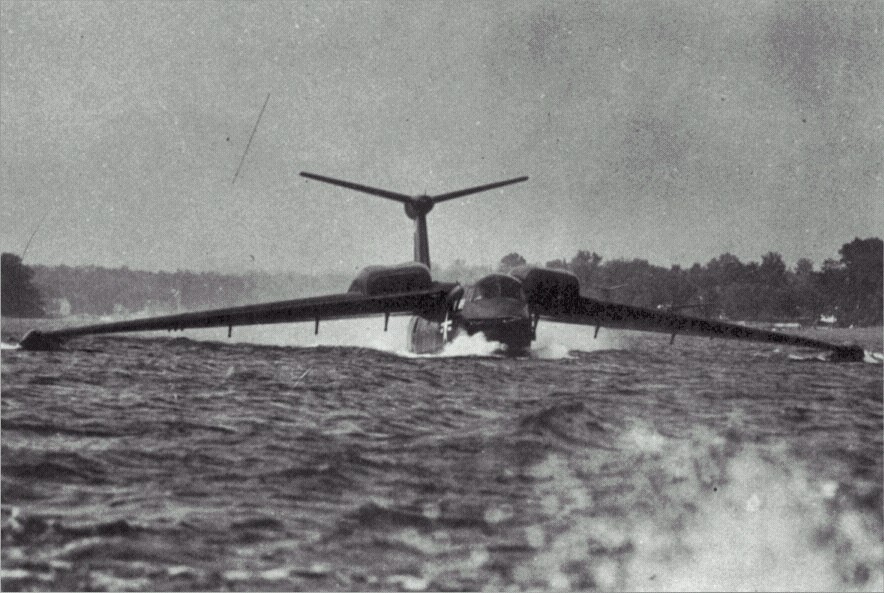
So what went wrong?
President Dwight D. "Ike" Eisenhower and the Large Aircraft Carrier "Mafia"...aided by "Mr. Nuclear Submarine"
Its a dirty secret, but General Eisenhower should have been fired as European Commander after the 1945 Battle of the Bulge fiasco brought on by his own incompetence as a defacto combat commander. He liked to praise the over-achieving nature of his fellow depression-era survivors for developing things like Higgins boats and C-47s etc. but he was not like them. Ike was a compromising politician not a practical problem solver (maybe that's why he admired those that could?) and lacked a feel for combat realities. Chairmen of the Joint Chiefs, General George C. Marshall wanted to fire Ike but FDR over-ruled him. The result was the mythology of Ike as a war hero when the fact is that he couldn't focus resources into his most competent commander, Patton and this enabled the Russian communists to take Berlin and other key city centers damning the world to a super power confrontation for 5 decades. Ike chose to not choose and tried to supply both Patton and Montgomery's armies in a "broad front" non-strategy. By the time it was realized that the secret Nazi weapons labs had to be taken, Ike had to sacrifice half of eastern Europe in order to free Patton to get their technology. Ike was horrified by the Allied casualties during the Bulge and this aversion to land maneuver combat created by his own incompetence to see how ground warfighting could be done well resulted in him later on as President embracing nuclear firepower as somehow a threat that would prevent wars in the first place. Ike came to become President in the aftermath of the post-WWII drawdown of ground combat powers and the failure of American nuclear firepower to stop the Korean war. After becoming President in 1953, Ike threatened Red China and North Korea with nuclear weapons and got them to sign a truce, ending the Korean war in a stalemate. Yet in 1954, Ike refused to threaten nukes to save the French surrounded at the Dien Bien Phu firebase. Ike embraced the concept of "Mutually Assured Destruction" via massive nuclear retaliation to stalemate the Soviets from outright World War III and cut costs. During the 1950s, most of DoD's monies went towards NUCLEAR weapons at the expense of conventional forces despite time after time, conflicts less than nuclear often instigated by the Soviets--popping up with America not ready to intervene competently: Vietnam, Lebanon and Hungary come to mind. Certainly, it was Eisenhower's rejection of his own albeit weak Army maneuver warfare background in favor of lazy-man nuclear firepower and mental gadgetry to allegedly "cut costs" that set the stage in the '60s and '70s for the physically handicapped mess we are in today. As a man who did not have practical inventive skills, Ike rightly loathed the "Military-Industrial (Congressional) Complex" and cut their funds when he should have reformed their goals and outlook correctly. Eisenhower penny-pinching also caused the corrupt large aircraft carrier forces within the Navy to cancel the greatest jet multi-purpose seaplane of all time, the P-6M Seamaster, which has had damaging consequences that linger to the present and bode ill for our future.
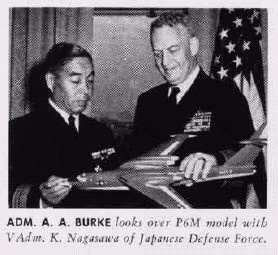
While Ike was at least decent and non-egotistical, the same could not be said of the Navy brass during the critical period of the 1950s. The ultimate responsibility rests on the Chief of Naval Operations for 6 years--longer than so far anyone--Admiral Arleigh Burke. During his tenure from 17 August 1955 to 01 August 1961, the SeaDart jet seaplane fighter was axed. Then the POGO VTOL convoy defense fighter. When the Tradewind seaplanes had bad engines instead of grounding them and looking for reliable contraprop engines like the Mambas used successfully in the British Gannet ASW/AEW planes, he scrapped the capability to land ground troops by seaplanes and air-refuel aircraft at sea from ships. Then he appointed or tolerated the rise to power in the Navy aeronautical bureau of a complete aircraft carrier asshole; Admiral Pirie, who then marginalized lighter-than-air (LTA) blimps after they earned the coveted Collier Trophy for an amazing 11 day non-stop endurance demonstration in 1957. In a speech on naval aviation, Pirie did not even mention the Navy's LTA or jet seaplane programs, and the NANEWS staff noted he gushed about his beloved BS large aircraft carriers.
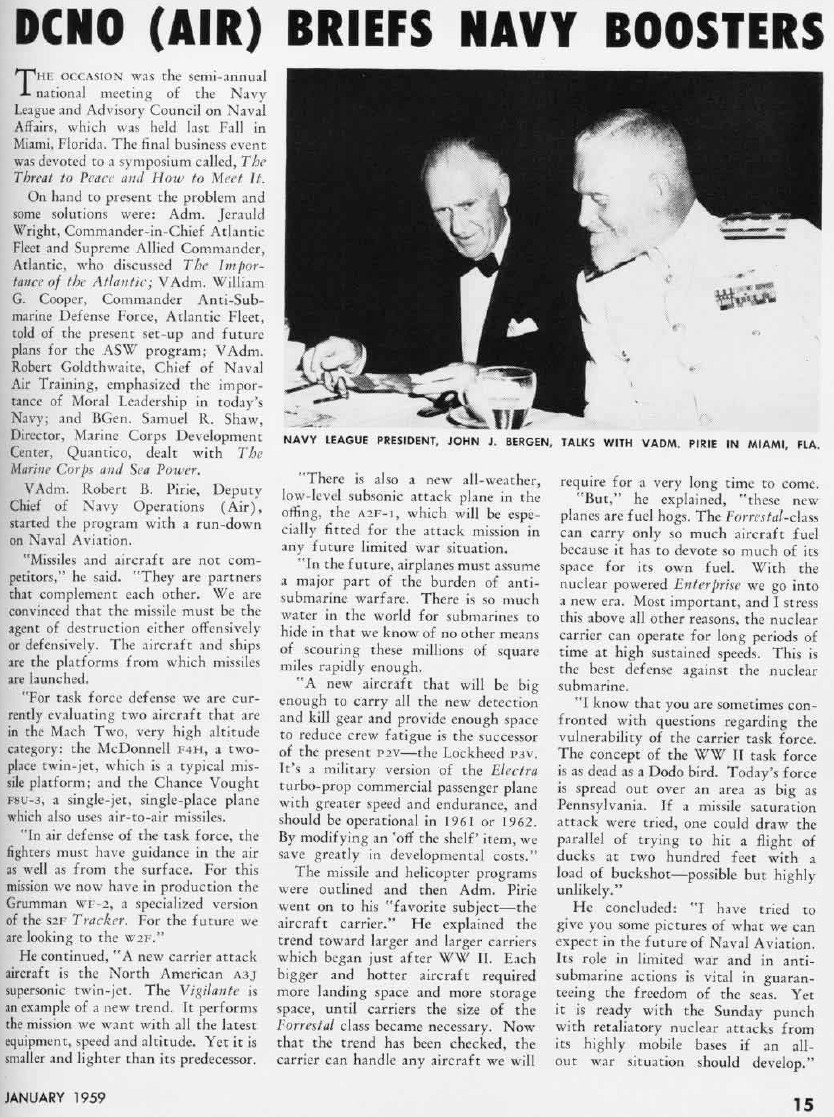
Pirie was also very concerned about "important" BS like displaying squadron insignia "correctly":
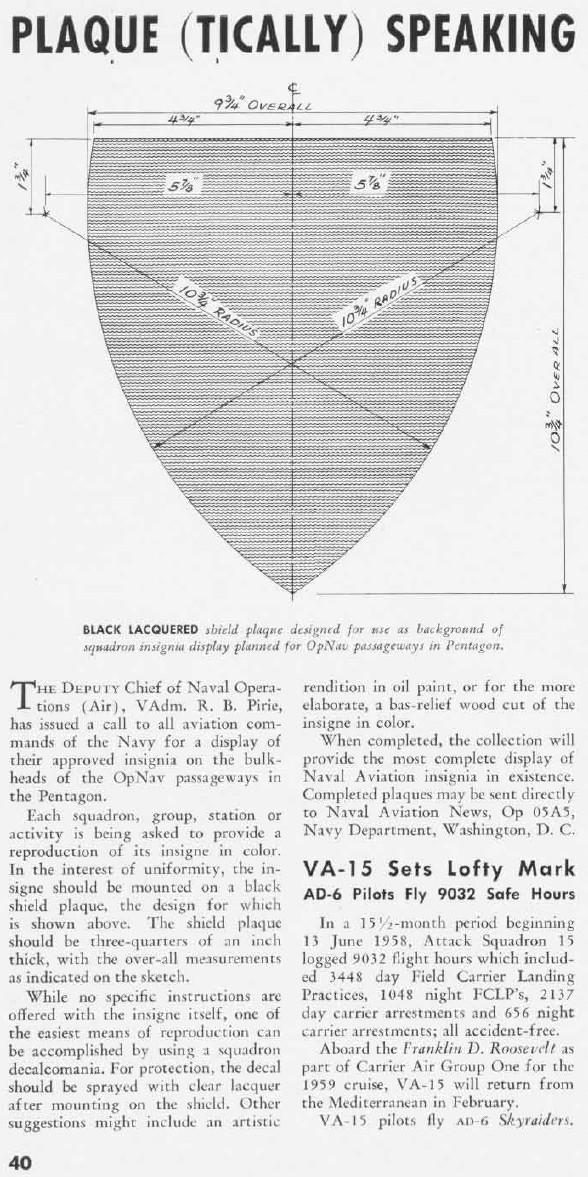
Such narrow-minded bigots should not even be allowed to rise to positions of authority where they could ruin the necessary combined arms contributions of many aspects of naval warfare by favoring one over the other.
One of Pirie's "innovations" to "cut costs" was to give the patrol navy flimsy airliners with ASW gadgets to go hunt Russian submarines while foisting ever more funds into sexy jets. Anytime the seaplanes could be cut, they were cut.
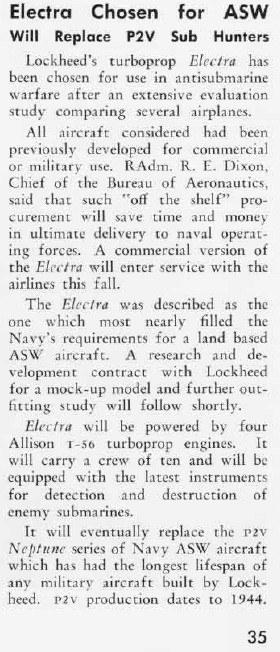


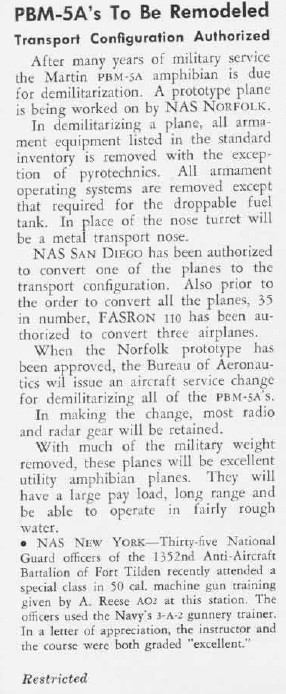
How many carrier-based fighter and bomber jets did the 1950s Navy need? Try the following list on for size and note at one time nearly ALL OF THEM WERE IN SERVICE AT THE SAME TIME!!!
F-2 Banshees
F-9F-5 Panthers
F-9F-6 Cougars
F-7 Cutlasses
A-4 SkyHawks
F-6 SkyRays
FJ-1 Fury(s) (swept-wing F-86 desperately obtained after Korean War not-able-to-shoot-MIGS-down embarrassment)
F-3 Demons
F-11 Tigers
F-8 Crusaders
F-4 Phantoms
A-3D SkyWarriors
A-3J Vigilantes
And don't forget the trainers, too! How many trainers did the Navy actually need?
T-34 Mentors
T-28 Nomads
TV-1 Shooting Stars
TV-2 SeaStars
T-2J Buckeyes
T-1 Pintos
F-9F-8T Cougars
Did we miss any?
Did they just hand out an aircraft contract to everybody or what? Is it any wonder that the Navy was "running out of money" by the end of the 1950s after an orgy of aircraft carrier-dedicated aircraft spending?
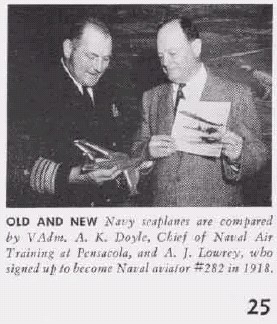
The following anecdote suggests Pirie had "help" in the murder of the Navy's seaplanes.
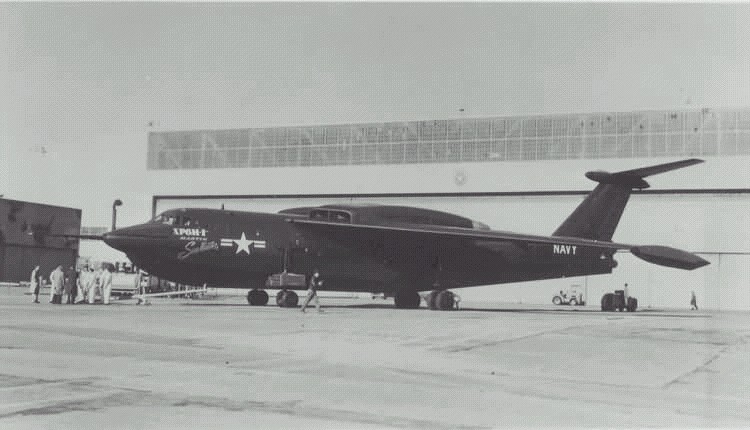
http://aeroweb.brooklyn.cuny.edu/specs/martin/p6m-1.htm
R. P. Parker aka bobnutes1@aol.comOakland, Ca
"I was employed as airport mechanic at Glenn Martin's Middle River MD test airport facility from June 1958 to August 1959 assigned to the engine crew on ship # 2 under Paul Cooper 2nd shift supervisor. Heffner crew chief. Ralph Hendrix (kemo) chief engine mechanic. This a/c was powered by Allison J71 with afterburners as was ship # 1 & 3 number four thru # 9 were powered by Pratt & Whitney's Twin Eagle J57s with afterburners the nacelles were cantilevered to the air frame so as to direct thrust and blast away from flying tail and airframe. The mine bay was capable of carrying 10 each 2000 lb mines or being equipped as an air-to-air refueling tanker with drogue chute and tanker hose with bladder tanks. I assisted with engine installation and test on and off a/c test cell and noise suppression ground tests through one of the worst winters on record.
I was present when Admiral Hyman Rickover came to witness the second flight of ship # 4 the first week in August 1959. The test pilot in charge was C.H. D. Corb Johnson, a huge careful man. The oxygen regulator was not to his liking and the flight was scrubbed with the admiral sitting in his caddy limo. A few weeks later, the program was cancelled in favor of the nuclear sub and nuclear missile programs headed by Rickover.
Ship # 9 had just arrived on Strawberry Point. Ships # 5-6-7-8 were still under assembly at main plant. The beaching vehicle was a problem along with the foul weather during the winter months. The sight of the airplane with the chase plane, a RB-47 over the Strawberry Facility was a joyful sight. Hats off for the men and women who assembled and flew this great aircraft."
08/16/2006 @ 01:04
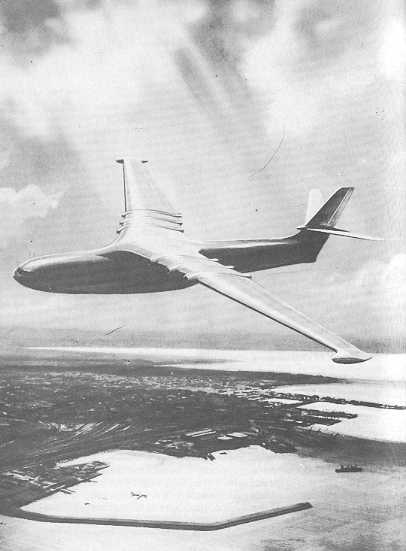
To Pirie and Rickover: Thanks, for killing 60 years of seaplane progress and damning thousands of people to early deaths in tube/wing land planes. Thanks for handicapping our Navy. Thanks, assholes. To Burke: why did we name a line of vulnerable surface ships after you that are going to get sunk and send thousands of men to early deaths because you set them up for failure?
The Aircraft Carrier Land Attack "Doolittle Raid" Myth: Jimmy Doolittle versus Glenn Martin: who strikes back at "Japan" First?
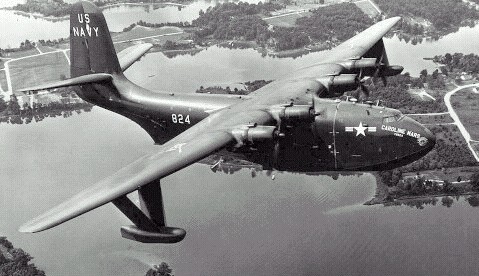 VS.
VS.
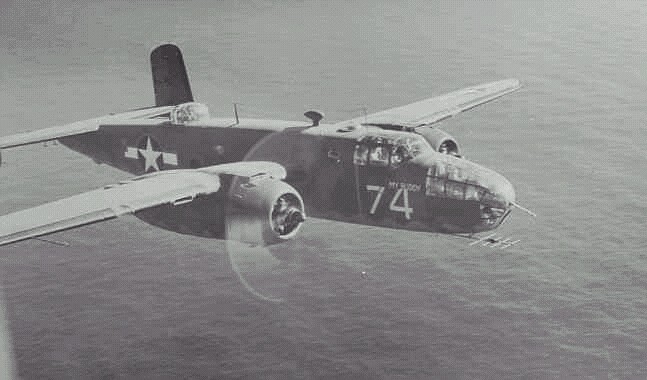
The vast majority of the billions of people on planet earth live on LAND, no one lives statically on/in the sea except those poor souls drilling for oil on platforms. People cause wars and they live on land. To get political effect, warfare must affect people on land. One of the tragedies of WW2 is that we walked away from it learning the wrong lessons in a case of who-gets-the-land-attack-licks-in-first, being remembered and emulated in our current un-balanced and dangerously unready naval force structure. If a weapon system does not achieve political effects it will not be rewarded by the tax payers with a continued existence regardless of how important or vital the roles it performs at sea where no one sees them doing these heroic deeds nor gives a damn. When a nation-state is attacked it wants BLOOD not operational art that provides leverage to end a war with the least amount of blood being shed. Land Attack (LA) provides the "red meat" the public wants in a "feeding frenzy" of revenge.
Before WW2, the Navy had realized it needed long-range, large seaplanes and refuel tender ships to range out ahead of its fleet much farther than any land-based planes could reach and certainly any wheel landing gear small airplanes from a carrier could reach. At a critical juncture the twin-engined PBY Catalina seaplane was put into mass-production and it gave us the critical edge in both the Atlantic and the Pacific at finding enemy submarines and surface ships first and then enabling naval commanders to "shape" the sea battlefield so we ganged up (combined all elements into a stronger whole than the enemy could defeat individually; cargo ship escort aircraft carriers by the dozens with hundreds of short-range planes, long-range LTA blimps and land-based patrol planes, small seaplanes from smaller ships etc.) on both the Germans, Italians and Japanese to smother them everywhere on the very large planet earth's oceans and seas. Naval aviation genius, Glenn Martin had improved upon the Catalina with his PBM Mariner and the 4-engined Coronado by a rival company were advancing the patrol and combat search & rescue missions with slightly faster speeds, longer ranges, more armor and armament and open ocean water landing capabilities. However, Martin was already thinking of projecting LA power by large seaplanes in two ways; by firepower using them as long-range bombers to smash land targets and for maneuver delivering ground troops to defeat land armies, hold key terrain and eventually topple the enemy nation-state government.
To do firepower LA from a seaplane across oceans, you first need range and enough speed to survive enemy land-based fighter interception. Being able to land on the water in the ocean to refuel from surface or submarine tenders was and still is a HUGE advantage, but the fuselage boat shape is not and hurts aerodynamically with speed reducing drag. When Martin designed his supersized Mars "Sky Battleship" seaplane with 4 engines to carry enough fuel, he got the range but not the speed to do LA bombing at least during the daylight hours; the plane flies today as a forest fire water bomber at 200 mph. At this critical, pre-Pearl Harbor Japanese attack juncture, the Navy told him to make the Mars a transport and this tragically stopped seaplane LA development for a decade. And most importantly for getting the necessary political visibility effect to make a place for seaplanes, the Mars bomber was not ready when the Japanese took our bait and attacked our WW1 battleships at Pearl Harbor so the American people would be pissed off enough to declare war on them and by alliance fight the real mortal threat to America, the high technology Nazi Germans.
As our WW1 battleships were being quickly refloated and patched up to go kick the Japanese's asses, plans were underway (pardon the pun) for Army Air Corp land-based B-25s to do a short take-off from a Navy aircraft carrier and strike back immediately at the Japanese to assuage the American public's need for revenge and serve notice to the Japanese that their home islands were not safe and to expect more to come. Details:
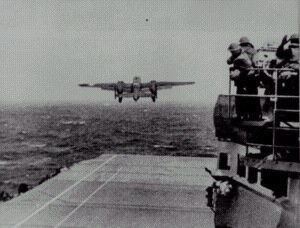 VS.
VS.

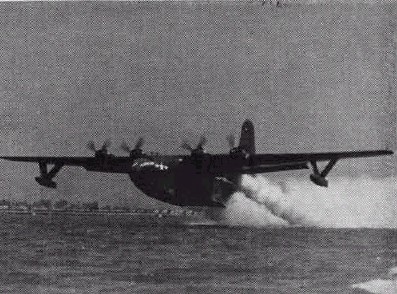
The B-25C without a boat hull could fly at 284 mph at 15, 000 feet but would be flying low over the water to evade Japanese air defense detection so cruising speed was 233 mph carrying just 3, 000 pounds of bombs and for a range of only 1,500 miles and would RISK TWO ENTIRE AIRCRAFT CARRIERS AND 10, 000 MEN (USS Enterprise 2, 217 + USS Hornet 2,919 and 16 other ships!) In contrast, the Mars seaplane could cruise at 185 mph but could fly for 4, 000 miles unrefueled only risk a couple of tender ships and deliver 34, 811 pounds of bombs!. That's over 11 times the amount of bombs one B-25C could deliver. In fact, with 16 x Doolittle B-25 raiders launching from the Hornet, a pair of Mars seaplanes could deliver more damage than a squadron and a half B-25s at 50 mph slower speed, which if done at NIGHT would be a wash. As we know now with 20-20 hindsight, no B-25s were shot down even during daylight on the surprise Doolittle raid, but resulted in the execution deaths of some brave Americans by the sore loser asshole Jap militarists after they were forced down in China and captured. We know ALL of the Doolittle raiders crash landed or parachuted into occupied China because they RAN OUT OF FUEL since there was no "Plan B" to recover them after the mission since the B-25s didn't have tail hooks to land back on the Hornet. Which in any case was high-tailing it out of the area before they got attacked and sunk. So here is the point, and I'm sure you see it coming.
WE SHOULD HAVE ATTACKED THE JAPANESE HOME ISLANDS WITH A SQUADRON OF 12 x MARS SEAPLANES AT NIGHT DELIVERING 360, 000 POUNDS OF HIGH EXPLOSIVE BOMBS AND INCENDIARIES UPON JAPAN ACHIEVING SIGNIFICANT MILITARY DAMAGE POSSIBLY EVEN STARTING A FIRESTORM IN A WOOD/PAPER RESIDENTIAL CITY.
Furthermore, seaplane tenders could have been waiting to refuel the Mars bomber crews after the mission enabling them to FLY HOME SAFELY. There is a good chance that NONE of these raiders would have died at all. None would have been forced to crashland or bail out in China because they didn't have a way home. AND 10, 000 MEN AND TWO ALLEGEDLY VITAL AND "SCARCE" AIRCRAFT CARRIERS WOULD NOT HAVE HAD TO BE PLACED IN SEVERE RISK TO STRIKE JAPAN. 250, 000 Chinese were murdered by the Japs trying to find Doolittle's men; if we had used self-recovering seaplanes they wouldn't have had been provoked to seek revenge on them for helping the American raiders.

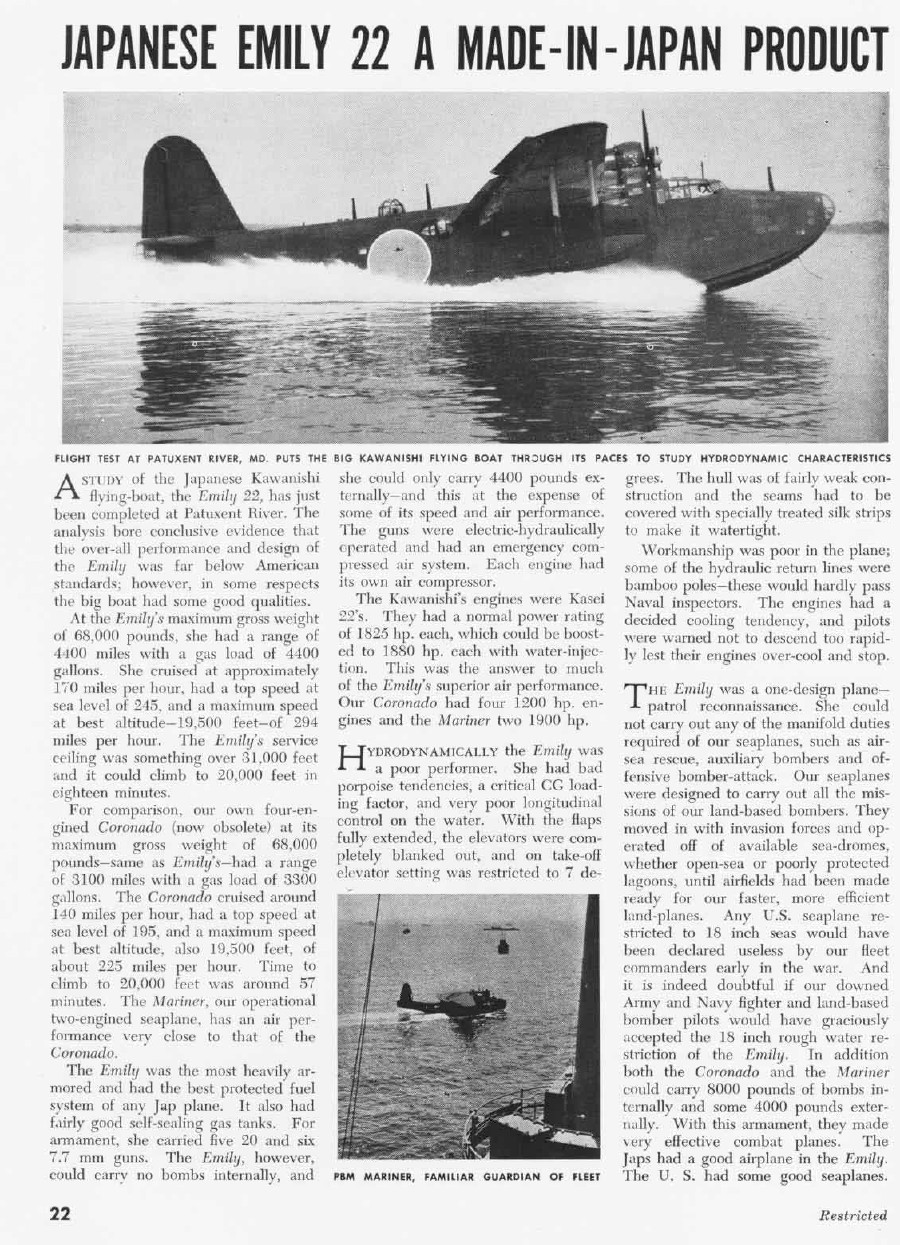
http://marshall.csu.edu.au/Marshalls/html/WWII/SeaPlaneOps.html
Japanese Seaplane Operations in the Marshall Islandsby Dirk H.R. Spennemann
The atolls of Micronesia are ideally suited for seaplane operations. Atolls are rings of coral reef usually with a large and quite calm lagoon in the middle. The islands on the windward side of the reefs provide an ideal plane anchorage on the leeward beach, sheltered from wind and waves. The lagoon is usually clam enough to permit unrestricted landing and take-off of larger flying boats, and so it is not surprising that the lagoons were used as seaplane bases first by civilian and later by military aviation.
Civilian seaplane operations
A reliable long-range seaplane, the Kawanishi H-6K type 97 flying boat ("Mavis") had become available to the Imperial Japanese Navy (IJN) in 1936. The seaplane base were officially operated by a civilian airline, the Dai Nippon Koku K.K. (Greater Japan Airlines) although numerous of its pilots were reserve naval pilots. The first irregular air service flying Yokohama, Saipan and Palau opened in 1935, after successful test flights had been carried out in 1934. The flights became more frequent in 1937 and a regular air route from Yokohama to Saipan (via Belau) was officially opened in December 1938 or April 1939 with hopes for an eventual extension to Papua New Guinea and Australia. The Annual Report of the South Seas Government, the Japanese administration of Micronesia, for the year 1938 states that the airline Dai Nippon Koku Kaisha began and air service connecting Japan with Saipan and Belau. In 1939 Pohnpei and Jaluit were added. During the Pacific War the Dai Nippon Koku K.K. continued its long-distance services, flying scheduled services on its three routes Yokohama-Saipan-Palau-Timor, Saigon-Bangkok and Yokohama-Saipan-Truk-Ponape-Jaluit.
Military development
By 1937 the Imperial Japanese Navy was calling the shots in Micronesia and initiated construction of major improvements in air, sea and land facilities in Micronesia. Seaplane facilities had already been built for the Nan'yő-Cho (South Seas Government) in the late 1930s on several islands of the former Mandated Territory and between 1935 and 1937 the Japanese government spent almost Yen 1,000,000 on further construction of air facilities.
The Japanese air routes in the western Pacific.
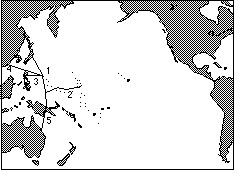
1--Yokohama-Saipan-Palau; 2--Palau- Chuuk-Pohnpei-Jaluit; 3--Saipan-Manila; 4--Saipan-Saigon; 5--Palau-Port Moresby-Australia (planned).
The atolls of the Marshall Islands were ideally suited for seaplane bases. All that was needed to establish a fast seaplane base was to detail a seaplane tender to the atoll, from which the planes could be supplied and serviced. The personnel would sleep in tents on the beach and no permanent structures needed to be erected. The planes would be beached at a sandy beach. Such seaplane bases could be set up almost ad hoc if the situation demanded it. The development of a float plane version of the successful Mitsubishi A-6M Zero fighter meant that advanced fighter bases could be erected ad hoc on any of the atolls of the Eastern Caroline, the Marshall Islands and Kiribati.
A temporary seaplane base could be even set up by the means of one or more supply submarines waiting for the arrival of the flying boats or aircraft. In the Marshall Islands, known seaplane bases with shore facilities were located on Wotje, Wotje Atoll; Ebeye, Kwajalein Atoll; Jabwor, Jaluit Atoll; Djarrit, Majuro Atoll; and Engebi, Enewetak Atoll. Suspected seaplane facilities or temporary seaplane bases may have existed on Rongelap, Mile and Bokak.
Military operations
Long-range seaplanes became available in 1936 with the introduction of the Kawanishi H-6K flying boat and in 1942 with the introduction of the Kawanishi H-8K flying boat. In addition, single-engine float planes were used for anti-submarine patrol. The seaplane base in Jaluit, for example, is known to have harbored in mid-1943 the Mitsubishi A-6M2N's ("Rufe"), a float plane version of the "zero" fighter The aircraft visible on a contemporary photograph possibly represent two air wings and all belong to the 802nd Kokutai (Squadron).
The bulk of the military operations of the seaplanes constituted the flying of long search patrols in a set search triangle, looking for enemy submarines and surface shipping. The planes were equipped with communications and small anti-submarine bombs. Attack operations were less common:
The Japanese attack on Pearl Harbor on December 8th, 1941, was partially launched from bases in the Marshall Islands. Not only came the submarines providing the submarine screen from the base of the 6th submarine fleet in Kwajalein, but also several flying boats taking part in the Pearl Harbor as well as in the raids on the U.S. bases on Wake I., Howland I. and Canton I. were launched from the seaplane bases of the Yokohama Kokutai (later 802nd Kokutai) on Wotje and Jaluit.
Kawanishi flying boats based at Jaluit and Wotje were also used as long-range bombers and on March 4-5, 1942, bombed Oahu, Hawaii, in retaliation of the U.S. carrier strike against the Marshalls in early February 1943. The French Frigate Shoals, some 700 miles northwest of Hawaii Island, were to be used by the Japanese seaplanes as a rendezvous point with submarines carrying fuel and bombs. The French Frigate Shoals had not been used by the Japanese Fleet as a seaplane base in the 1941 carrier attack on Pearl Harbor which began the Pacific War. Having come into classified U.S. Navy Information with the fall of Wake I. on 23 December 1941, however, the Japanese then possibly decided to utilize the atoll. Refueling and arming of two Kawanishi H-8K flying boats took place in the night of 3 March 1942 (U.S. time), which carried out a successful raid on Pearl Harbor the day after.
Another scheduled Japanese rendezvous of three submarines with long-range flying-boats and submarines at French Frigate Shoals had to be called off between May 26th to 31st. The flying-boats were to have reconnoitered Pearl Harbor in preparation for the attack on Midway. Following the Battle of Midway, the U.S. Navy erected a complete Naval Air Station on French Frigate Shoals, which precluded any further Japanese rendezvous.
In September 1942 another major flying boat raid was conducted, attacking the U.S. bases on Funafuti, Tuvalu, and Canton I. It appears that these flying boats either never returned to their home bases in the Marshall Islands or that they were relocated in order to avoid any psychological draw-backs for the 802ND. In addition, flying boats from the Marshall Islands were once more scheduled to bomb Pearl Harbor. As had been the case in March 1942, the French Frigate Shoals were to be used by the Japanese seaplanes as a rendezvous point with a submarine carrying fuel and bombs. However, the Pearl Harbor raid did not eventuate, as the submarine scheduled for a rendezvous with the flying boats found the shoals occupied by a U.S. Naval Air Unit and the rendezvous had to be called off.
As the war progressed, and the U.S. air attacks against the Marshalls become more common, flying boat operations became less frequent, and a number of boats were sunk at their moorings by U.S. fire, such as the three flying boats of Ebeye or the boat off Wotje.
The last Japanese flying boat operations in the Marshall islands occurred in the first and second week of February 1944, when flying boats from the Japanese headquarters in Chuuk flew to the then by-passed bases of Taroa/Maloelap, Wotje and Mile to take off fighter and bomber pilots stranded there.
Bibliographic citation for this document
Spennemann, Dirk H.R. (1992 [2000]) Japanese Sea Plane Operations in the Marshall Islands. Johnstone Centre of Parks, Recreation and Heritage, Charles Sturt University, Albury. URL:
http:/marshall.csu.edu.au/Marshalls/html/WWII/SeaPlaneOps.html
The article first appeared in the Marshall Islands Journal on 25 December 1992
CONTACT:
Dirk H.R. Spennemann, Institute of Land, Water and Society, Charles Sturt University, P.O.Box 789, Albury NSW 2640, Australia. e-mail: dspennemann@csu.edu.au
So if you think this is just theoretical, theorize again with FACTS. The facts are the Japanese actually DID use two fast Emily 4-engined seaplanes to bomb Pearl Harbor after their first raid. They used uninhabited island lagoons west of Pearl to get smooth water to land on and refuel from submarines. The Emily was faster than all our WW2 large seaplanes but didn't have much of a bomb load, but it PROVES that long-range seaplane bombing was feasible, especially if one has large seaplanes that can land on the open ocean doesn't it?
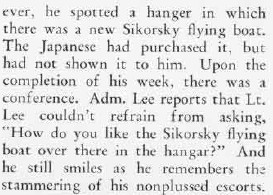
Guess where the Japanese got long-range seaplane technology from in the first place before the war?
In fact, 20-20 hindsight reveals that the entire reach-the-Japanese-home-islands-by-aircraft carrier mentality is a crock of shit. Japan is NOT that far from either Hawaii or our western-most Alaskan islands. Land-based planes could have been bombing the Japanese home islands in 1942 that's right---3 years before we reached them the "long way" on the un-needed give-the-navy-and-marines-a-chance-to-showboat-their-large-aircraft-carriers-and-their-amphibious-warfare-3-ring-circus-against-fortified-beaches and-heavy-casualties central Pacific advance. We could have taken the northern Japanese Kurile islands from Alaska and set up Army long-range bomber bases and started plastering the Japanese home islands IF they really were a threat, which they were not. The truth of the matter is that the Pacific war was a sideshow because the real mortal threat to America was the German military as we raced to over-run them before they fielded weapons of mass destruction. Look at the casualty figures. Germany inflicted 50+ MILLION DEATHS UPON THE REST OF THE WORLD at a cost of only 11 million of themselves, most of which was civilians we killed in bombing raids. The Japs didn't kill much of anybody except the Chinese and nothing on the horrific genocidal millions upon millions scale as the Germans. Don't get me wrong, those people back then stunk and that's why I refer to them as "Japs". They were mass murderers but nothing like the Germans. And look at U.S. casualties in the Pacific war compared to Europe; the narcissistic and egotistical marines whine and cry about their "heavy" losses of less than 20, 000 dead against a weak, low technology foe (they never fought the Germans in WW2) when the TRUTH is OVER 185, 000 ARMY SOLDIERS DIED DEFEATING THE FAR MORE DANGEROUS HIGH TECHNOLOGY GERMANS. The marines don't have a fucking clue about what "heavy" losses are and need to shut their fucking mouths up about who paid the highest price to defeat the greatest threat to America and I don't care what the stupid American people feel or think about this just because they were fighting the hated "Japs" who showed themselves as obvious enemies. The enemies you have to worry about are the ones who do not reveal themselves; the ones whose axes are grinding and when they strike could be fatal, there is no second chances in total war with WMDs if you are stupid and only act in emotional knee jerks to the obvious which would be too late.
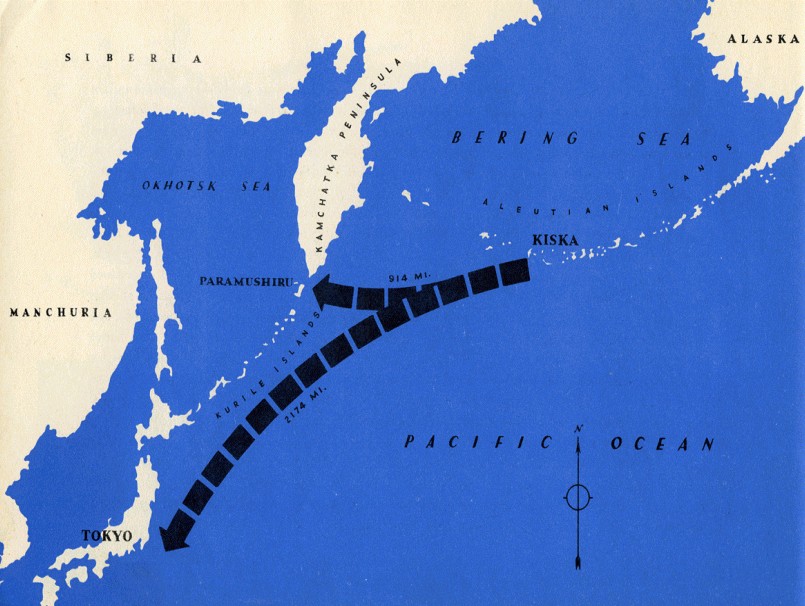
If we had really wanted to put Japan out of the war business we could have finished her off in 1942 by attacking the home islands directly through the Alaska-Kuriles axis of advance. Now I am not saying we could have used the Mars seaplanes to continually bombard the Jap home islands from there; I think with their slow speed a Pearl Harbor Revenge Mission was a one-time deal. However, the as-is Mars seaplanes could have SEA MINED THE JAPANESE HOME ISLANDS IMMEDIATELY ON NIGHT MISSIONS preventing supplies from going down to their island garrisons in the south Army General MacArthur skillfully bypassed with operational art. As we continued sea mining with Mars seaplanes, R&D would have went into a slimmer hull design like the P-6M SeaMaster but in 1943 not the mid-1950s to get 300, 400 and eventually 600 mph speeds with the advent of jet engines. Today's turbofan engines would up the speeds to 700 mph and double the range to intercontinental distances.
If we had struck Japan with two-way Mars seaplanes/tenders instead of one-way B-25s/aircraft carriers the POLITICAL EFFECT would have been registered in the minds of the American public that the best way to employ long-range aircraft power at sea is the SEAPLANE. Of course the aircraft carrier mafia wanted and still wants none of this. Mars seaplane transports that could fly entire Army and marine half-battalions and light tanks would have picked off islands surrounding Japan's home islands with lightning amphibious assaults instead of the ponderous slow and obvious ship bombardments followed by marine frontal assault blood baths. Japan would have been starved and firebombed into submission no later than 1944, precluding the use of the atomic bomb. What this would have meant for today is the U.S. Navy would not be a bogus un-balanced ego club for the bloated over-priced supercarrier mentality based on the "Midway Miracle" myth of aircraft carriers winning the Pacific war when the truth is that U.S. submarines were the ones who strangled Japanese supply liners so our troops could bypass and starve out the Japanese island garrisons taking the slow way to the home islands. We are now saddled with a bogus microcosm of the Doolittle raid living still in our expensive aircraft carriers since WW2 too large to even pass through the Panama Canal and with short range planes inefficient at LA bombardments but able to put on a good PR show for the american public until their airmen get shot down and become torture recipients at enemy Hanoi Hiltons. This Midway and Doolittle Large aircraft Carrier Myth that carriers are the only or best way to get LA political effect from the sea to placate the American people or do the bidding of unscrupulous Presidents has polluted our Navy from its purpose and best efficiencies.
Listen to the Kaiser, Harry Kaiser that is
Martin had the right idea, but didn't realize TIME WAS OF THE ESSENCE. The military mind will not do drastic things except under drastic war time pressure. Its tragic that Martin didn't let Harry Kaiser mass-produce his Mars flying boats to unfuck the Navy/Mc slow surface ships with men inside packed like sardines mentality. Once we started moving BATTALIONS of marines at a time by large seaplanes, it wouldn't be long before BRIGADES and DIVISIONS could land and do surprise amphibious assaults.
The Glenn L. Martin Maryland Aviation Museumwww.marylandaviationmuseum.org/history/martin_aircraft/14_mars.html
Martin Models 170, 193 and 199
XPB2M-1, JRM-1 To JRM-3, Mars Flying Boats
Variants/SpecificationsIn some respects the PBM represented an interruption in Martin's work on huge four-engine flying boats. These had become something of an obsession with the firm's founder and president. In 1938 the Navy ordered a single prototype Martin Model 170 as an experimental patrol bomber, designated XPB2M-1. This was to be the Martin Mars, a 140,000-pound behemoth that was the largest plane in the U.S. military inventory until the arrival of the B-36 intercontinental bomber in 1947. The Mars was originally conceived as a "sky battleship" or "flying Dreadnought," armed with multiple gun turrets, capable of flying long distances with huge bombloads (and marine paratroopers as well). In speeches and articles, Glenn Martin predicted that a single Mars could capture an enemy island or "totally destroy" a rail center or shipyard. A squadron of them, he wrote, could "devastate Tokyo in one trip."
The XPB2M-1 was accordingly treated like a warship. Its keel was ceremoniously laid on August 20, 1940, with Glenn Martin driving the first rivet. Its launching into Dark Head Creek on November 5, 1941, was stern-first, after a bottle of champagne had been duly smashed over its bow. The plane's interior was laid out with separate mess rooms, berths, and washrooms for officers and enlisted men. Its commander had a private stateroom and issued his orders from a desk behind the pilots' seats. A huge bomb-bay, located in the hull underneath the wings, contained racks capable of holding five 1,000-pound bombs each. When it came time to drop them these could slide out on either side along the lower edge of the wing.
Initial taxiing tests in Middle River came to an abrupt end on the Friday before Pearl Harbor when one of the giant laminated-wood propellers threw a blade. It just missed the Martin flight engineer inside the hull and started a fire in one of the huge Wright R-3350 engines. The stricken sky battleship had to be towed closer to shore to allow firemen to put out the blaze. When the smoke cleared serious damage to the starboard wing and number-three engine nacelle were apparent. Repairs took more than six months, by which time the plane's mission had undergone a complete re-evaluation.
Pearl Harbor showed that fast carrier planes made very effective bombers indeed, while German U-boats turned the Atlantic coast into "Torpedo Alley." Thoughts naturally turned to a "sky freighter" as an alternative way to ship supplies to Britain and other battlefronts, invulnerable to torpedoes. The industrialist Henry J. Kaiser suggested that, given Martin's blueprints for the Mars, he could quickly build hundreds of the planes in his west-coast shipyards. Martin's response was ambivalent. Although the company issued calculations suggesting that building the Mars in quantity would be more cost-effective than Liberty ships, Glenn Martin was not inclined to share his prize plane with another manufacturer. Kaiser joined forces instead with Howard Hughes; this was the origin of Hughes' 400,000-pound "Spruce Goose." Like Hughes, what Martin really wanted was government support for an even larger flying boat. Plans for the 250,000-pound Model 163, projected back in 1937, were dusted off and modernized. Building five hundred six-engine Model 193's could win the war, declared Glenn Martin, and company ads frequently depicted it as a postwar airliner. Meanwhile the Navy redesignated the original Mars as a transport, XPB2M-1R, and Martin began to remove its turrets and bombing equipment.
Long before either Mars transports or the Model 193 could have been ready, the tide had turned in the Battle of the Atlantic. The Mars was sent to the Pacific instead, where it built an impressive record between 1943 and 1945, carrying cargoes of up to 34,811 pounds. Particularly impressive was the plane's ability to carry ten tons of cargo on the critical California to Hawaii route.
In January 1945 the Navy ordered twenty more Mars transports, now designated JRM-1. In comparison to the original, their hulls were to be six feet longer and the split PBM-style tail replaced by a single 44-foot vertical fin. Fewer internal bulkheads and an overhead hoist would assist cargo-handling. Maximum take-off weight grew to 148,500 pounds. Recalling the China Clippers a decade before, the first JRM-1 was christened the "Hawaii Mars" in July 1945. It crashed just two weeks later in a landing accident on Chesapeake Bay. Four more JRM-1's were completed in 1945, but, in the wake of V-J Day, the Navy order was cut to six.
Peace allowed Martin pursue the long-cherished goal of selling giant airliners. The Mars was offered in several commercial versions for passengers and cargo. Re-engined with massive four-row Pratt and Whitney R-4360 Wasp Majors, the largest piston engines made, Model 170-21A offered transatlantic range with 58 sleeper or 79 coach seats. Model 170-24A could seat 105 for shorter ranges. But the construction of so many long runways during the war eliminated one of the flying boat's principal advantages. Martin recognized this and began work on a 145,000-pound landplane using the same engines and wings as the JRM-1; the Model 199 was to have a floor level no higher than that of a truck. Other four-engine airliners were already on the scene, however. There were no airline purchasers for either the 170 or the 199.
The Navy did purchase its sixth and last Mars with Wasp Major engines, which enabled the single JRM-2 to carry an extra 18,000 pounds of cargo on the San Francisco-to-Hawaii run. The four earlier planes were eventually re-engined with Wasp Majors as well and designated JRM-3's. All five served in the Pacific, carrying military personnel, Korean-war wounded, blood plasma, and other priority cargo over the same routes as were once flown by the glamorous clippers. Like them, they were duly christened for Pacific destinations: Philippine, Marianas, Marshall, a second Hawaii, and Caroline.
A fire destroyed the Marshall Mars in 1950; the other four JRM's served the Navy until 1956. They were then sold as surplus to Forest Industries Flying Tankers Limited, a Canadian firm, which uses them to drop 60,000-pound loads of water and foam on forest fires. The Marianas Mars crashed in an accident in 1961, and the Caroline Mars was destroyed in a hurricane a year later - but as they approached age 40 both the Philippine and Hawaii Mars were still flying.
Since WW2 when Martin unwisely did not exploit Harry Kaiser's offer to mass-produce his Mars seaplanes to get at least the MANEUVER aspect of seaplanes established, the aircraft carrier navy brass have conspired to eliminate any and all competitors to their ego BS floating airfields. First, they got rid of the small "jeep" escort carriers since it was actually their numbers that smothered Axis submarines so we wouldn't have to suffer the fate our unrestricted submarines did to the Japanese. Next, they got rid of catapult-launched small float seaplanes from cruisers/battleships so there would be no other means to get fighter-bombers into the air from ships than by dry flight deck carriers and to handicap the former's guns so they couldn't hit LA targets ashore lest their risk no man, HE efficiency be realized as the best way to do gunboat diplomacy--with a gunboat. Then, they began to use the Korean War's example where the carriers had no sea control threat and just did floating airfield rivalry with the USAF doing LA to justify ever bigger and less numerous supercarriers. Again, not getting the public ego limelight, the Navy's improved PBMs and P-5M Marlins did great work busting enemy mines and rescuing downed fliers, but who the fuck cares? This enabled the Navy to squeeze the large seaplanes and LTA blimps out of existence by 1962, leaving only the submariners as their only rivals left to control of the navy ego bureaucracy. The submariners are out of sight and out of mind and as a "silent service" not going to steal money and political effect from the American public. They have got their wish to emulate the parts of the WW2 force structure that they want to do, both the navy and the marines and have in the process put our nation at risk of a monumental strategic fucking defeat at the hands of a navy that actually practices and works at naval warfare. We have less than a dozen supercarriers that cannot even field a full compliment of aircraft types to defend itself from air and submarine attacks packed full of 5, 000 men ready to die in the water with no seaplanes or LTA blimps to pluck them out of the ocean. The marines have legacy-worshipping amphibious ships likewise packed with thousands of men ready to die if someone challenges us at sea and decides not to just let them go about their LA PR-grabbing "strike-at-Japan" (Japan is ANYONE the American public at large is pissed off about, today's its "terrsts") make-the-American-public-feel-good operations and evacuations. Our navy and marines have squandered BILLIONS of tax dollars on their warped BULLSHIT.
We have let morons in the Navy and the marines set up thousands of men into a handful of unarmored vulnerable ships poised to do land attack ASS U MING that they are unchallenged at sea and can pompously do whatever we want because "we are Americans". Our Waterloo at sea is impending.
What's worse (is it possible to be worse here?), its not even very good naval land attack. The best way to project high explosives is to PROJECT HIGH EXPLOSIVES ie; naval guns not FLYING HE in a plane and dropping it on the enemy who is going to shoot back. If you think you're such a clever fuck that the planes will be "unmanned" think again and think with facts; you get what you pay for on planet earth. No human in the plane fighting for its survival, guess what? It doesn't survive. UAVs have a 50% crash rate. Are we that rich that we can just throw away half our planes whether we launch them in peacetime or war? If we try to train on these, we will soon have none left when needed in war. This is all great for the MICC-TT that wants to build the least amount of BS for the greatest costs, but its bad for America...you know what the military SERVICE is supposed to be serving? If a nation-state enemy threatens us has need for oil tankers and cargo container ship commerce, the ability to lay LOTS OF SEA MINES to blockade them is the BEST way to strangle them into submission at least cost and deaths. We need long-range SEAPLANES to efficiently sea mine blockade such foes and we do not have them and will not have them as long as the bad WW2 re-enactment morons continue to run the Navy/Mc. If the threat is sub-national "terrst" groups (SNGs), we need submarine amphibious assault ships that can deliver SEAL commandos by small seaplanes deep inland by 3D maneuver and over the shore M113 Amphigavin amphibious light tanks to support them with 2D maneuver. It will take a while to field these, so in the meantime, we need container ships converted into commando carriers with stealthy, long-range, long loiter time fixed-wing prop planes, stealthy NOTAR helicopters and Amphigavins to 3D/2D maneuver deep into closed terrains where SNGs are hiding to root them out. We don't need a 174, 000-man marine corps of loud-mouthed braggadocio asshole narcissist marines who all they want to do is foot-slog or ride in wheeled trucks once ashore after a glorious beach assault or a flaming entrance a bit inland by V-22s. America needs to wake up, WW2 WASN'T ABOUT THE JAPANESE. IT WASN'T ABOUT PEARL HARBOR. IT WAS ABOUT THE GERMANS, STUPID. Stop wasting our money on a Navy and marines hell-bent and going-to-hell worshipping themselves with cultural narcissism that is patently un-American, unethical and exceedingly stupid.
Unfortunately without the go-getters of WWII around, today's DoD is physically dysfunctional; with every electronic mental capability added, a physical robustness is dismantled by our own conscious choice to be lazy and opt for some push-button firepower choice. What arguably, the other greatest man of the 20th century, Teddy Roosevelt warned us about time and time again not do: forget to challenge ourselves physically with our new technological means to preserve human virtue. That the DoD is constantly "emasculating" itself only occurs if the new weapons system is agreeable to all parties, which by groupthink convolution does not equal the most efficient way of doing things, so the muscle continues to be cut. Clearly the 1940-1970 time period was a physically-oriented age and the post-1970s world we live in is increasingly mental and increasingly weaker physically as we diminish the physical as a visible sacrifice to the false god of "high-technology" showing we truly believe. Clearly, if the 9/11 terrorists had been on a Boeing 707 in 1960 with a planeload of WWII combat veterans, their box-cutter knives would have been taken away from them and used to make them into human hamburger. We have almost become the aphysical society of wimps shown in the sci-fi film, "Demolition Man" and warned about by H.G. Wells in "The Time Machine" or President Teddy Roosevelt at the turn of the century. They all saw this aphysical age coming and warned us to stay connected with the physical.
Here is a quick run-down of how far we have gone astray in small anecdotes:
*Manned triple-supersonic SR-71s that can actually photo-map in detail the battlefield retired in favor of ineffective, easily shot-down UAVs because the former bruises the egos of the slower at best double-sonic fighter-bomber jocks running the USAF; resulting in poor air reconnaissance and the enemy escaping in Iraq, Kosovo and now Afghanistan.
*Battleships with guns to saturate land areas with fire to clear them for amphibious forced-entries retired, in their place weakly armed and armored cruisers with small caliber guns that simply refuse to fire in anger since there is no minesweeping capability and staying over the horizon is safer
*Fighter-bombers that could operate from grassy and dirt fields replaced by jets that need long pavement runways on comfy fixed air bases and cannot fly for long without refueling or fly over extended periods of time without need of overhauls due to their complex designs (air cover over U.S. cities to prevent another 9/11 terrorist use of commandeered airliners ramming into buildings had to be halted recently, fighter-bomber planes simply could not continue 24/7/365 air operations) The A-10 "Warthog" flying tank ignored with most collecting dust in the desert when they should have been sent into Afghanistan from day 1 to provide responsive close air support (CAS) to our Army troops from short airstrips. The Russians built a clone of the armored A-9 CAS aircraft which lost the CAS competition to the A-10 called the SU-25 Frogfoot that has been very effective in Afghanistan and even deploys from aircraft carriers!. Armored Short Take-Off and Landing (STOL) A-10s would be ideal for flying air cover over American cities with their long loiter times or flying off from USN aircraft carriers to provide effective slow-enough-to-see-target CAS for ground troops (instead of deathtrap unarmored AV-8B Harrier STOVL jets rolling off USN amphibs without ski jumps and with exhaust nozzles co-located with fuel tanks) but they do not look sexy and fly fast enough to be fighter-bombers to try to win wars by airstrikes alone for the USAF/USN egotists to have multiple squadrons in service. A-10s should be owned and operated by the U.S. Army and AFSOC to escort deep Airborne fixed-wing and Air Assault helicopter penetration operations not the fighter-bomber jock USAF.
*These same fighter-bomber type aircraft navalized to operate from huge, visible, vulnerable aircraft "supercarriers" by giant sling-shots struggle to cope with enemy defenses as more and more electronic gadgets are added onto them since they are not stealthy
* Extremely effective Anti-Submarine Warfare (ASW) Lighter-Than-Air blimps retired in 1962 despite their 100% success rate in WWII defending surface ships from submarines.
* Small catapult-launched Seaplanes from surface ships retired leaving them dependant upon less than a dozen, large supercarriers to provide air cover that cannot even defend themselves much less anyone else
*Tracked tanks and armored personnel carriers that can go off-road, swim, be parachute airdropped are ignored and some retired because there is no institutional Cavalry Branch in the Army with enough clout to insure general purpose mobile warfare forces exist; instead the heavy armor and narcissist light infantry "mafias" want to exchange 70 tons of tank security blanket for a thin box on unarmored, air-filled rubber tires with a hope that their computer screens will somehow keep the enemy from shooting at them as they stay "safe" behind an imaginary line of troops on a non-linear battlefield where friends and foes are intermingled
* Large Seaplanes for long-range ASW, AsuW, LA, mine-laying, CSAR, SOF and maneuver force delivery
The need for the physical must return in the 21st Century or we are finished as a nation-state

The U.S. threatened by both sub-national and nation-state threats must be able to physically project real military power to defeat these threats before they graduate to a "nuclear 9/11" type attack; this means actual ground maneuver that encircles, collapses and decisively defeats enemies to include separating civilians from sub-national terror groups like Israeli leader Ariel Sharon's magnificent Operation Defensive Shield---not just pinprick air/sea strikes regardless of how "brilliant" and precisely electronically guided with sexy gadgets. This means we actually have to be there in person for the war, and this takes muscle and physicality even though general American society is drifting against this towards service-industry "virtual reality" that doesn't actually produce any durable goods (hardware) just software (BS) for the more physical to use or the majority to use as an escape. If you look into it, our costly electronically gadgeted and physically weak platforms are costing us more and more money such that we have less and less of them. This "death spiral" is hitting the Navy so hard that its retiring its S-3 Viking anti-submarine warfare aircraft, soon its tanker S-3s and electronic warfare EA-6Bs. The result will be F/A-18 Hornets doing EVERYTHING except what helicopters and turboprop Greyhound aircraft do. The absurdity of fuel-hungry fighter aircraft trying to air refuel other fuel-hungry fighters is beyond words. The stage is being set for a third world country diesel/electric submarine to sink one or more of our Nimitz class supercarriers with 5,000 men aboard.

Powering the DoD's nearly 6 decades long meltdown is the lowest common denominator groupthink of the service branches and the existentialist egotism driving their sub-factions. Simply put, DoD does things that please the egos of the ruling powers not what is the best and most cost-effective approach to the problem. Thus, towards the end of the enlightened physical age, the jet-powered seaplane on the verge of complete equality with landplanes was abandoned because it didn't have a powerful enough institutional bureaucracy with individual egotists fighting for its existence and fulfillment (the shore patrol community wanted it but has less clout than the naval aviator and aircraft carrier, surface ship and submarine "mafias").
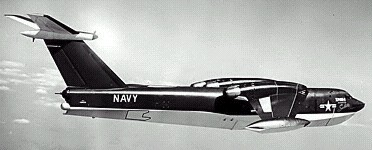
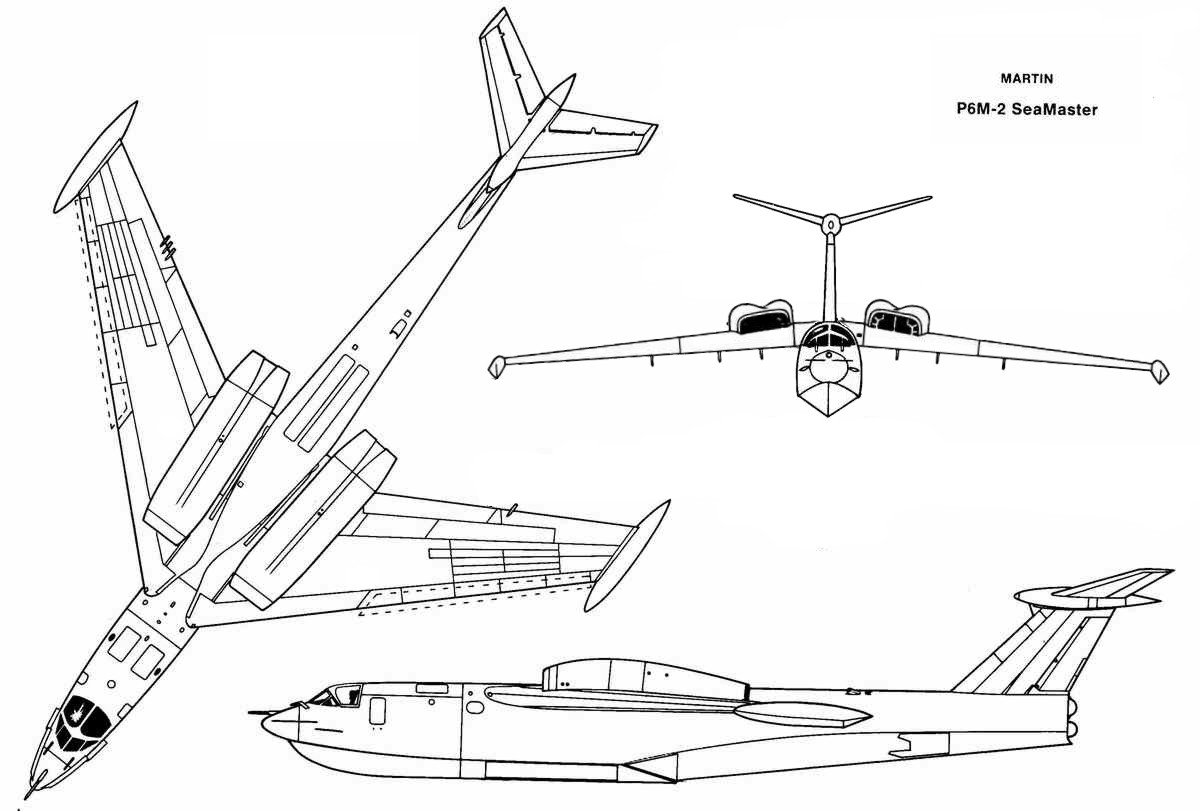
P-6M SeaMaster coming ashore!
With dolly wheels
Taxi in the water
The U.S. Navy had developed the amazing P-6M SeaMaster heavy jet seaplane bomber that could actually fly about 100 mph faster than the land-based B-52s while delivering a heavy bombload. The old handicap of the seaplane's boat shape ruining its aerodynamics was finally solved after 4 decades of struggle by the brilliant engineers at Martin Aircraft Company, yet the Navy "gave up the ghost" and has been suffering ever since. Until very recently the name "Martin" has not been connected with aircraft design and production as the company gave up after the SeaMaster backstab by the short-sighted Navy brass playing their favorites. The Aviators would instead deliver nuclear bombs by A-3D SkyWarrior and A-5 Vigilante jets flying from aircraft carriers, escorted by the "black shoe" navy with SUBROC nuclear depth charges to kill enemy subs. The Submariners would launch Poseidon nuclear SLBMs to hit enemy cities if they did a first strike. The Patrol Navy would shut up and patrol the oceans in civilian airliners to keep the rest of the Navy informed where the Soviet Navy was at so they could do battle and get the glory. In other words, the patrol navy was told to shut up and be second class citizens as the other ego clubs absorbed the taxpayer's money to perpetuate their club activities regardless of what was best for the common defense of the American people. Decades later, we now have a dozen supercarriers and nuclear missile submarines sailing in circles in the ocean and NOT A SINGLE AIRCRAFT THAT CAN LAND IN THE WATER to control the seas from sub-national terrorists who could wipe out an American city by sneaking a WMD device in unannounced.
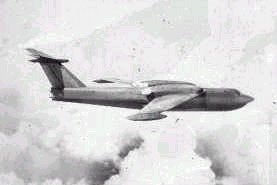
www.amazon.com/exec/obidos/tg/detail/-/1591148782?v=glance
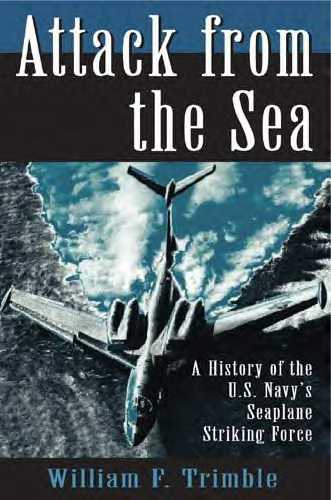
Attack from the Sea: A History of the U.S. Navy's Seaplane Striking Force
by William F. TrimbleNaval Institute Press, $27.95
Hardcover | 248 pages | 1591148782 | March 2005An award-winning aviation historian chronicles the Navy's efforts to develop a powerful sea-based strike force through the use of long-range attack seaplanes supported by surface ships and submarines. William Trimble traces the concept back to the early 1930s when American strategic planners sought ways to mount an assault across the Pacific with minimum air support. But it was not until 1950, when the Navy was threatened with losing its big carriers and long-range aircraft, that the idea of a Seaplane Striking Force was resurrected. Lured by breakthroughs in seaplane performance and the promise of the turbojet-powered Convair SeaDart fighter and the Martin SeaMasterack flying boat, the Navy believed it could challenge the Air Force in the strategic role, the author explains, but found that the technology did not live up to expectations.
This book investigates the difficulties of weapon system procurement within the context of strategic realities, inter-service rivalry, and constrained defense budgets. It also looks at an alternative weapon system that the Navy saw as a means of extending its conventional reach and as a complement to the carrier and land-based bomber used for nuclear deterrence. That weapon, however, proved unsuccessful in the end. The author helps the reader understand that while conceptual and operational flaws kept the Seaplane Striking Force from achieving the goals set for it, the idea of a mobile weapon system capable of long-range attacks from the sea remains valid. Other books touch briefly on the subject, but this is the first to examine the concept in depth.
William F. Trimble, a former Lindbergh professor at the National Air and Space Museum, is chair of the history department at Auburn University. He is the author of several books.
ITS AN EXCELLENT BOOK, regardless and helps explains why the Navy is so fucked up today.
Lessons Learned
1. Do not share difficulties with assholes trying to stop what you are doing
The villain here who cancelled the P-6M SeaMaster jet seaplane bomber was narrow-minded pro-aircraft carrier asshole, a second stringer from WW2, asshole Admiral Pirie inadvertently helped by Martin not cutting costs and fixing design problems quietly. If you have a new important capabilities-delivering platform, get a chunk of money and time to develop it and get the bugs worked out QUIETLY, THEN ask for production money, and DO IT QUICK. Field it. Get it into operation. Then tinker with new applications. With DoD you are not dealing adults you are dealing with imbecile egomaniacs wed to vanity platforms.
2. The Seaplane is going to return when the fucked up, large aircraft carrier Navy gets sunk probably by the Red Chinese in the coming war with Taiwan
Today, we could and should actually field the Seaplane Striking Force (SSF) OFF THE SHELF.
Read that again.
We said OFF-THE-SHELF.
* Russian A-40Ms can be the "SeaMaster" patrol bombers.
* F-35B STOVL Joint Strike Fighters can be the "SeaDart" air defenders.
* Shin Meiwa flying boats with BLC for STOL can be the "Tradewind" resupply, ASW and CSAR birds.
* Amphib ships, sealift ships and nuclear subs are available to do refueling and act as mini-aircraft carriers.
What's the Navy's excuse today?
They are morons still in love with reliving the Midway myth.
A second edition of this fine book should point out that ALL of the elements for a SSF are available TODAY off-the-shelf, and put the heat back on our Navy to adapt to modern warfare demands as they are not how we wish them to be

Now let's look at bombing. For the current U.S. Navy to aircraft bomb inland it needs an aircraft carrier to house, fuel, maintain, launch and recover fighter-bombers that are basically sexy-looking "lawn darts" that need to be burning fuel at a high rate to produce forward thrust so they can stay moving fast through the air to generate lift over their thin wings to keep flying. They have to be flung into the air by a steam slingshot and then when they land they come in hot and have to be snared by a tailhook wire because they are "darts" that want to dive not "seagulls" that curve their wings to generate lift to stay aloft almost motionless in the sky. So our huge nuclear aircraft carrier standing several stories tall, longer than a football field holds 5,000+ men and 80 aircraft, of which half are there to defend the carrier itself from attack! Removing this overhead, you have 40 expensive ($56M for one F-18 Stupor Hornet), complex fighter-bomber darts less nimble due to carrier landing/take-off gear and training than a land-based fighter-bomber dart and pilot flying inland to bomb targets with a total of 200,000 pounds or 200 x 2,000 pound precision guided bombs. This strike force can ideally hit 200 things on the ground in one mission always keeping in mind there is no perfect or near perfect "situational awareness" and more and more we are blowing up decoys, civilians and dirt with more and more expensive bombs as the enemy employs C3D2 (Camouflage, Cover, Concealment, Deception and Deceit) measures against us.
However, this entire strike force unravels if the enemy resists at sea and can get just one bomb to explode on a crowded flight deck full of fuel and bomb-laden fighter-bomber darts as the USS Forrestal fire in 1967 proved. Visible from space satellites, its highly likely that a single Falklands war-style precision anti-ship missile (ASM) or seamine strike on a nuclear supercarrier will prevent 200-at-a-time target strikes from the TacAir onboard. However, the nuclear aircraft supercarrier employs 5,000+ seamen on a job more exciting than flipping burgers in CONUS, gives 200+ pilots an excuse to have exalted egos, senior officers a chance to be on a staff and one to be "Captain Kirk" every few years. Its a huge ego club and welfare institution. This is why the carrier mafia hates the battleships and had them retired; they can put more ordnance on target by shooting it through a cannon tube and not having any pilots or aircraft fly overhead to drop it (or get shot down to be KIA, MIA or POWs) at a far lesser costs than aircraft supercarriers, whose original purpose was sea control/combat against enemy ships not shore bombardment. You can't walk into the officer's club in a flight suit and pick up chicks like Tom Cruise in "TopGun" if you are a khaki-clad gunnery officer on an Iowa Class battleship that has not been romanticized by Hollywood.
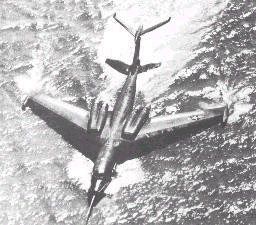
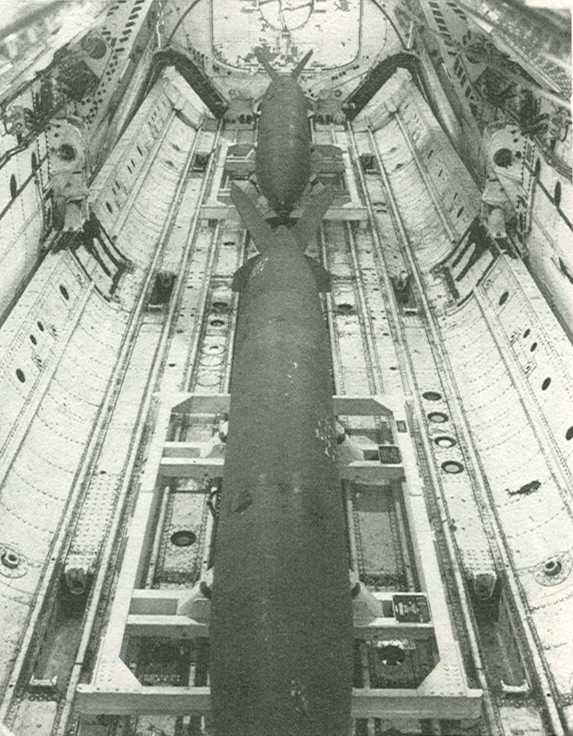
http://en.wikipedia.org/wiki/Image:P6M_SeaMaster.jpg
Wikipedia states:
"The P-6M-2 was certainly an impressive aircraft; its Mach 0.9 (1,103 km/h) performance 'on the deck' could be equalled by few aircraft of the time and not too many more now. A USAF B-52 can only reach Mach 0.55 (674 km/h) at low altitude. The planes were built incredibly tough, with the aircraft skin at the wing roots over an inch (25 mm) thick."
Now back to 1960 and the fabulous P-6M SeaMaster heavy bomber jet seaplane. Had the USN been driven by intellect and humility--not factions-within-the-branch egotism, these bombers would have been fully fielded and deployed and their superior 600+ mph, carrying 30, 000 pounds of bombs flight characteristics revealed busting the myth forever that a plane that lands on water cannot fly as well as one that can only land on land. The plan was for these amazing seaplane jet bombers to operate from modified surface amphibious ships by beaching themselves on a special stern ramp. After being refueled and rearmed, the ships would ballast their sterns down and the SeaMaster would float away for an unlimited length take-off run.
Mobile Forward Arming & Refuel Points for the Seaplane Strike Force (SSF)
By Landing Ship Dock (LSD)
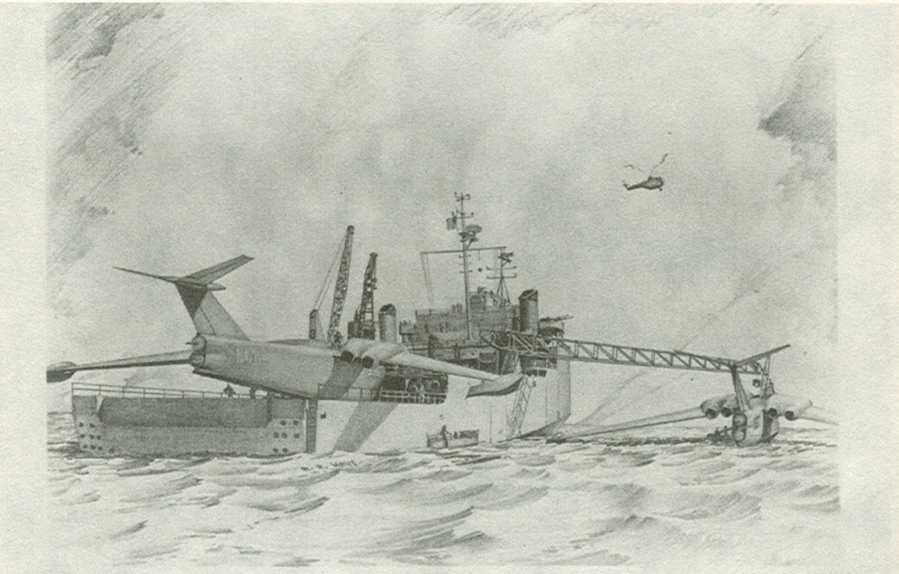
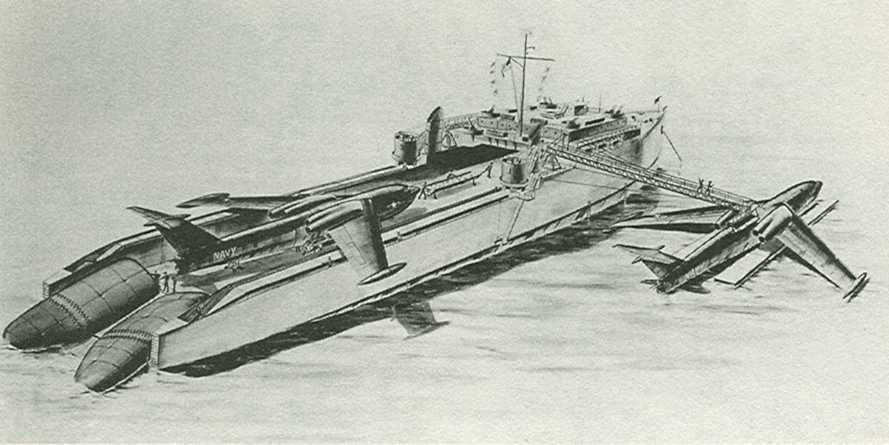

By Submarine

By Repair Ship Seaplane Tender (AV)
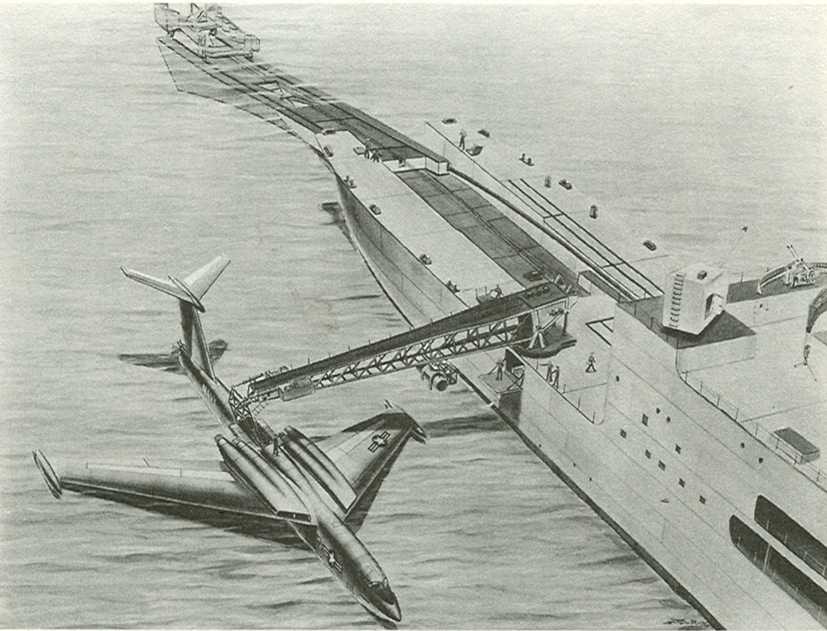
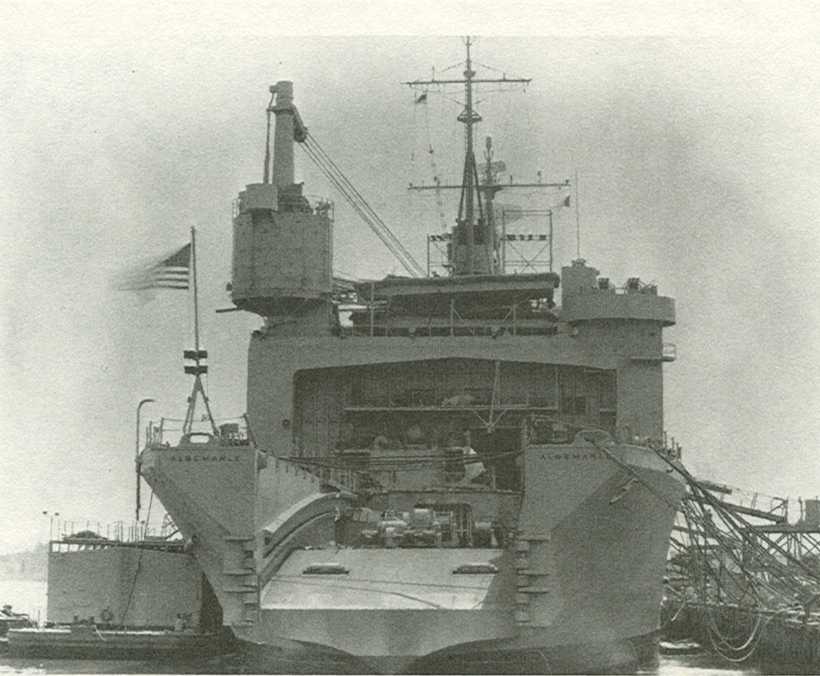
In An illustrated History Seaplanes and Flying Boats, Maurice Allward writes:
At that time the Navy had dreams of creating a strategic Seaplane Striking Force (SSF), to help rival. The global influence of the U.S. Air Force Strategic Air Command. This concept was described by the then Assistant Secretary of the Navy for Air, in the following terms:"Also promising, I think, is the long-range attack seaplane. This has an additional advantage which the carrier force lacks - they can be widely dispersed overseas in many small, relatively inexpensive, units, in areas where maintenance of other forces would be too costly. Two or three seaplane squadrons in an area thousands of miles from American soil could maintain a threat to an entire flank and require a diversion of enemy defenses from other fronts, without exposing vulnerable fixed bases to an enemy's counter-attack. Failure to exploit this advantage would leave an enemy able to concentrate his forces in areas closest to the targets he seeks in the United States. With perhaps half a dozen seaplanes, a single tender, and a pair of tanker submarines, we could provide an integrated force that an enemy could not ignore."
To create the SSF, the Navy had ordered an initial fleet of 24 SeaMasters, but through the delay caused by the redesign work and the accompanying steep rise in costs, six aircraft were cancelled. The first production aircraft flew in February 1959, and the Navy boasted how well their new aircraft could mine the Black Sea, and claimed it was "a major new anti-submarine warfare system. . . able to go after enemy submarines in their home ports."
Steep costs? COMPARED TO WHAT? Compared to over a dozen different fighter/trainer aircraft types? Compared to a dozen bloated aircraft carriers? This is non-sense. The Navy carrier brass didn't want competition from the seaplane, this was about POWER AND EGO not about cost and what's BEST FOR AMERICA. Contrast the Navy BS and imagine that the USN had been run by adults and kept itself in the seaplane jet bomber business to the current day. A half-squadron of modernized, turbofan-engined 6 x P-6M SeaMasters operating from a couple seaplane tenders each carrying 40,000+ pounds of bombs totaling 240,000 pounds of bombs could out-deliver the entire strike force of a Nimitz-class nuclear supercarrier at a fraction of the costs of keeping a floating city going.
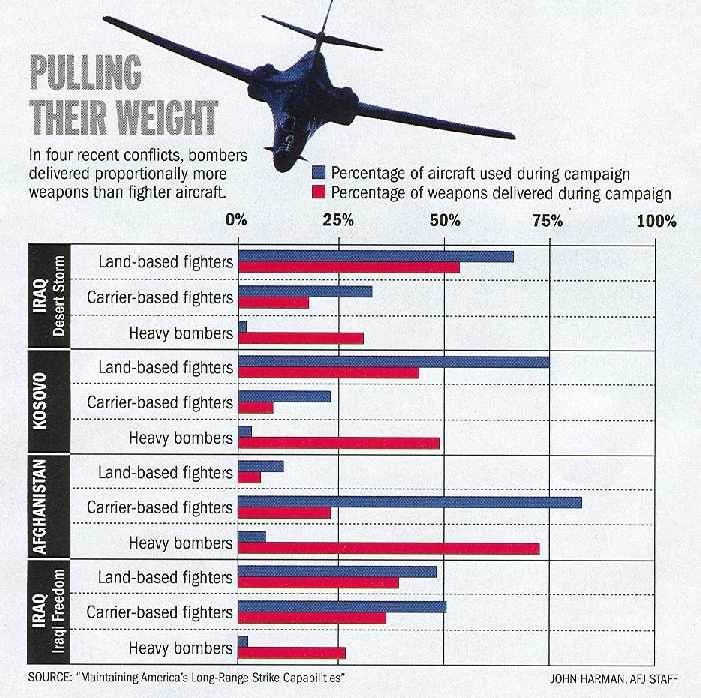
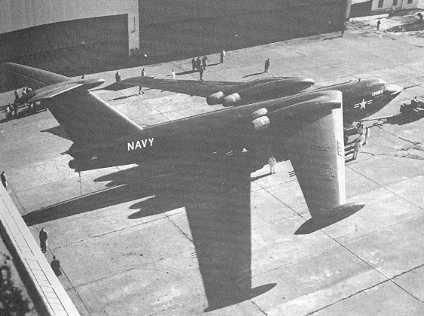
In fact, when you examine who is doing the "heavy" lifting bomb-load wise for the war in Afghanistan, its not the fighter-bomber "lawn darts" either AF or USN, its the P-6M's old nemesis, the mighty B-52 doing the lion's share of the work! (See graphic above). But the ironies here only expand, the mighty B-52s have to fly from thousands of miles away from Diego Garcia to work their heavy bombardment magic which is universally feared by our enemies as the Iowa class battleship's 16 inch guns are. Physical size and effect does matter in warfare, but you have to value the physicality of size and work to get it---mouse-clicking everything and cutting physical capabilities gets you LESS not more combat power. Why we cannot learn from the past and improve our physical capabilities and at the same time add a mental precision begs the question if those running DoD can chew bubblegum and walk without being rushed to an emergency room or given the Heimlich maneuver. In contrast, the P-6M SeaMaster bombers could have operated much closer to Afghanistan increasing their sortie rate and bombload since they wouldn't need as much fuel or time to get here as B-52s from distant land bases.
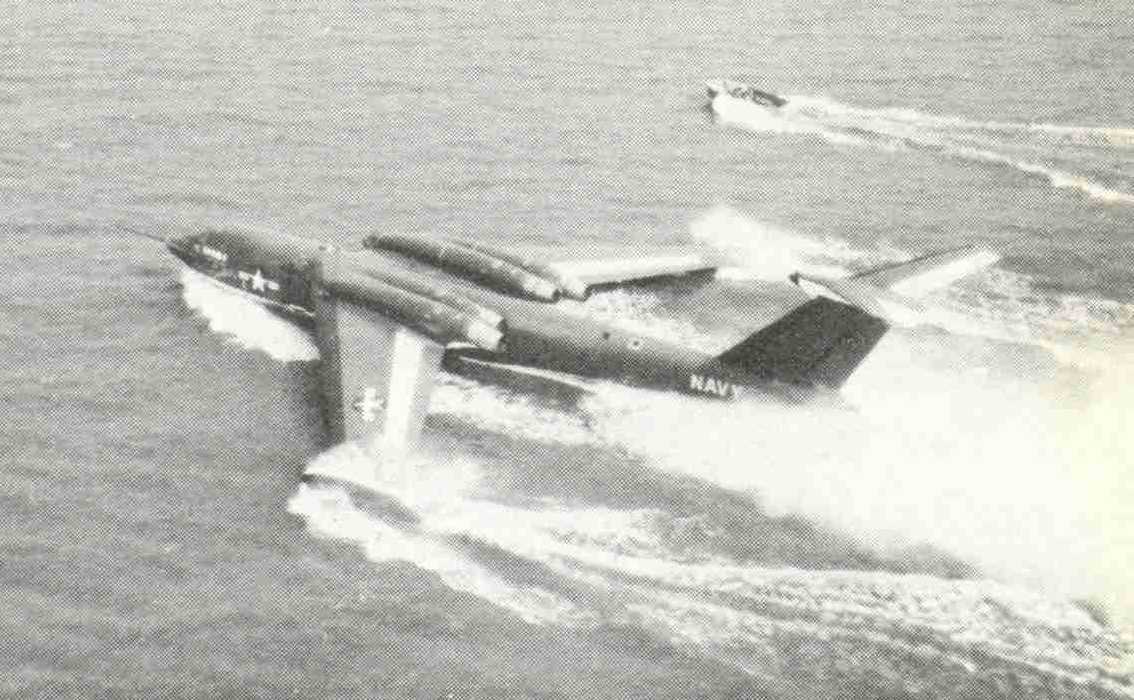
What's really embarrassing is that years later after the P-6M SeaMaster was cancelled, the USAF would have to use B-52s to help the Navy survive on the surface and do sea control and train to lay sea mines. The USAF would have to provide air tankers so Navy lawn darts didn't run out out fuel doing land attack missions since the stupid USN also cancelled the Tradewind seaplane combat transport and tanker.
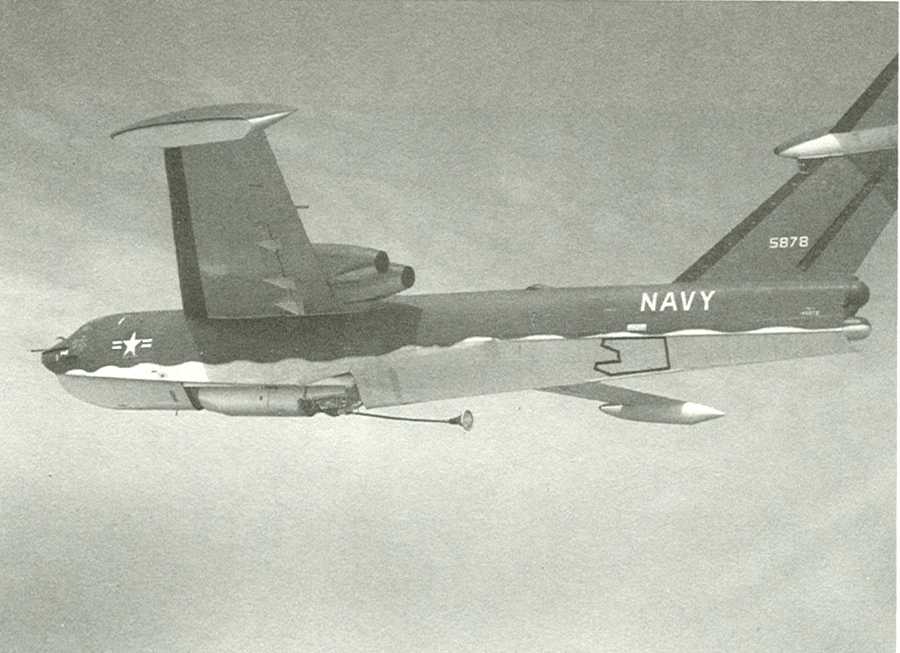
And in another irony, today the "aircraft carrier mafia" that rejected the SeaMaster now has no optimized aircraft to do in-flight refueling, in fact naval aviation is dying with the retirement of S-3 Vikings, A-6 Intruders and F-14 Tomcats forcing one bloated, under-powered F-18 "Stupor Hornet" to try to do all missions badly. Had the Navy been less selfish and snobby, SeaMasters and Tradewinds could have been "seaplane KC-135s" and helped the aircraft carrier lawn darts get fuel with bomb bay in-flight refuel systems (see photo above).
Another Missed Opportunity: Nuclear-Powered P-7M SeaMaster Seaplanes
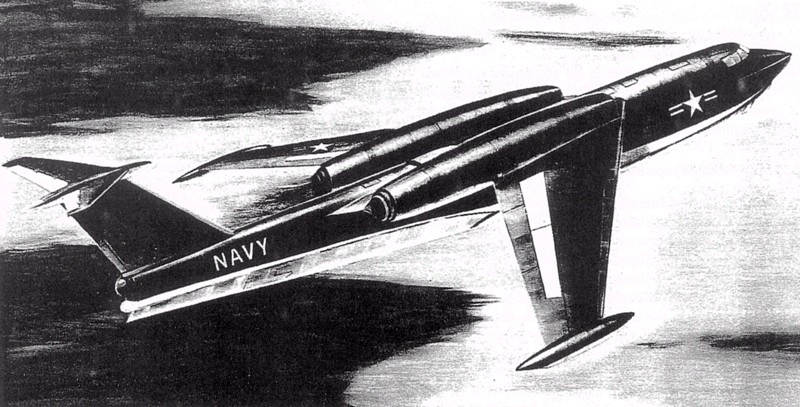
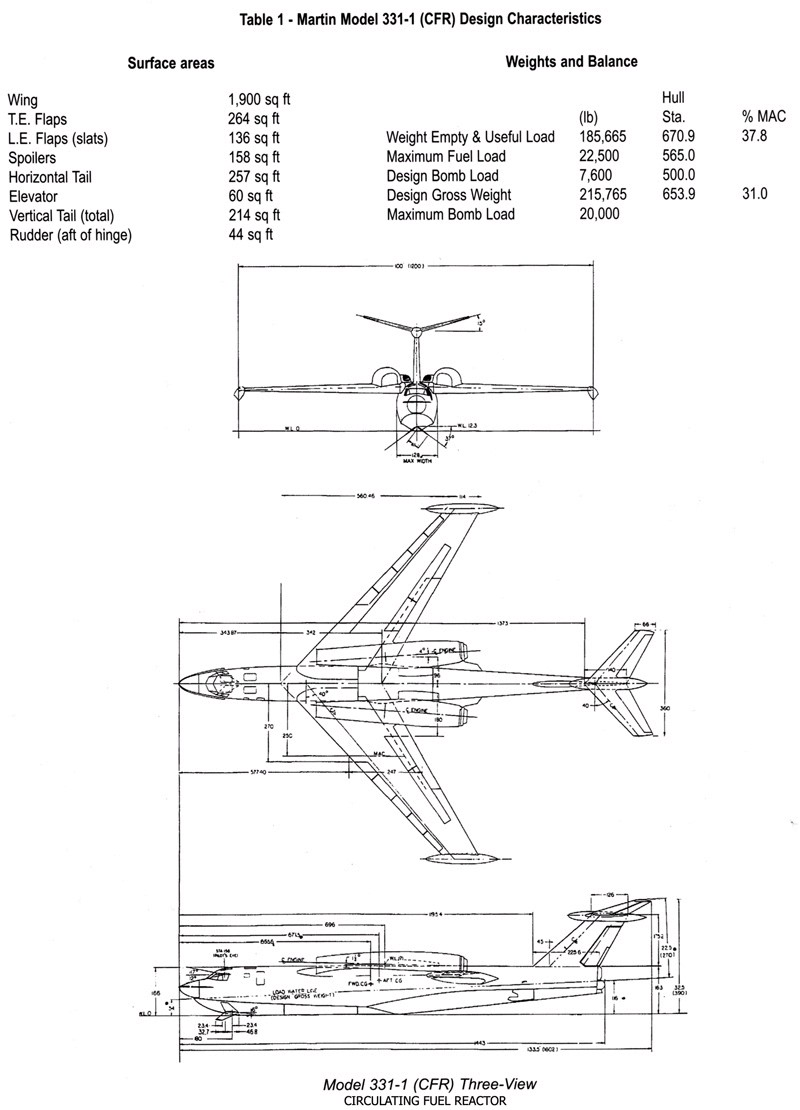
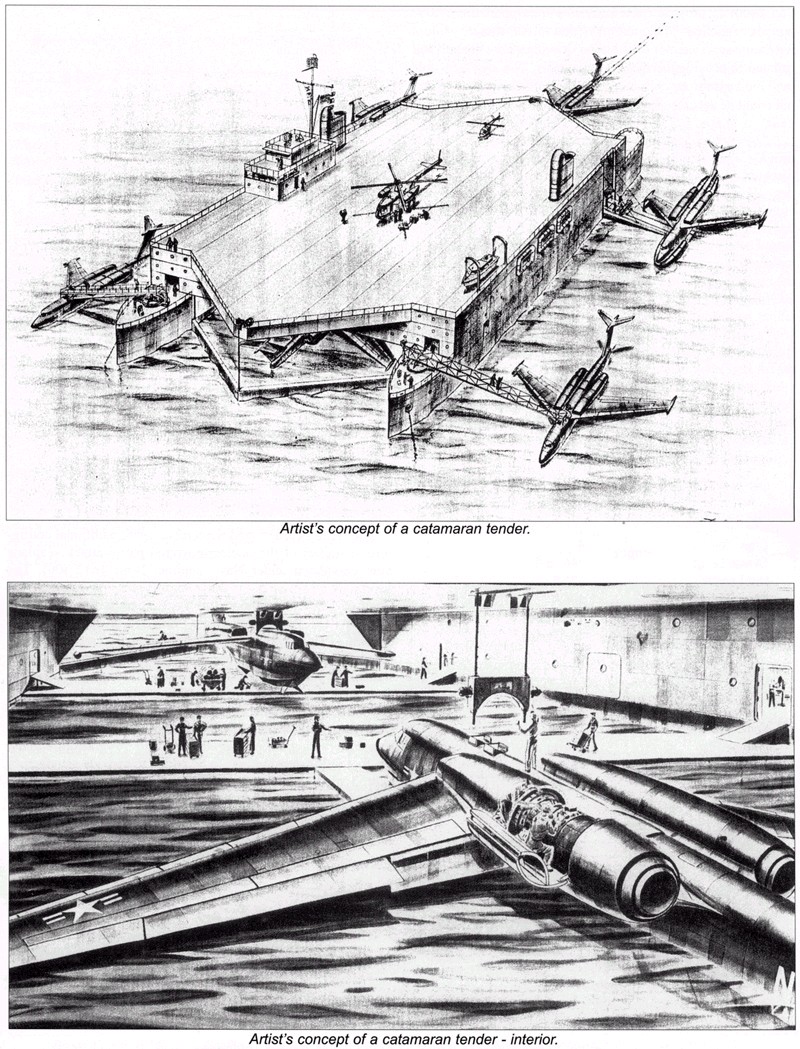
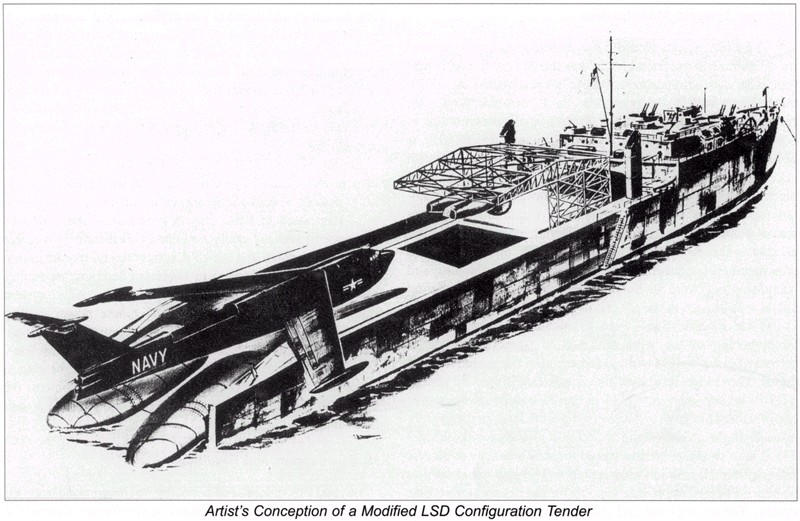
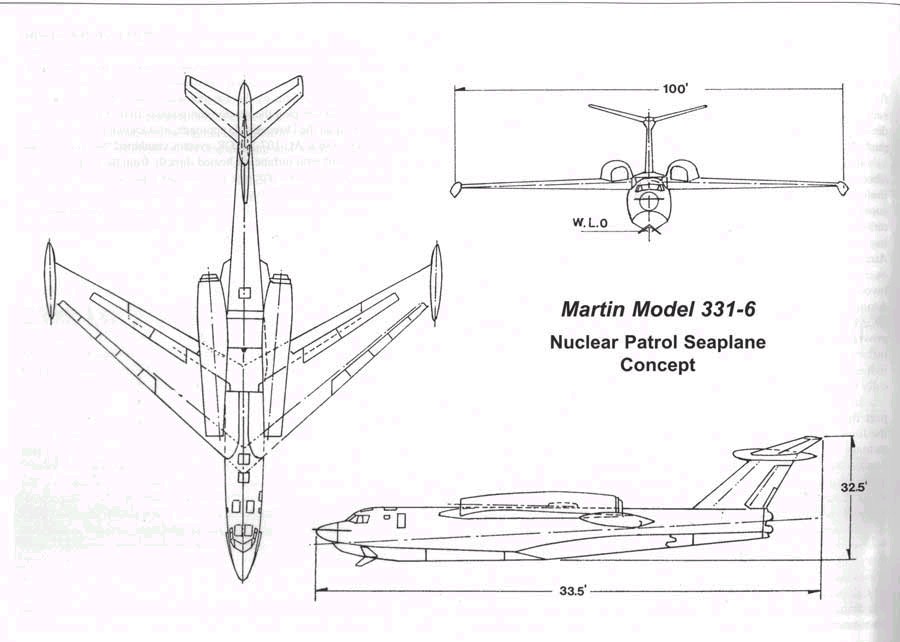
Had the navy not be stupid and snobby, the SeaMaster design could have progressed into the P-7M nuclear-powered version that could fly literally for weeks and months at a time! Nuclear SeaMasters would only need to stop to get rested crews and re-arm with high explosive and super high explosive (nuclear) weapons as fuel to fly would be not needed. In fact, the nuclear reactor could even power laser weapons so stopping for HE/SHE weapons from a ship or sub tender wouldn't be necessary. This all came to a stop when the Navy brass opted to keep on wasting $BILLIONS on bogus stuporcarriers.
Will our next nation-state challenger and us battle for Taiwan?
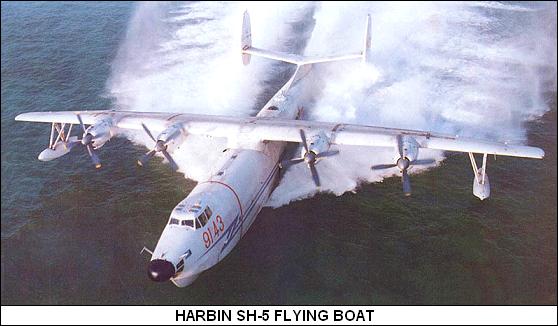
Let's turn our attention to combat against a capable nation-state like Red China (we do not mince words here). If they seamine the waters and patrol with attack submarines an exclusion zone around Taiwan, our nuclear aircraft carriers filled with 5,000 potential flag-draped coffins will be hard-pressed to get their fighter-bomber lawn darts into position to help defend Taiwan by air interception of CHICOM fighter-bombers and gulp...bombing raids on mainland China (may be politically off-limits). If USN Carrier battle Groups venture close to Taiwan they will be spotted from CHICOM ocean surveillance satellites and overwhelmed by missiles. Ditto for any marine amphibious ships needing to get through the seamines to land WWII clone line infantry who with a ruck on their back's worth of supplies would be yet another mouth to feed for an island cut-off from the outside world. Game over. Red China bombards Taiwan like the Japanese laid siege to Corregidor in WWII until they surrender from starvation. They win and successfully knock off a U.S. ally, U.S. superpower status is gone as they can pick off tiny free societies at will. This is not what America is all about.
The Fisher Report: Beware of Red Chinese Light Tanks
www.uscc.gov/researchreports/2004/04fisher_report/04_01_01fisherreport.htm
THE IMPACT OF FOREIGN WEAPONS AND TECHNOLOGY ON THE MODERNIZATION OF CHINA'S PEOPLE'S LIBERATION ARMYA Report for the U.S.-China Economic and Security Review Commission
January 2004
by Richard D. Fisher, Jr.
Center for Security Policy
While we are fumbling instead of adapting and getting stronger from Iraq, Red China is putting together a dangerous Surveillance Strike Maneuver Capability to do nation-state warfare with a sophistication of fire, maneuver and deception we are not even close to matching.
We better get our heads out of our asses and stop our "RMA Jesus" computer crap and start building for decisive 2D/3D air/ground maneuver using our existing M113 Gavin light tracks and some seaplane transports.
Details: www.geocities.com/strategicmaneuver
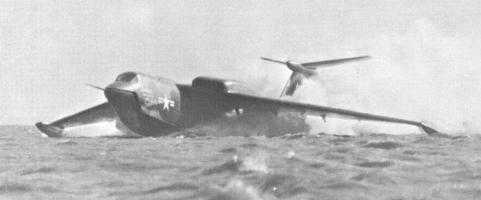
Game is not over if the USN (or anyone with some balls in DoD) has seaplanes! They could simply be C-130s fitted with floats or skis, a modern version of the P-6M SeaMaster, A-40 turbofans bought from Russia or Les Grau's Wing-In-Ground (WIG) effect seacraft. The point is that America can still control the air she flies through and this means even if Taiwan's runways are cratered and covered in chemical agents, all she needs is some near shore waters clear and the seaplanes can land troops, swimming M113A3 Amphigavin light tracked AFVs and supplies to reinforce the island and keep it from falling into CHICOM hands via mobile, area defense by AMERICANS standing in solidarity not ambiguity--with the free people of Taiwan. But (mental) talk is cheap, if the U.S. does not develop the PHYSICAL capability to project power by fixed-wing aircraft that can land on water and fully utilize ALL of its fixed-wing land-based aircraft (militarizing all unused passenger 747s into cargo with airdrop side cargo doors, upgrading ALL C-130s to "J" propfans and in-flight refueling like the RAF's C-130s have) via parachute land airdrop and very short airlandings, then an enemy anti-access strategy could spell victory for the communist totalitarians in Red China.
Clusterfuck 101: The future of the marine corps is seaplanes or it has no future: Not Enough Reform results in the Navy/Mc still stuck in WWII amphibious assault time warp
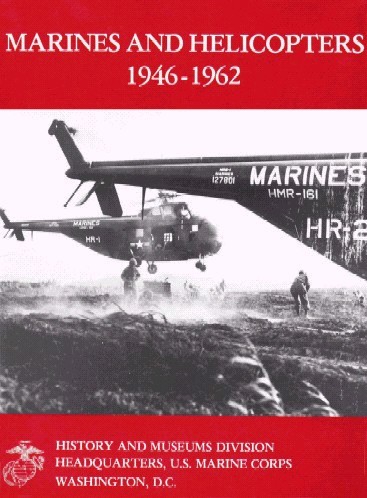
Helicopters at best provide only a slightly better stand-off and dispersion than the WWII amphibious assault using water landing craft. The use of the nuclear weapon as the "boogie man" of a large devastating area weapon fails to justify Navy/Mc reorganization until there are many nations with nuclear weapons. However, today's precision guided weapons can achieve fatal lethality against massed surface amphibious ships like one nuclear weapon can and its high time the USMC heed the post-WWII Shephard board's radical conclusions and stop massing troops in vulnerable surface amphibious ships and start using jet seaplane transports to project combat power from the sea. EXWAR reports:
www.exwar.org/Htm/8000PopE1.htm
Amphibious Warfare: Cold War Era1946 - Lieutenant General Geiger warns that atomic weapons threaten amphibious assaults In July 1946, the Navy supervised two atomic tests at Bikini Atoll in the western Marshall Islands. These tests, dubbed Operation Crossroads involved more than 70 surplus ships and craft anchored in Bikini lagoon, and were mainly designed to evaluate the effect of atomic weapons on warships. Operation Crossroads examined the effects of both air and underwater explosions. During Test Able, which took place on 1 July, a bomb was detonated at 518 feet above the surface of the lagoon. Five ships sank, and the resulting blast, shock, and heat caused physical damage to almost 80 percent of the warships of the target fleet. Officials also estimated that, had the ships been manned, radiation effects would have incapacitated the majority of any crewmembers caught topside. Test Baker was conducted on 25 July. It involved an underwater burst that sank nine ships, including the aircraft carrier Saratoga (CV 3) and two battleships. The mist that resulted from the burst also led to the widespread radioactive contamination of surviving ships and much of the atoll.
Test Baker, Operation Crossroads, 25 July 1946.
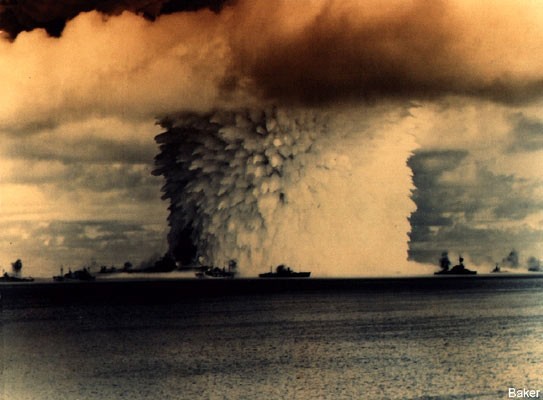
Photo courtesy of the U.S. Department of Energy.
Lieutenant General Roy S. Geiger, Commanding General, fleet marine force pacific was the senior marine present at the tests. Immediately afterward, he dashed off a correspondence to the Commandant of the marine corps, General Alexander Vandegrift, summarizing his view of Crossroad's implications for the future of amphibious operations - and the marine corps itself. To Geiger, the test's results necessitated a complete review of amphibious doctrine. A future enemy would likely have large numbers of atomic weapons at their disposal. Given that, World War II-style amphibious operations such as those that had occurred at Normandy or Okinawa - operations that depended upon mass and the concentration of forces - would no longer be feasible. An assembly of warships, amphibious shipping, and small boats off a hostile coast would be a perfect target for atomic attack. Instead, Geiger believed that "future amphibious operations will be undertaken by much smaller expeditionary forces, which will be highly trained and lightly equipped, and transported by air or submarine." In addition, these assaults would be accomplished "with a greater degree of surprise and speed that has ever been heretofore visualized." General Vandegrift was not as convinced as Geiger that atomic weapon employment would become a common element of military operations. Nevertheless, he felt compelled to study the problem thoroughly. He appointed a special board consisting of Major General Lemuel C. Shepherd, Major General Field Harris, and Brigadier General O.P. Smith and charged them with determining how these weapons would affect future amphibious assaults. In turn, much of the board's supporting research was conducted by officers from marine corps schools, particularly Colonels Merrill B. Twining and E. Colston Dyer.The board reported back to Vandegrift in December 1946. Their review stated that the marine corps would indeed have to make fundamental changes in the way it conducted amphibious assaults if it was fighting a nuclear-armed foe. They were confident that a dispersed amphibious task force approaching an enemy coast could reach its objective without significant damage. Likewise, they believed that an enemy would not employ atomic weapons against a U.S. landing force once it was ashore and engaged in combat unless they were willing to obliterate their own troops as well. However, the board emphasized that waves of slow, relatively closely packed landing craft and amphibious tractors moving marines to the beach would be a tempting target for atomic attack. Had Japanese forces at Iwo Jima had these weapons, the board observed, they could have destroyed the two marine divisions involved in the assault as they moved from ship-to-shore. To avoid this, the board members recommended that the marine Corps develop a method by which its units could be airlifted by helicopters from the decks of their amphibious warships to weakly held points behind the enemy's coastal defenses. These air-mobile units would be able to rapidly engage and mix with hostile forces on the ground and would open the designated landing beaches for reinforcements carried ashore by landing craft or even fast seaplanes. An assault of this nature would deny the enemy a lucrative target for an atomic strike but would also permit the landing force to mass its efforts at decisive points. General Vandegrift concurred with the board's conclusions. However, there were many obstacles - and much knowledge to be gained - before the vision first promulgated by the board was realized. The most obvious obstacle was that fact that the marine corps did not operate helicopters in 1946. Moreover, helicopters at that time were generally small limited-capability aircraft that could carry only light payloads. In addition, the plan was not well received in all corners of the Navy and marine corps. Before they could even acquire helicopters, marine proponents of the new concept would have to convince the Navy to carry these aircraft on board its ships, something the Navy planners had not expected to do. Within the Corps itself, there were some who perceived helicopters as a threat to both fixed-wing close air support aircraft and ground-based artillery. Despite these challenges, vertical envelopment and dual air and surface amphibious assaults eventually became second nature to the marine corps and the Navy. Though their forces never fought in a nuclear environment during the Cold War years, Operation Crossroads and the possibility of atomic combat ultimately led to significant changes in the way the U.S. naval services would conduct all amphibious assaults.
Sources:
Lieutenant Colonel Kenneth J. Clifford, Progress and Purpose: A Developmental History of the United States marine corps, 1900-1970 (Washington, DC: History and Museums Division, Headquarters, U.S. marine corps, 1973. Allan R. Millett, Semper Fidelis: A History of the United States marine corps (New York: The Free Press, 1991).
The National Security Act of 1947 has been a disastrous mistake pitting firepower in the USAF and USN permanently at odds with maneuver (Army and marines) and essentially ruining our national ability to fight wars in the most powerful, efficient joint ways possible. Making the marines a separate service has been an ego-laden disaster with them simply perpetuating WWII style amphibious assaults by packing men by the thousands into surface ships that sit in the middle of the ocean for months at a time so they are nearby, then landing them in essentially the same vulnerable and frontalist ways they were landed with heavy casualties in WWII. Having a SMALL landing force organic to the Navy fleet was vital at the turn of the century in order to seize advanced naval bases to secure coal supplies for ships. In WWII, these bases were "work-arounds" to the handicaps of land-based airplanes not having adequate range or in-flight refueling. Its not pretty, but today we can get our planes to where they need to be anywhere in the world. While land bases are needed to sustain long-term operations via supplies they are hard to come by using foreign nation-state soil. If we can retrieve supplies from ships at sea and without them getting sunk, this reduces the need for advanced naval bases to nil. Thus the U.S. marines have no mission except to be a "door opener" by seizing a port or a beach for U.S. Army forces who actually inland warfight to defeat enemy armies and overthrow nation-state governments. But to open this door in today's increasingly lethal surveillance strike systems so visibly demonstrated on land in the 1973 Yom Kippur War and at sea in the Falklands Islands War in 1982; the small but expensive MEU of a tiny battalion of foot-sloggers in vulnerable WWII amphib surface ship clones is a recipe for national disaster like the HMS Repulse and Prince of Wales being sunk by Japanese air strikes was to Britain in WWII. In the 1991 Gulf War, a SCUD Theater Ballistic Missile (TBM) landed within 300 meters of the USS Tarawa amphibious carrier with 2,000 marines inside and a nearby pier packed full of explosives and fuel. 300 meters closer and we would have had 3,000 men dead and several ships wiped out. Then there is the Navy's dying aircraft carrier wings that will soon be without S-3 Viking ASW/tanker aircraft and their worn-out civilian airliner P-3 Orions that are not being replaced. The stage is being set for an enemy diesel-electric submarine to smoke one of our carriers full of marines and sailors. The MEUs that can be forward-deployed offer the enemy a 4-digit casualty target that in itself could cause the conflict to be lost by a collapse of American public support since the American people have been pumped up with lies spewing forth by the self-serving marine corps propaganda machine about how great her marines are and when reality proves otherwise (just like the Beirut truck bombing in 1983 which killed 241 marines and caused a foreign policy defeat and pull-out) the psychological impact could be fatal in 4th Generation Warfare (4GW) where the target of enemy actions is the rather weak 21st century will of the civilian populace to resist.
What is needed is the immediate cancellation of the costly, unworkable V-22 hybrid tilt-rotor aircraft, the surfing AAAV assault vehicle [now called the "EFV"] both landing means designed to work-around Navy cowardice and unwillingness to clear the frontal horizon sea and beach areas by either saturation battleship naval gunfire or comprehensive seamine sweeping. The entire marine corps approach to amphibious operations using surface ships must be superceded by faster and more clandestine thinker-doer approaches that may be anathema to the institutional blind-obedience-to-create-19th-century-musket-fire-mass "lemming" ethos of the marines. The USN must decide if it wants a sea-based land army or not and to then develop the fixed-wing seaplanes and troop-carrying submarines to deliver marines en masse quickly from CONUS or with stealth and heavy armor forward-deployed to evade enemy SSC targeting to execute amphibious WARFARE--not base seizures. If the answer is no, then the 172,000 man/woman WWII-style marine empire must be eliminated and the manpower savings used to man two Iowa class battleships to fully empower and equip a small, HIGH-QUALITY beachhead seizing specialty force that accompanies the forward-deployed fleet with the accepted risks of packing just the hundreds of men required to take a small beachhead onto surface ships compensated by a more powerful, armored force structure that can get the enemy before they get them, and if necessary take some "licks" in the process. If America is going to continue "gunboat diplomacy" by visible surface ships it damn well better have the armored "gunboats". We need to relearn Teddy Roosevelt's admonition to "speak softly (humility not hubris like "the few, the proud, the marines") and carry a big stick". Today we speak loudly via trash-talk and have no stick.
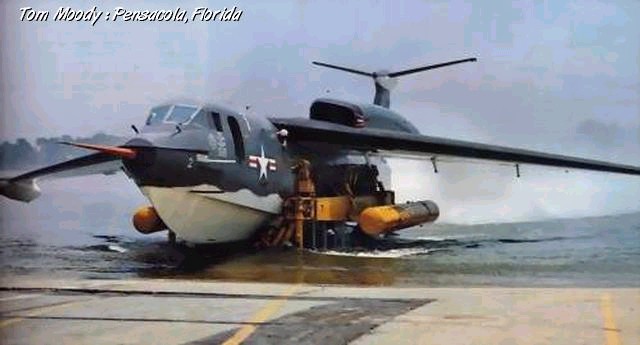
In an article in the 2000 marine corps gazette, "The Case for Seaplanes: a fresh look at an Old Tool for OFMTS Sustainment" Lieutenant Colonel Gregory J. Baur (res) says the seaplane (flying boat) concept offers an important logistics capability for naval expeditionary forces which is independent of host-nation support. "A single squadron of STOL seaplanes, or even fixed-wing carrier on-board delivery type planes, would be an enormous force multiplier to offload supplies from the MPF ship of the future" (page 67). Visionary military innovator Carlton Meyer also proposes we get CL-130 floatplanes now and get into the seaplane power projection business.
The future of Naval Aviation is the Seaplane not the large-deck aircraft carrier
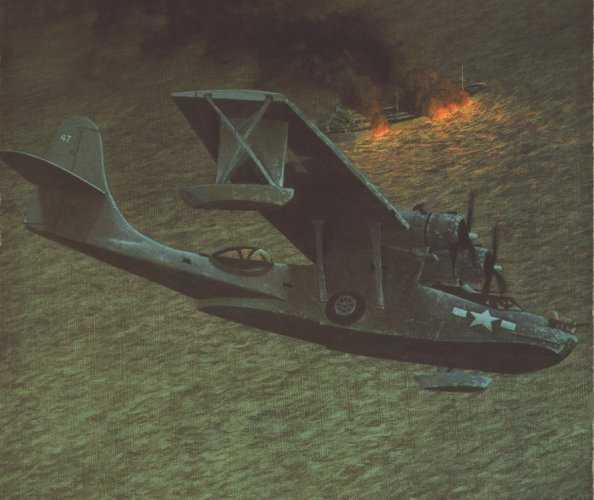
PBYs in RAF Service: Sank the German battleship, Bismark
Go back and re-read your WWII naval history. You will see that seaplanes and land-based patrol aircraft sank half the ships/submarines that were destroyed by both sides. Submarines/U-Boats sank the huge majority of the remainder, NOT AIRCRAFT CARRIER PLANES. And what aircraft carrier planes did do, the majority of the combat effects were from 100 SMALL CVE escort or "jeep" carriers not the bloated "fleet carriers" AKA "fast" ewwwww attack carriers as the naval aircraft carrier airdales like to call them. Since dickhead Pirie liked to see squadron insignia, lets start here by showing the "Black Cat" squadron artwork of the seaplanes he hated so much.
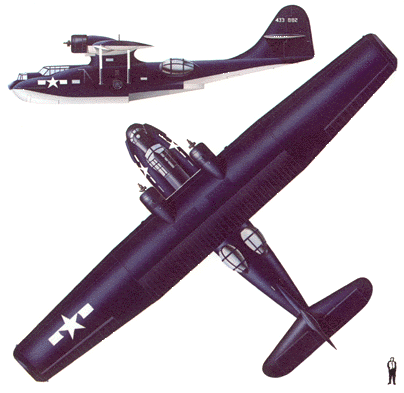

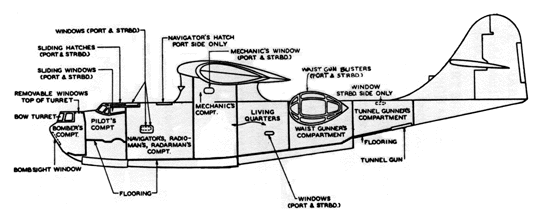
Maurice Allward notes:
"Coastal Command aircraft accounted for more than two-thirds of all the U-boats sunk. Between 1939 and 1945 flying boats had evolved from a harassment force into the most effective anti-submarine weapon of the war."
Seaplane Maritime ASW, ASuW, CSAR Patrol, Bombing & Special Operations: the Naval Combined-Arms Team We Don't Have Anymore
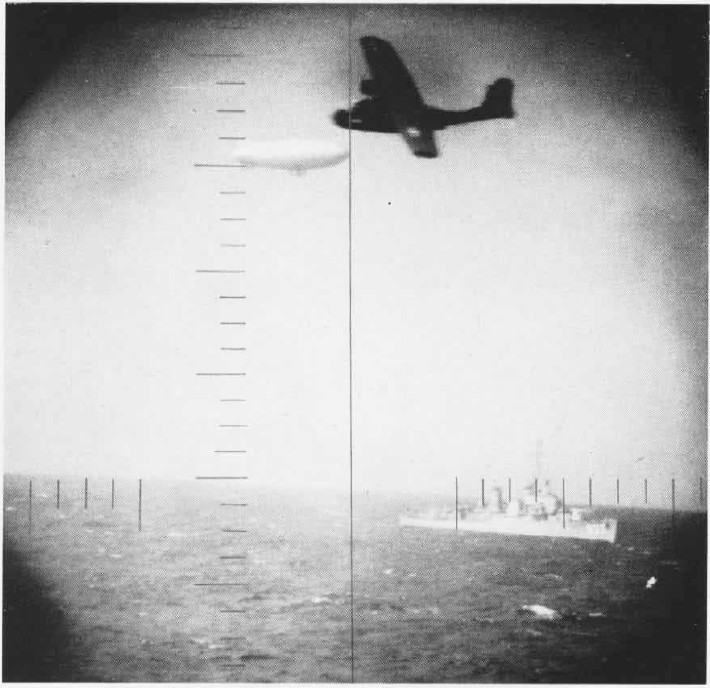
U.S. Large Seaplane Tactics in WW2
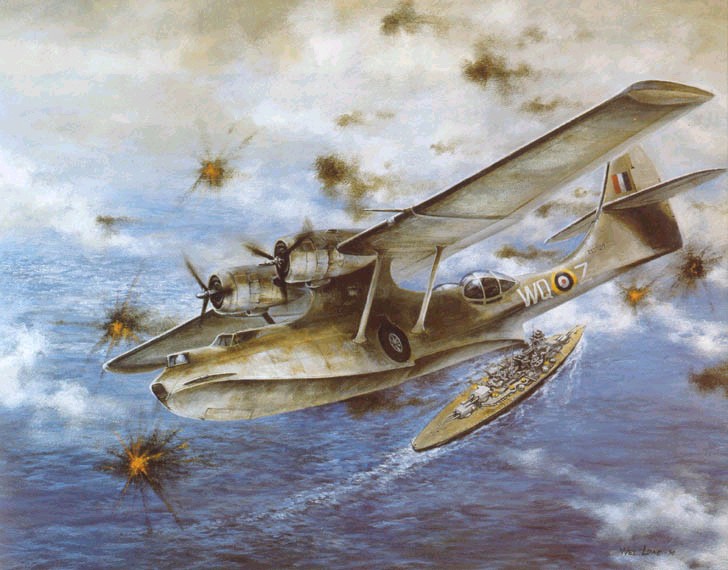
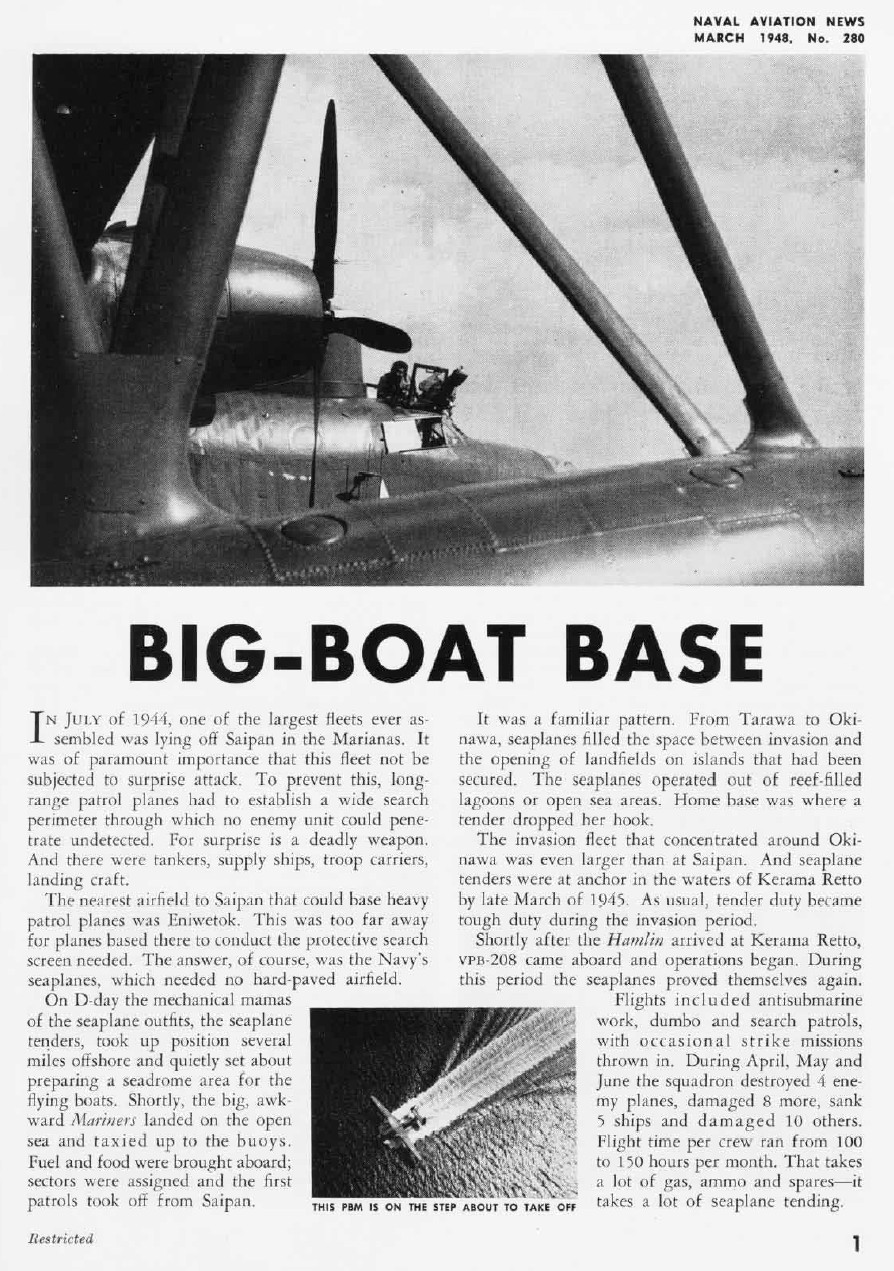
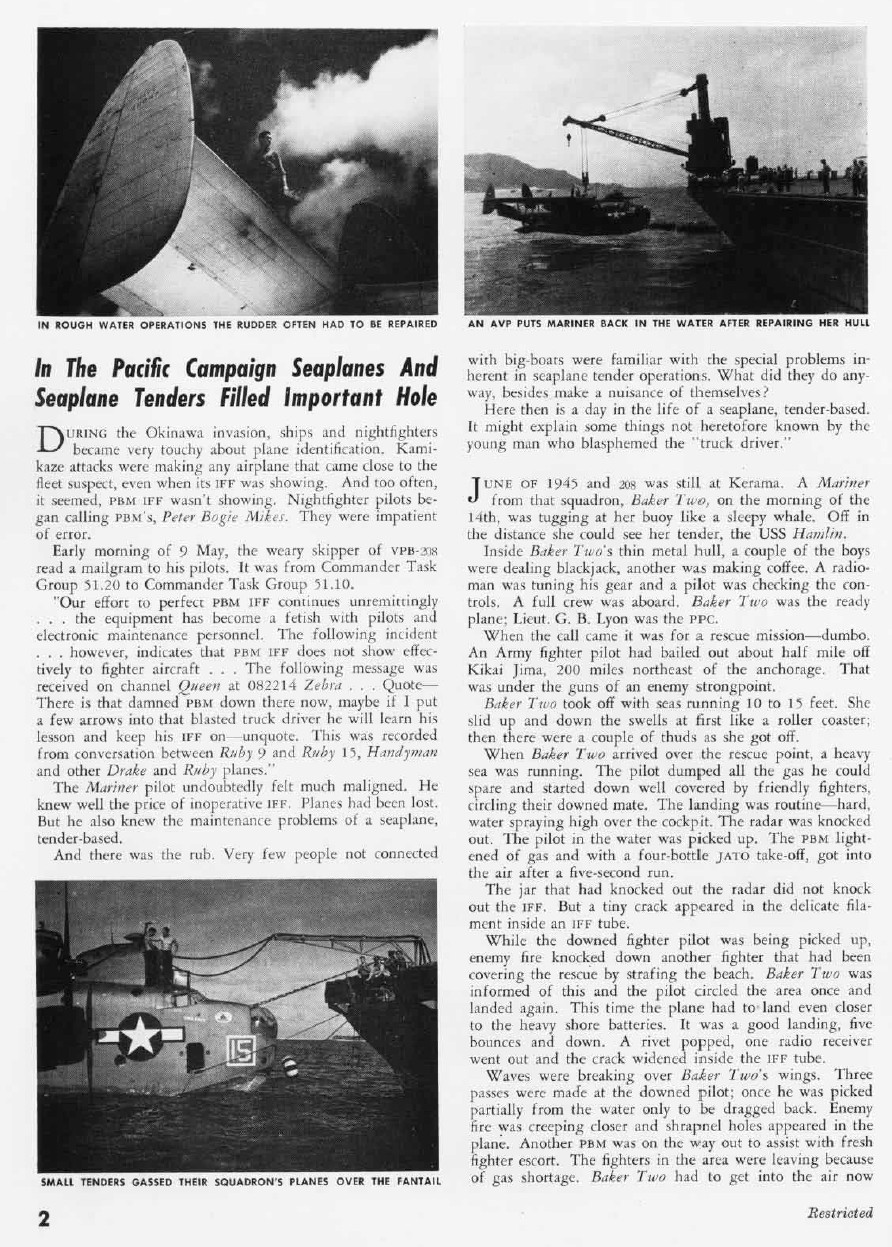
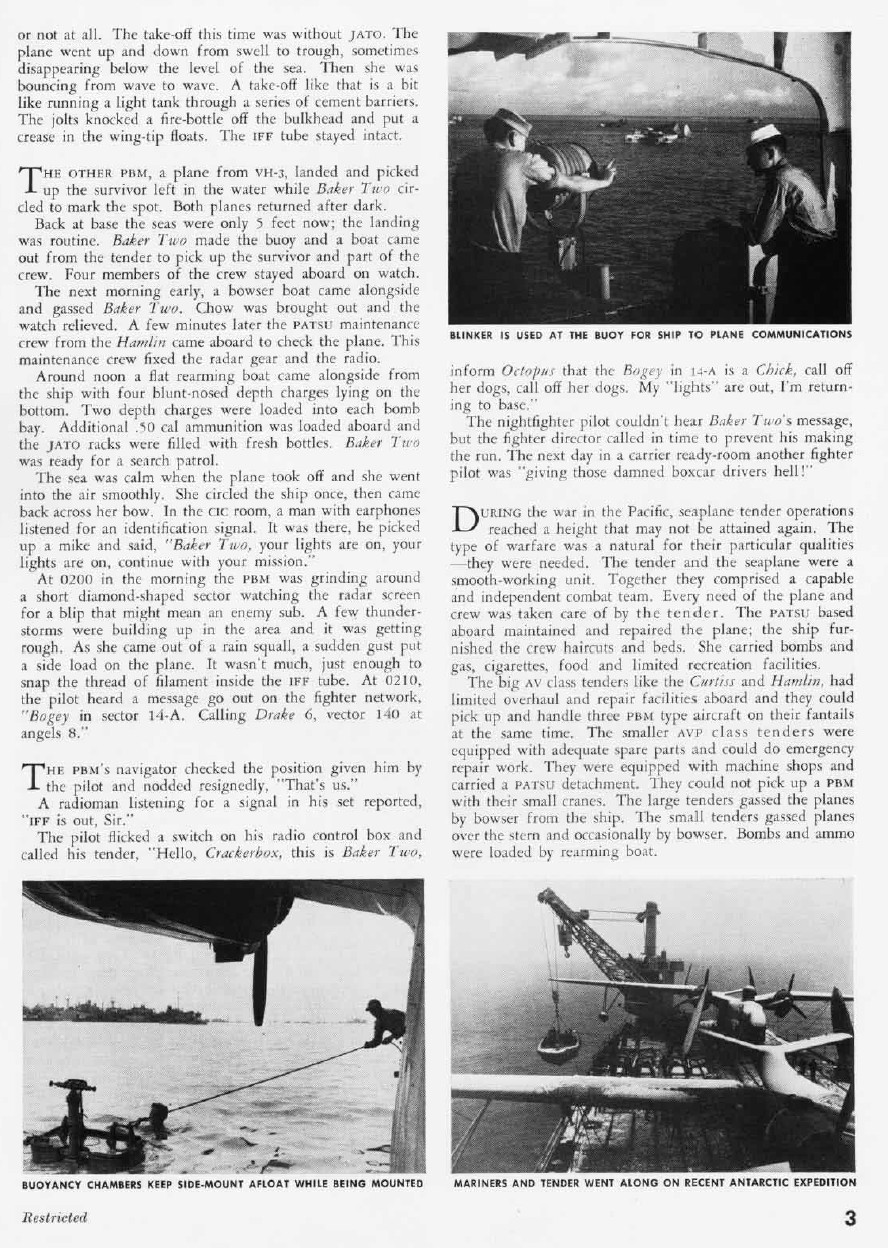
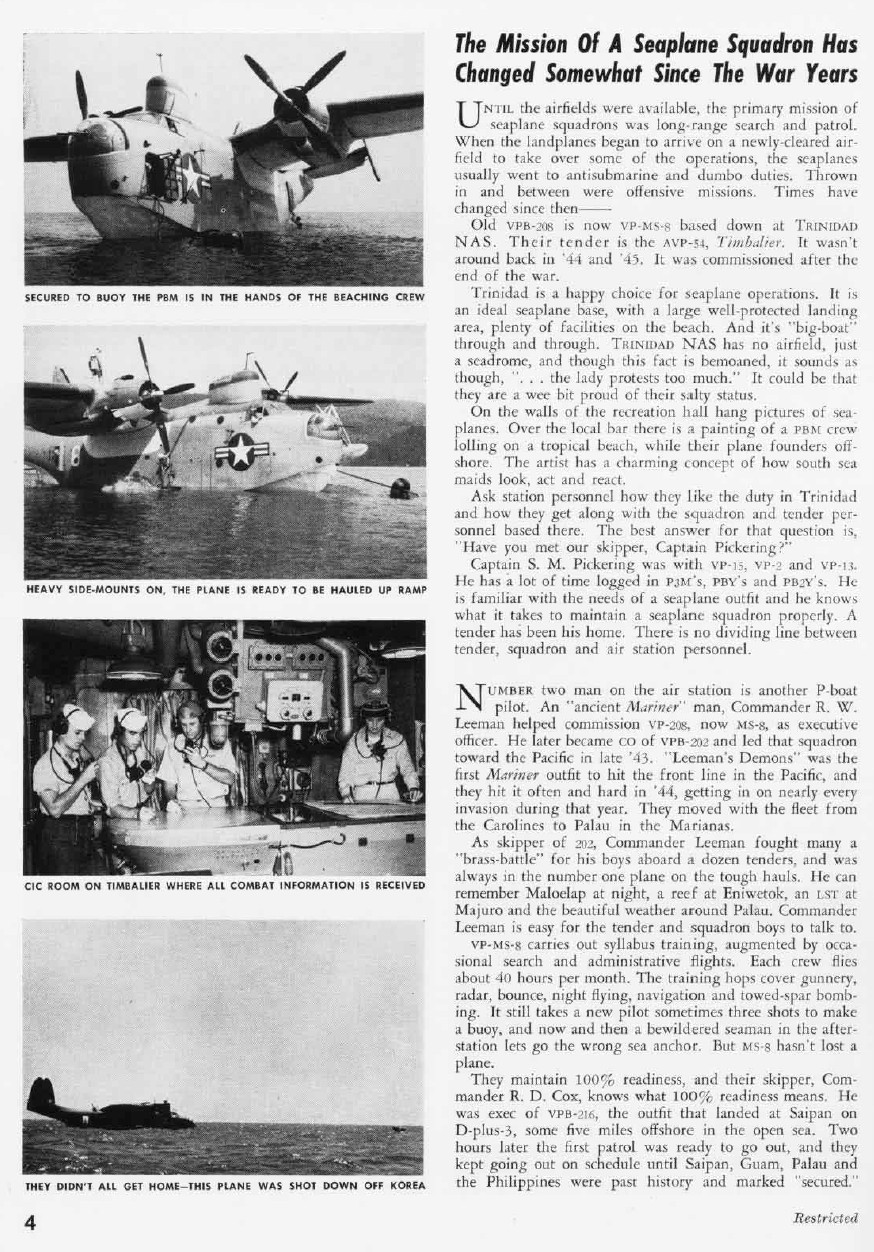
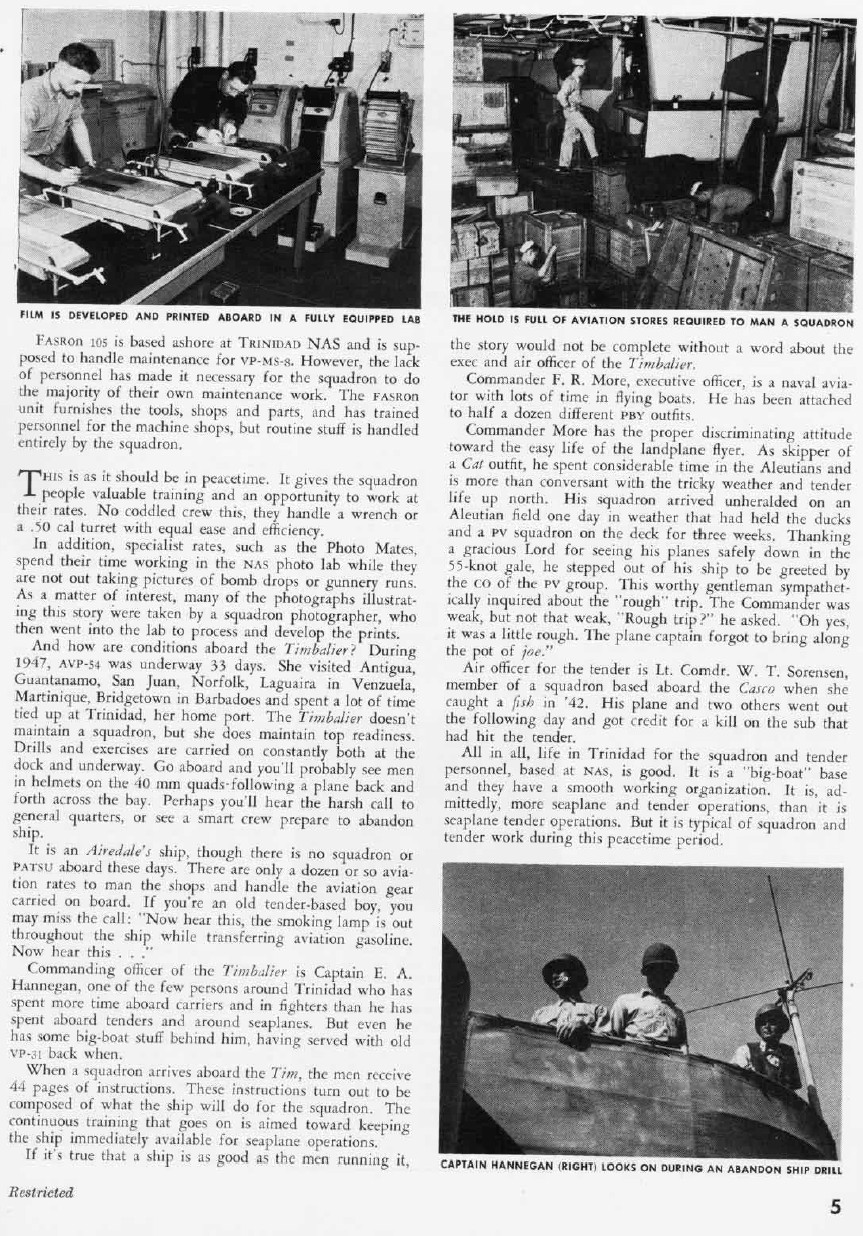



Seaplane WW2, Korea and Vietnam Combat Successes
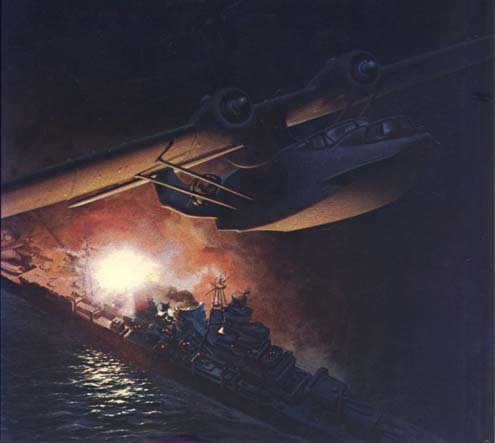
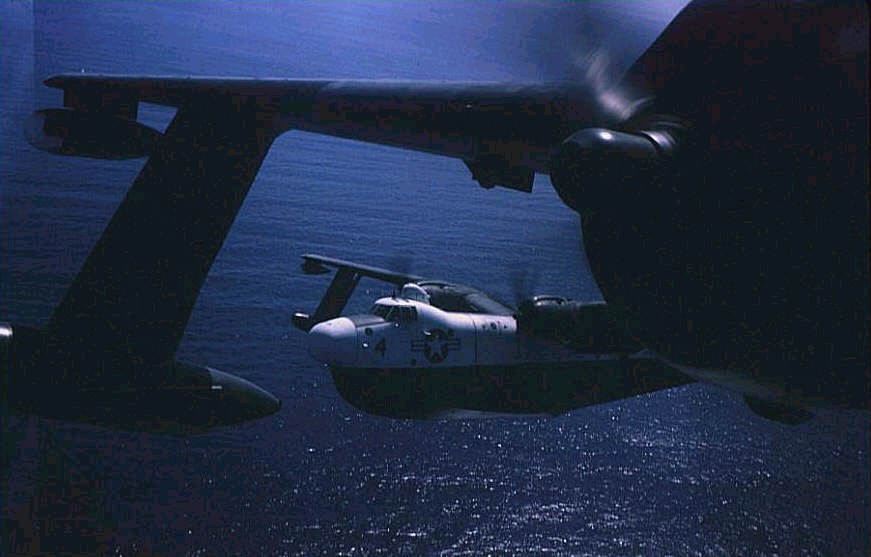
The physical versatility of the large seaplane shames our current can't do wimpy age that seeks to escape reality and contact with the surface of the earth. Flying faster and higher must be for a purpose to effect conditions on the surface of the earth below not be ego ends unto themselves. The seaplane gets results on the earth's surface below and offers us an ability to use the waters covering the earth to fly larger and faster aircraft with greater safety than land based planes limited to paved runways.
Seaplanes Kill Submarines: the number #1 threat to surface ship survival as well as enemy surface ships
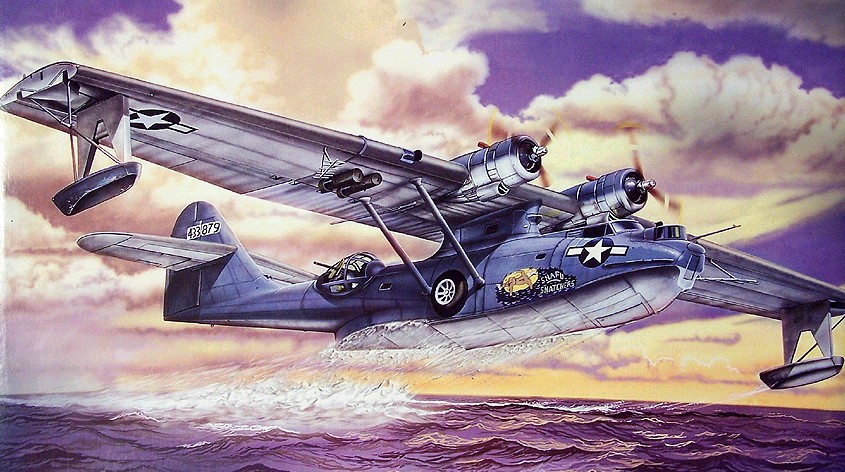

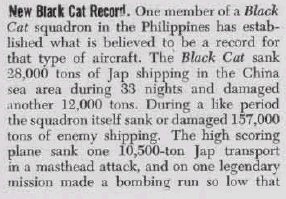
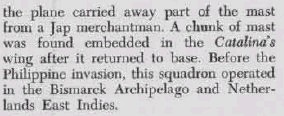
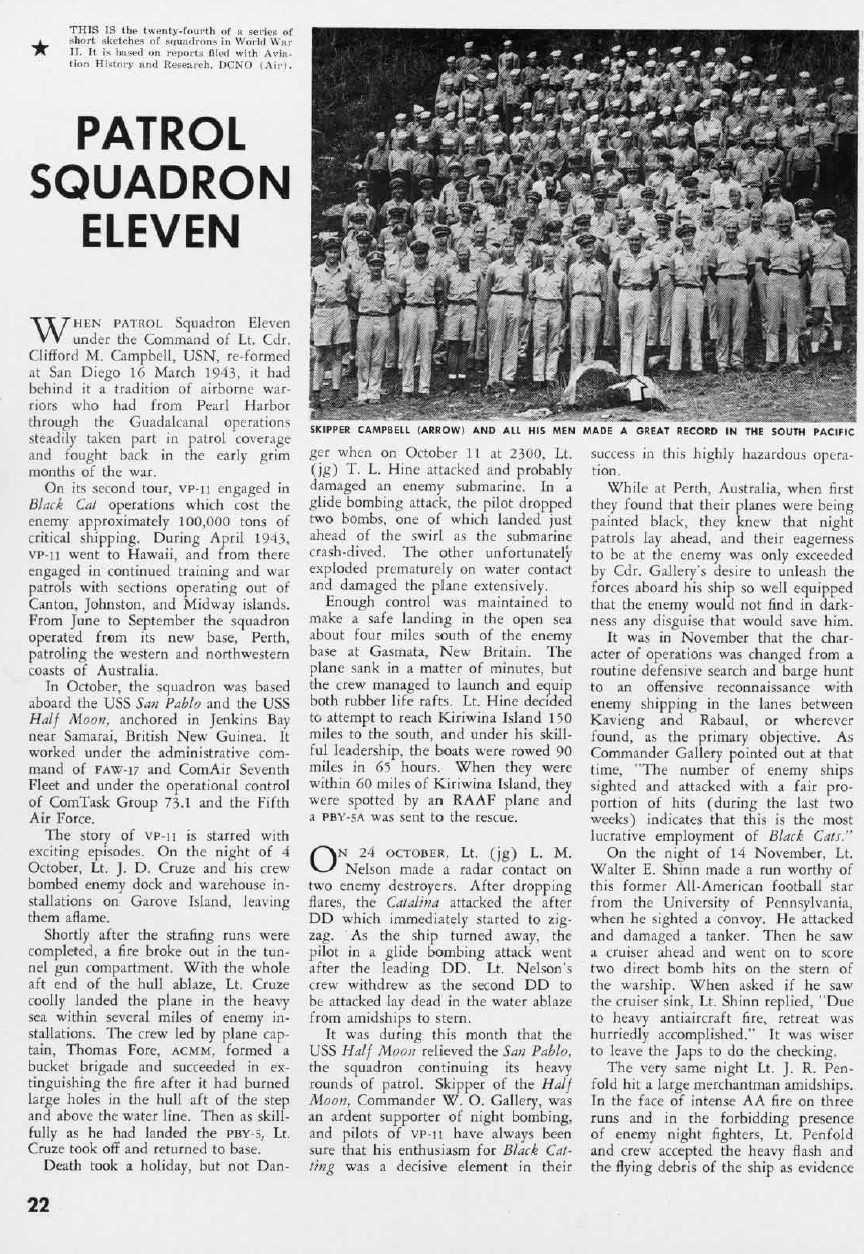
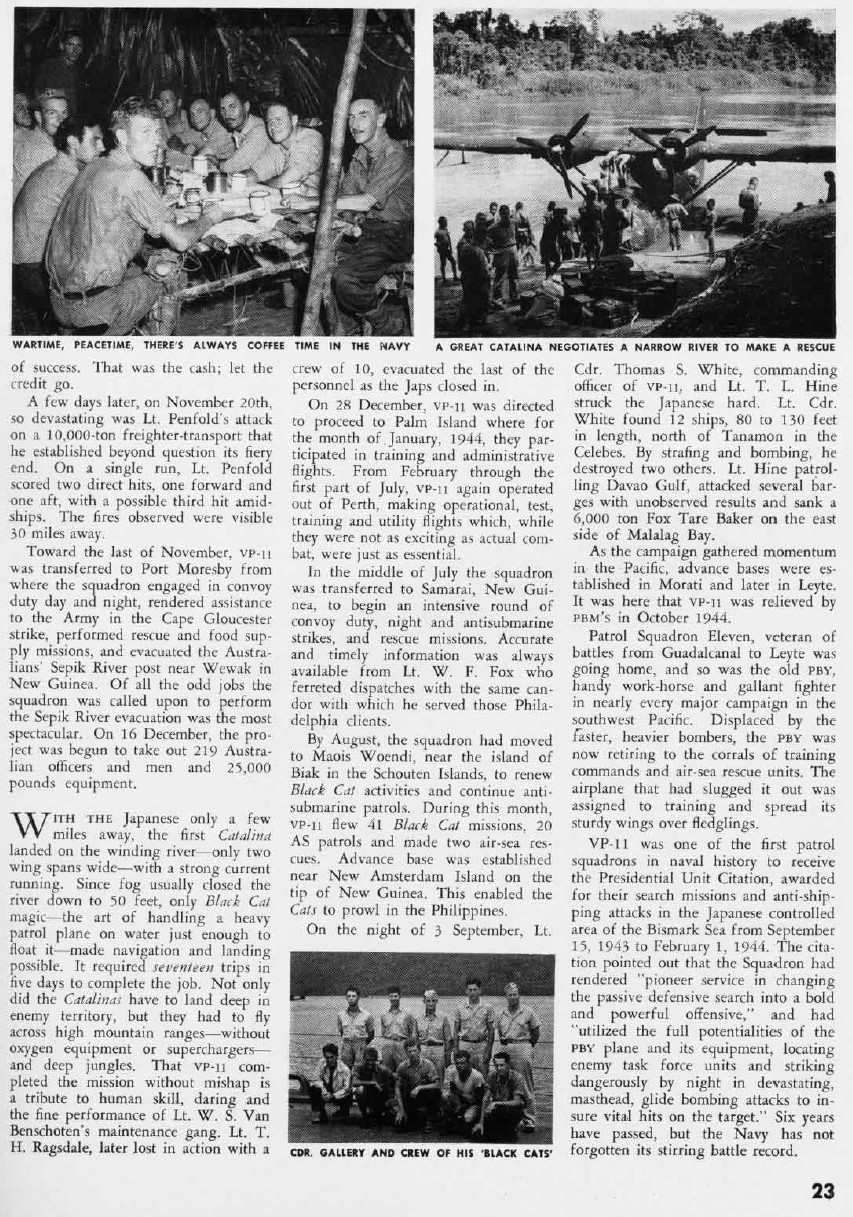
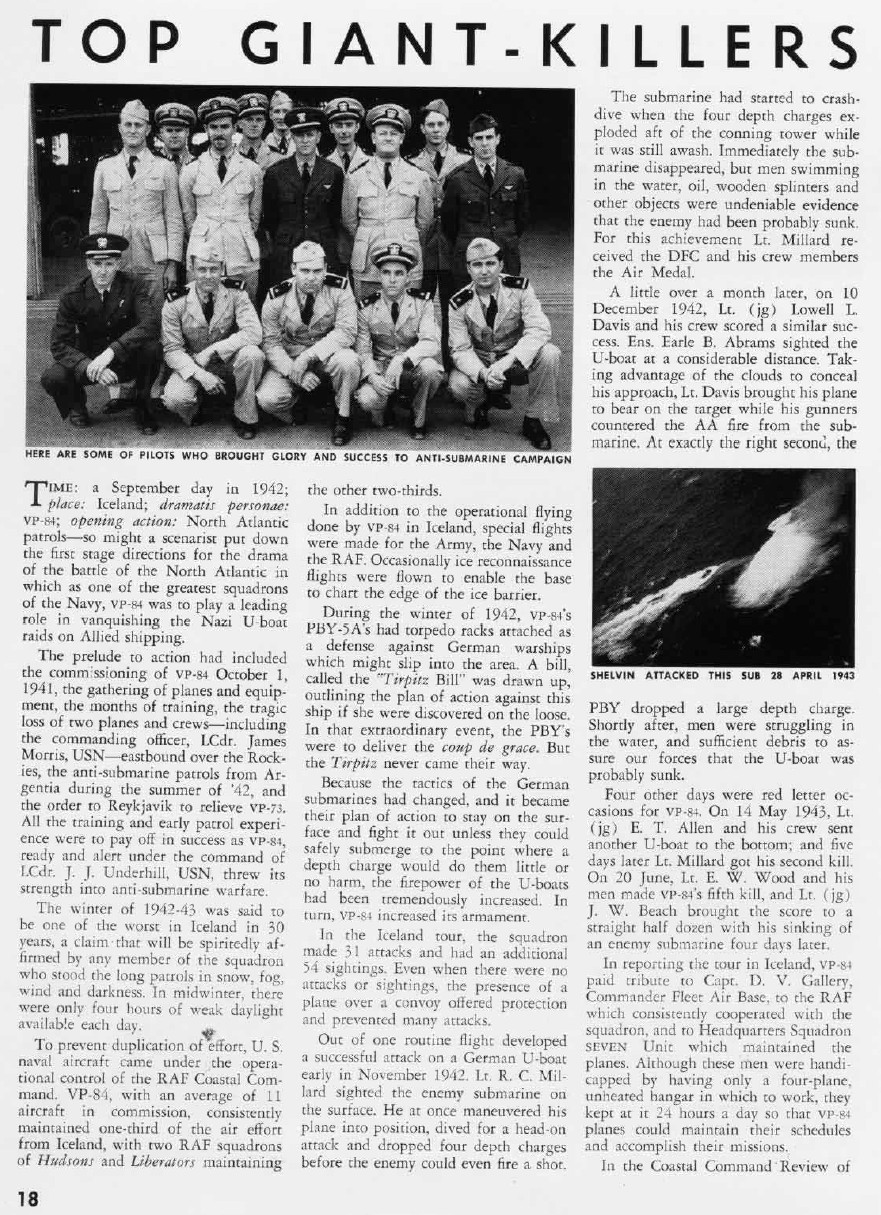
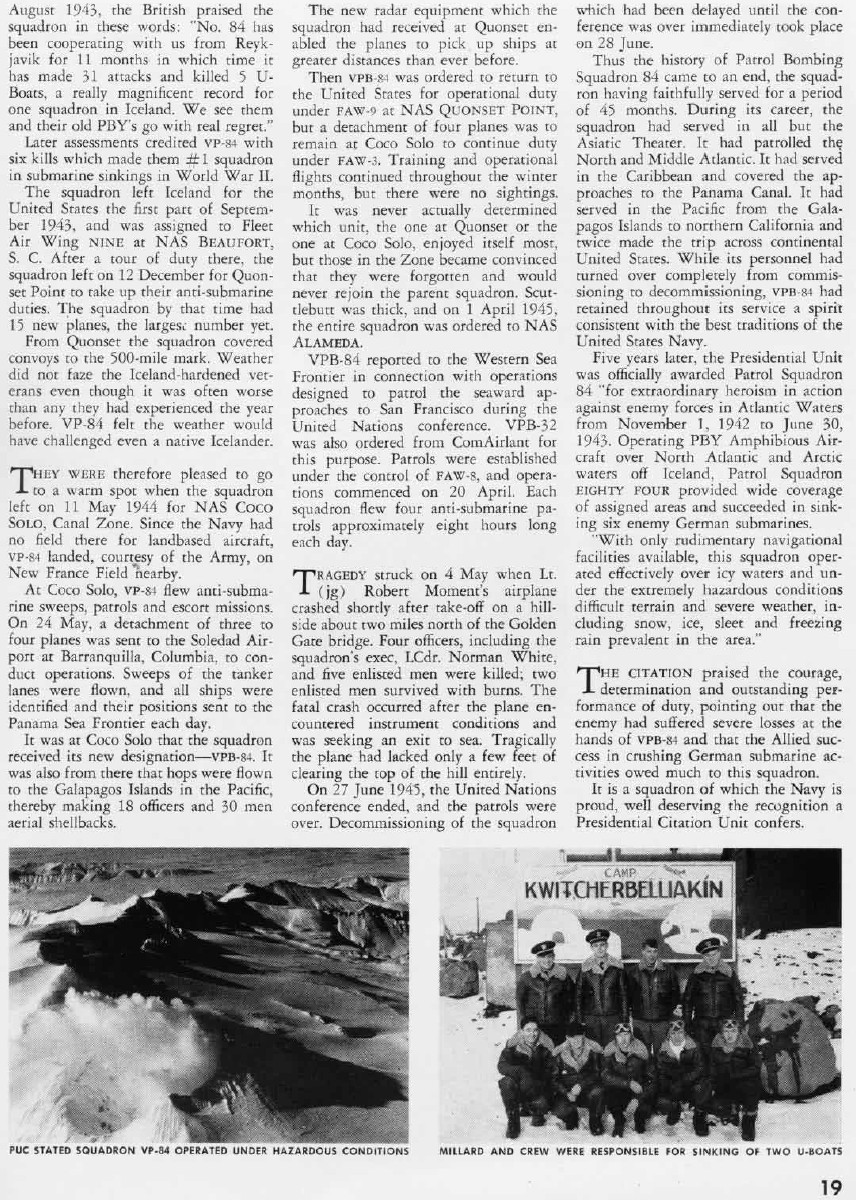
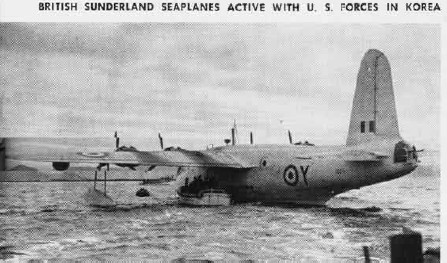
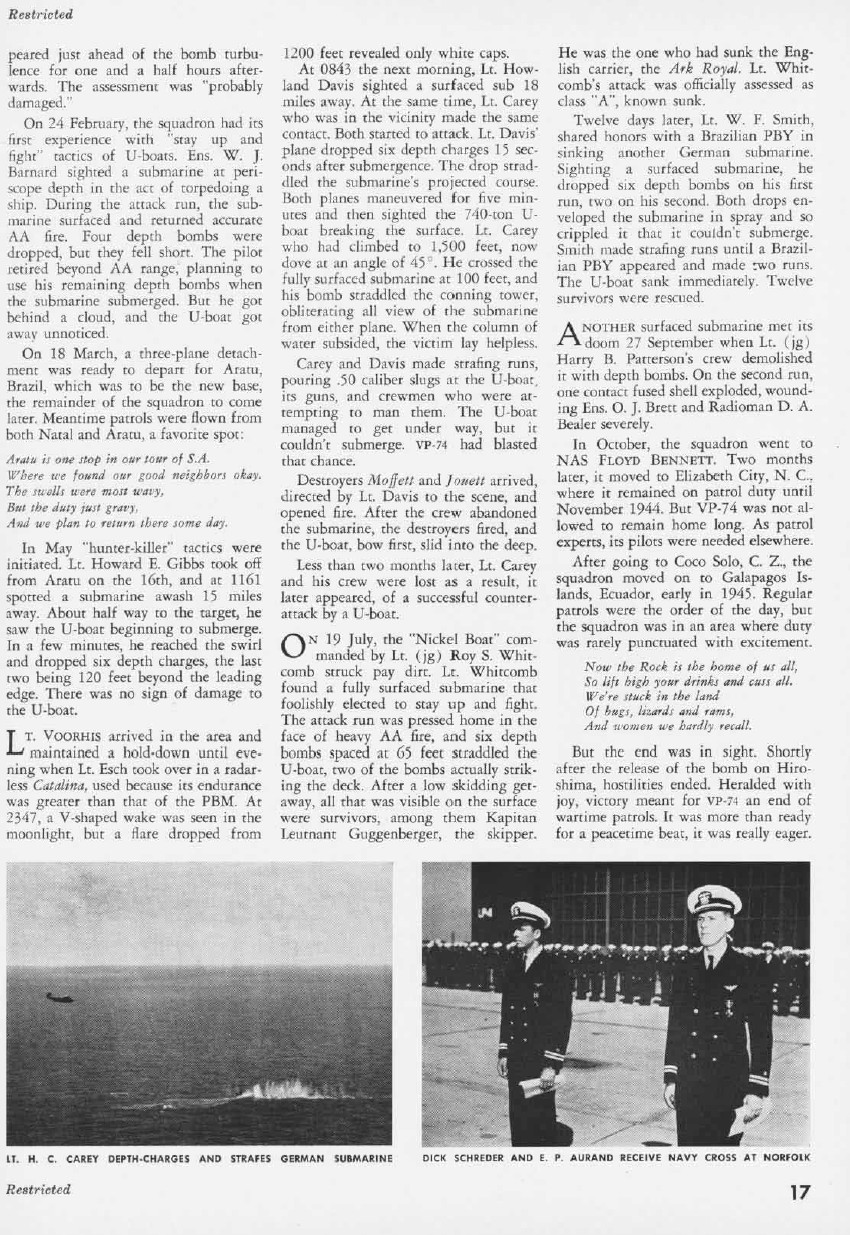
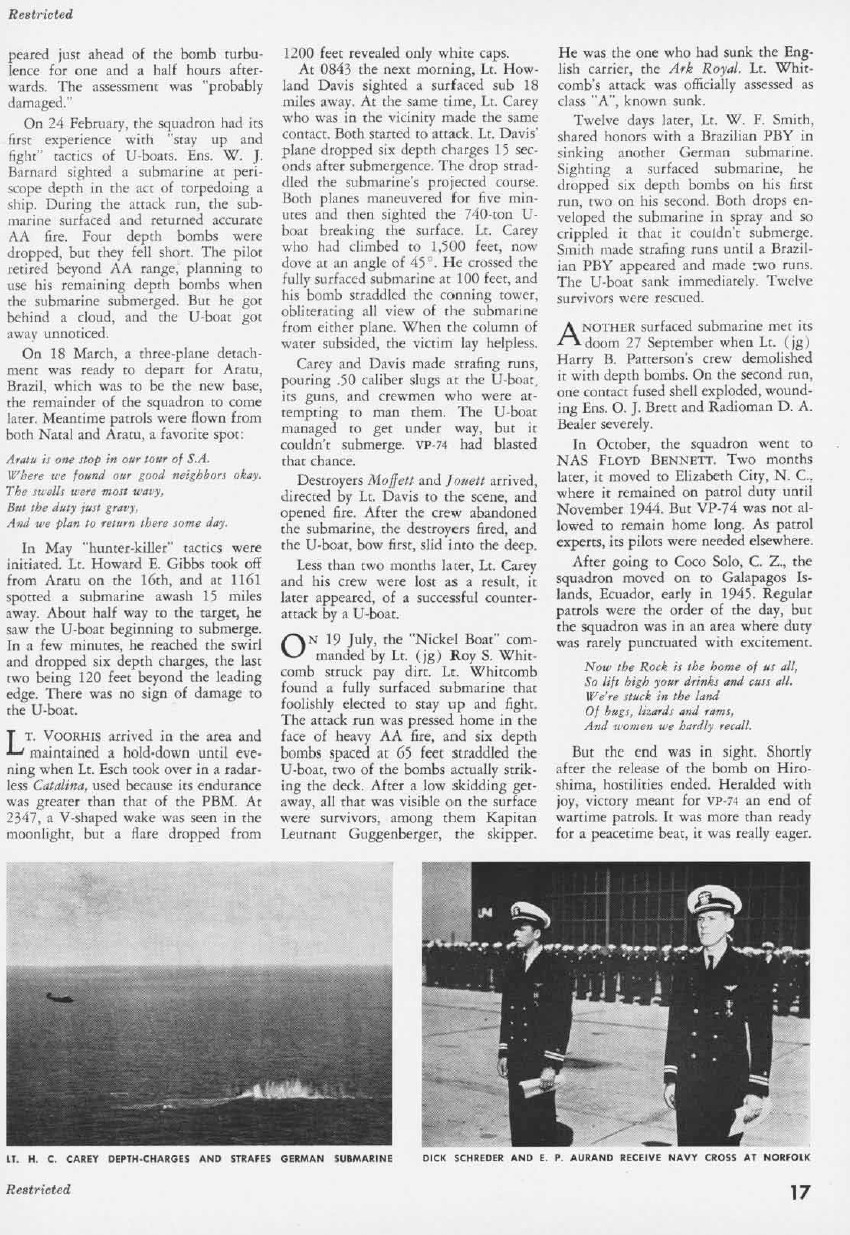
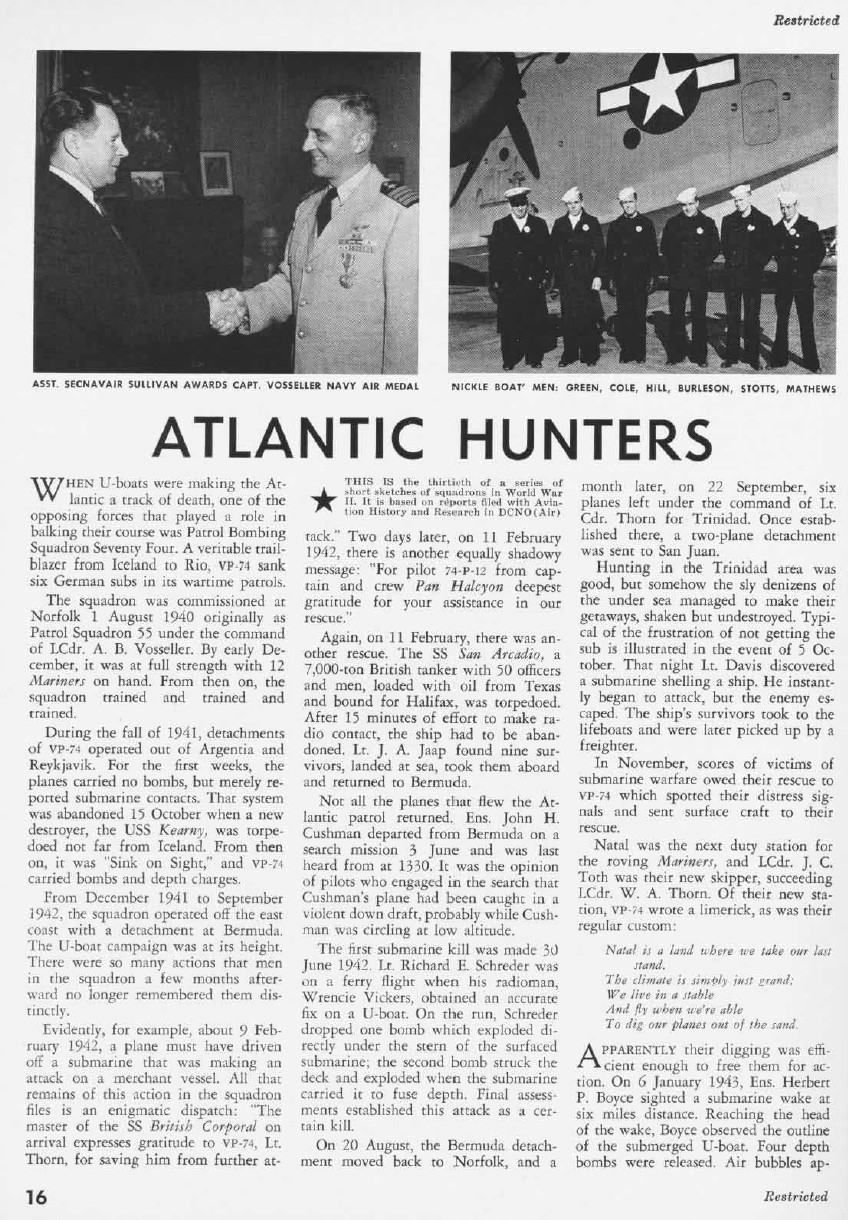
Seaplanes shoot down enemy aircraft when properly equipped
One of the dirty secrets of WW2 is that there were ACES-men with 5 kills or more of enemy aircraft WHO WERE NOT PILOTS but were GUNNERS as part of a TEAM in transport aircraft.
Did they get the Medals of Honor and valor awards that were handed out like candy to fighter pilots?
No they did not because they were not flying and we elevate flying the plane as the supreme act of human will, nevermind KILLING THE ENEMY IS WHAT COUNTS.
Seaplanes saves lives of men in peril on the Sea--it does happen and will continue to happen
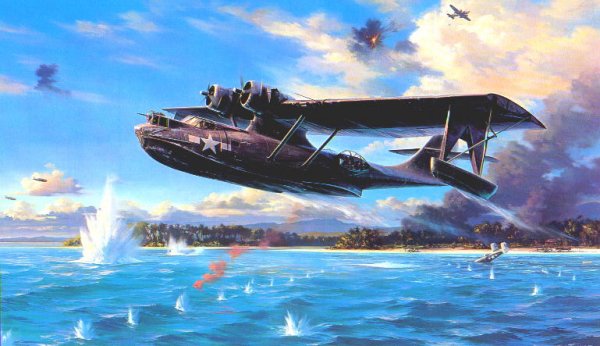
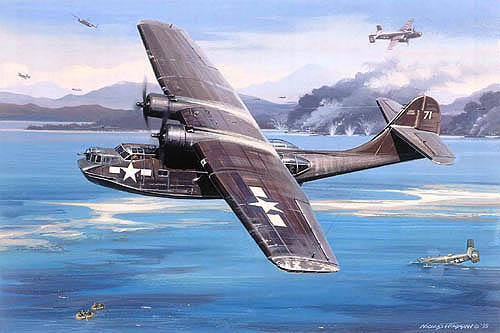
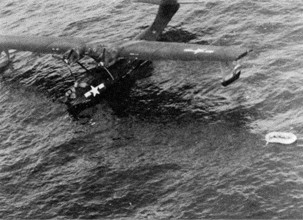
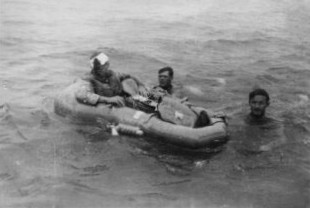
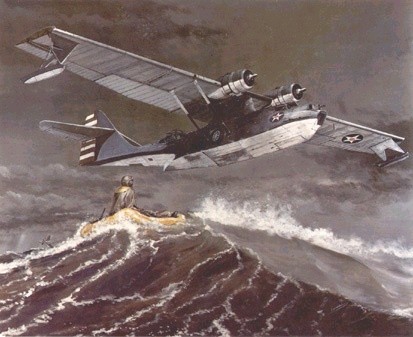
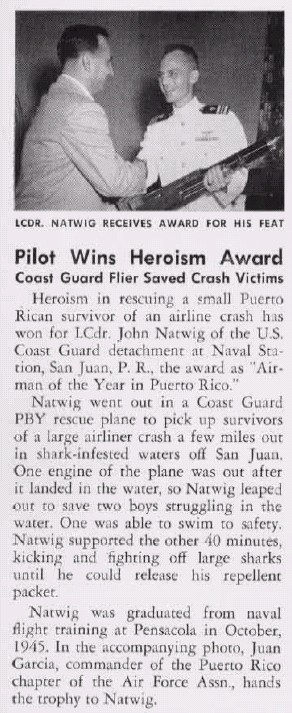
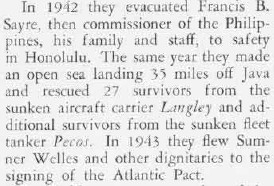
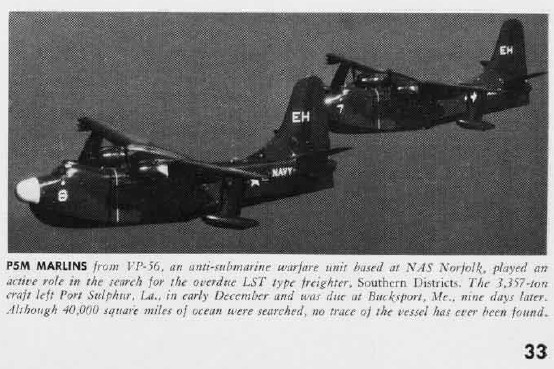

Seaplanes move men and materiel around the globe even if there are no runways to land
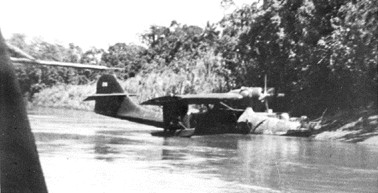
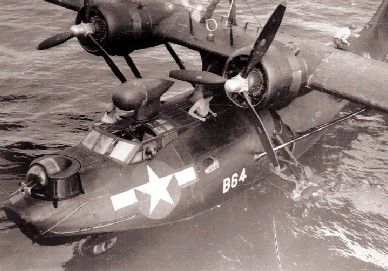
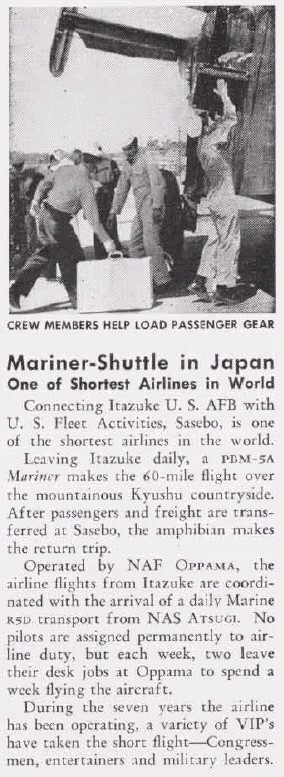
Seaplanes can employ more and heavier devastating weapons than smaller aircraft can

Seaplanes can work together with other types of naval forces creating a combined-armed synergism offering no weaknesses to the enemy to exploit while stronger than just one approach
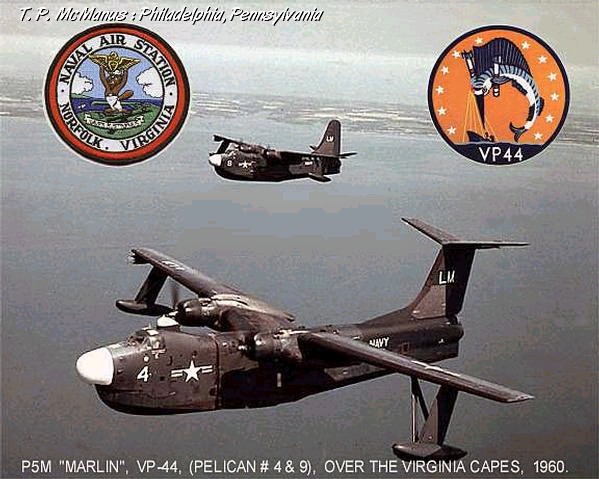





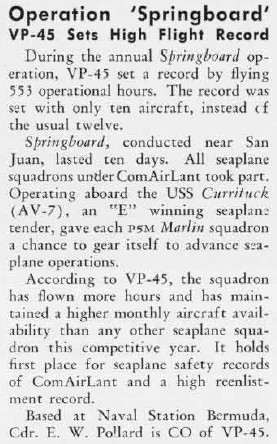
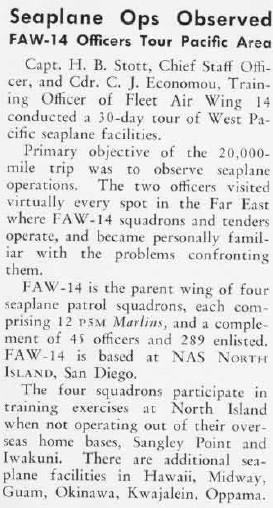
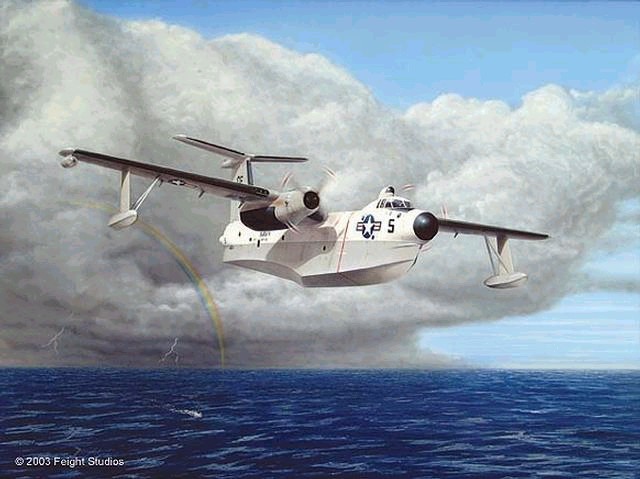
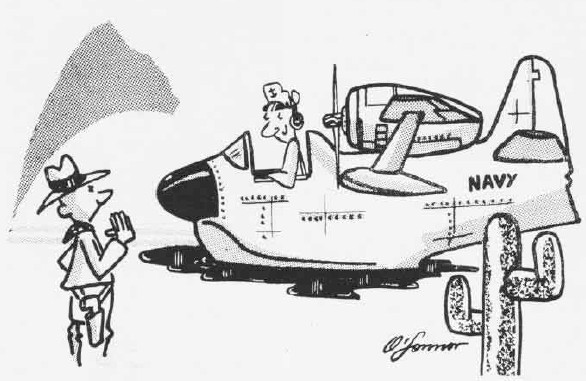
Seaplanes don't need large, vulnerable, costly aircraft carriers: a different approach to operating planes at sea and a healthy reminder that wheeled aircraft on dry decks is NOT our only option to get air cover/capabilities, though they can interface with carriers, too!
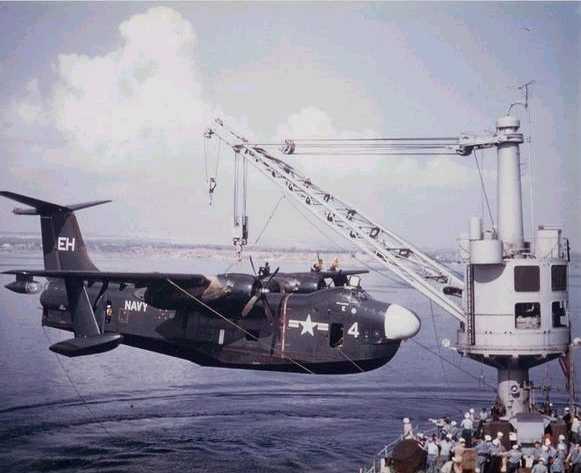
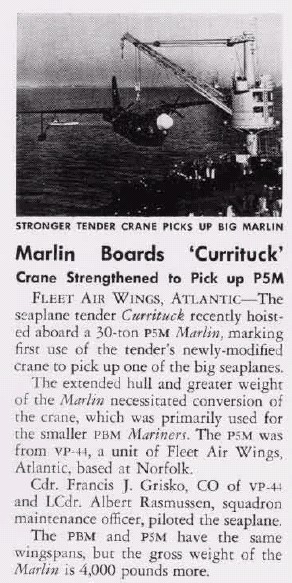
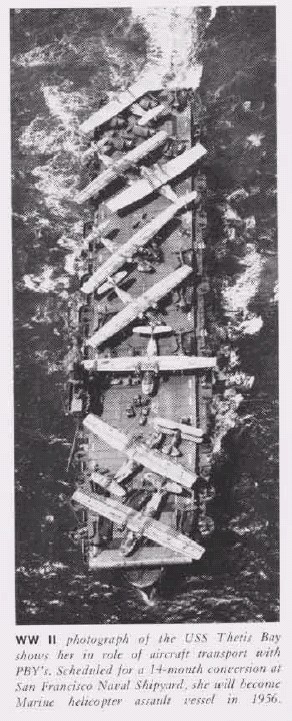
Seaplanes can cover far longer distances and ranges than smaller and shorter-ranged planes can: if you don't cover the earth, you don't get the enemy

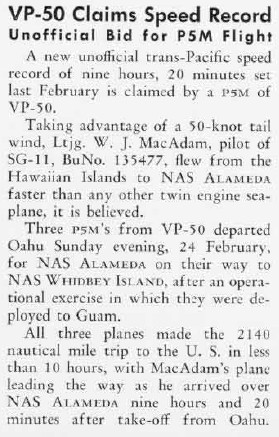
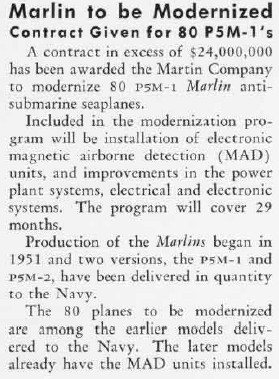

Seaplanes can take-off and land in rough sea conditions where there is no dry land runway or airport
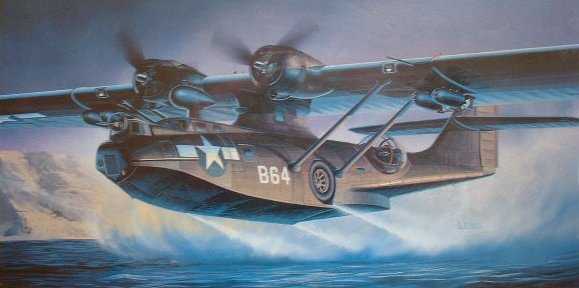
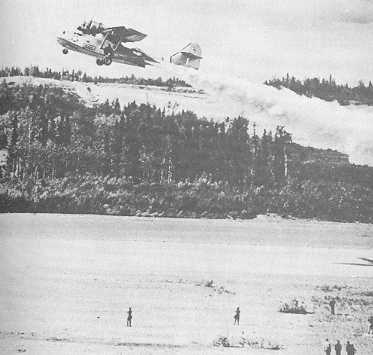
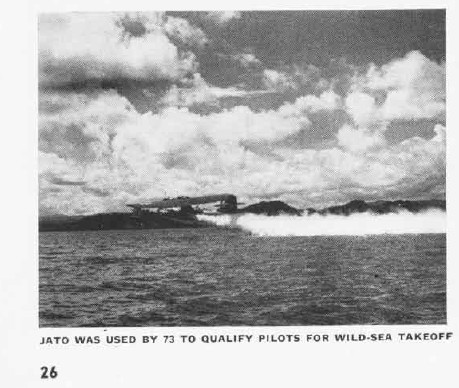

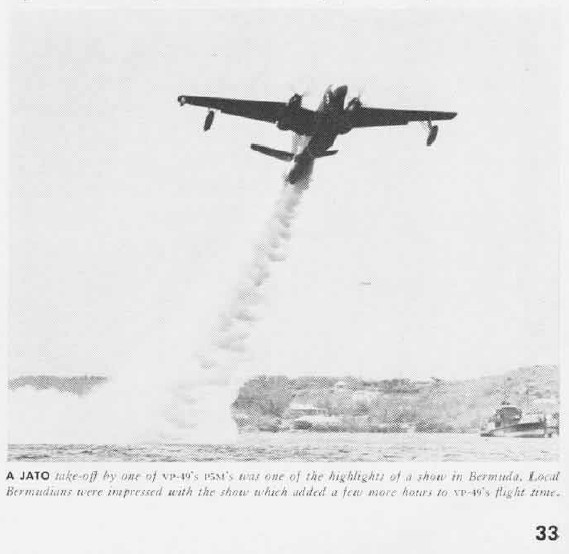
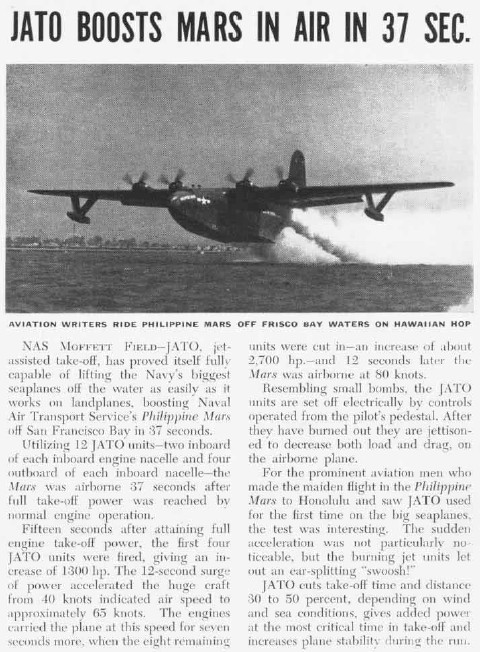
Seaplanes can interface with friendly ships and submarines to receive special operations commandos and/or fuel to do its own combat missions or refuel others, COVERTLY

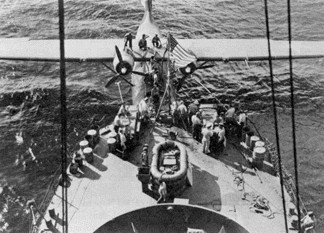
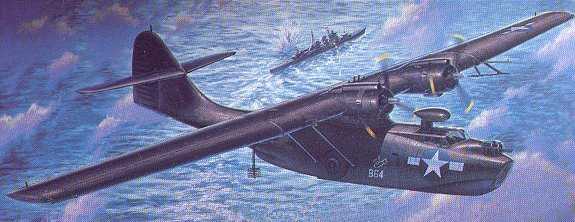
Seaplanes can recover themselves at sea if they cannot fly anymore and swim back or be towed to shore: no crashes, no deaths, no tragedies, everyone lives to fight another day




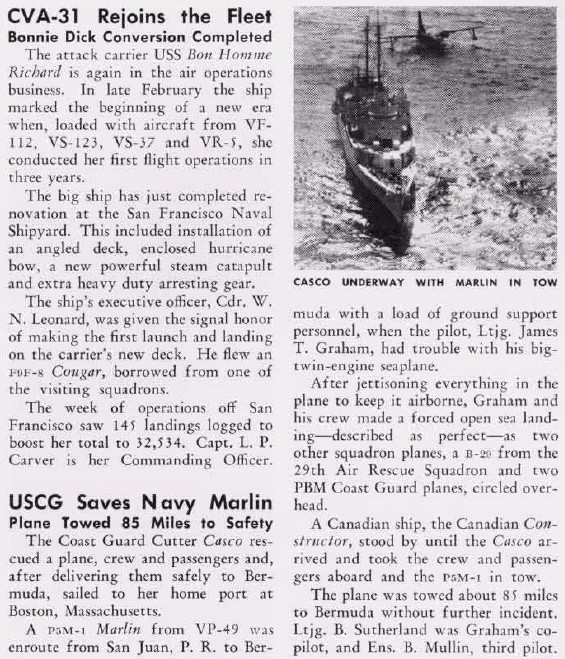
Seaplanes can last for decades of service; the PBMs and P5Ms were withdrawn for political corruption not structural reasons; the very large MARS seaplanes have been in continuous service since the 1940s and are water bomber firefighters TODAY
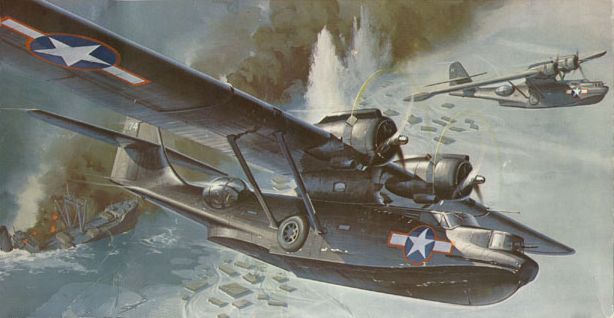
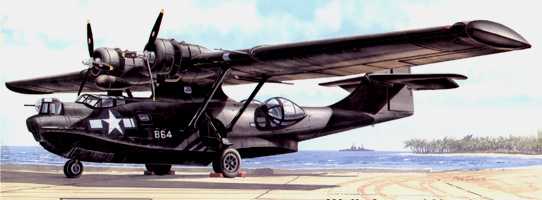

Foreign Navies copied our success and made their own "Mini-Black Cat" attack Seaplanes
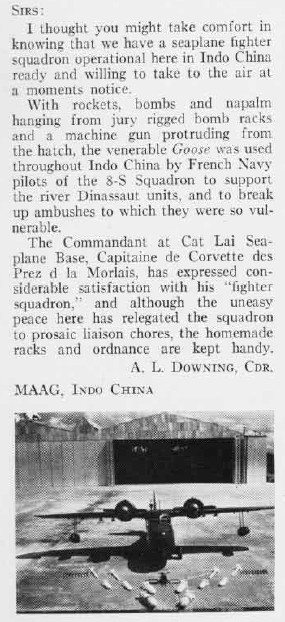
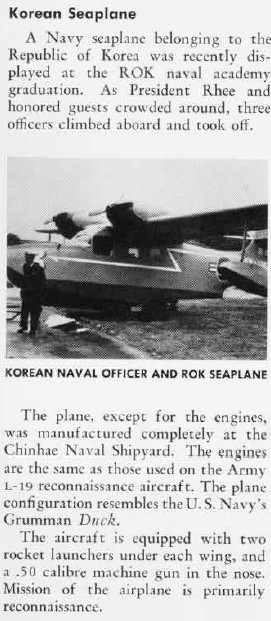
Charles Kaman made this tilt-wing VTOL seaplane which frankly, still makes a heck of a lot of sense today!
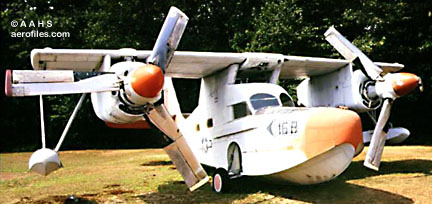
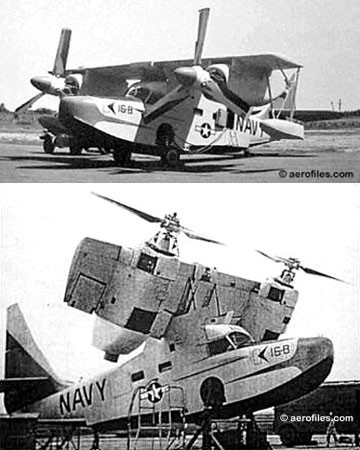
 Seaplane Rescues & Special Operations
Seaplane Rescues & Special Operations

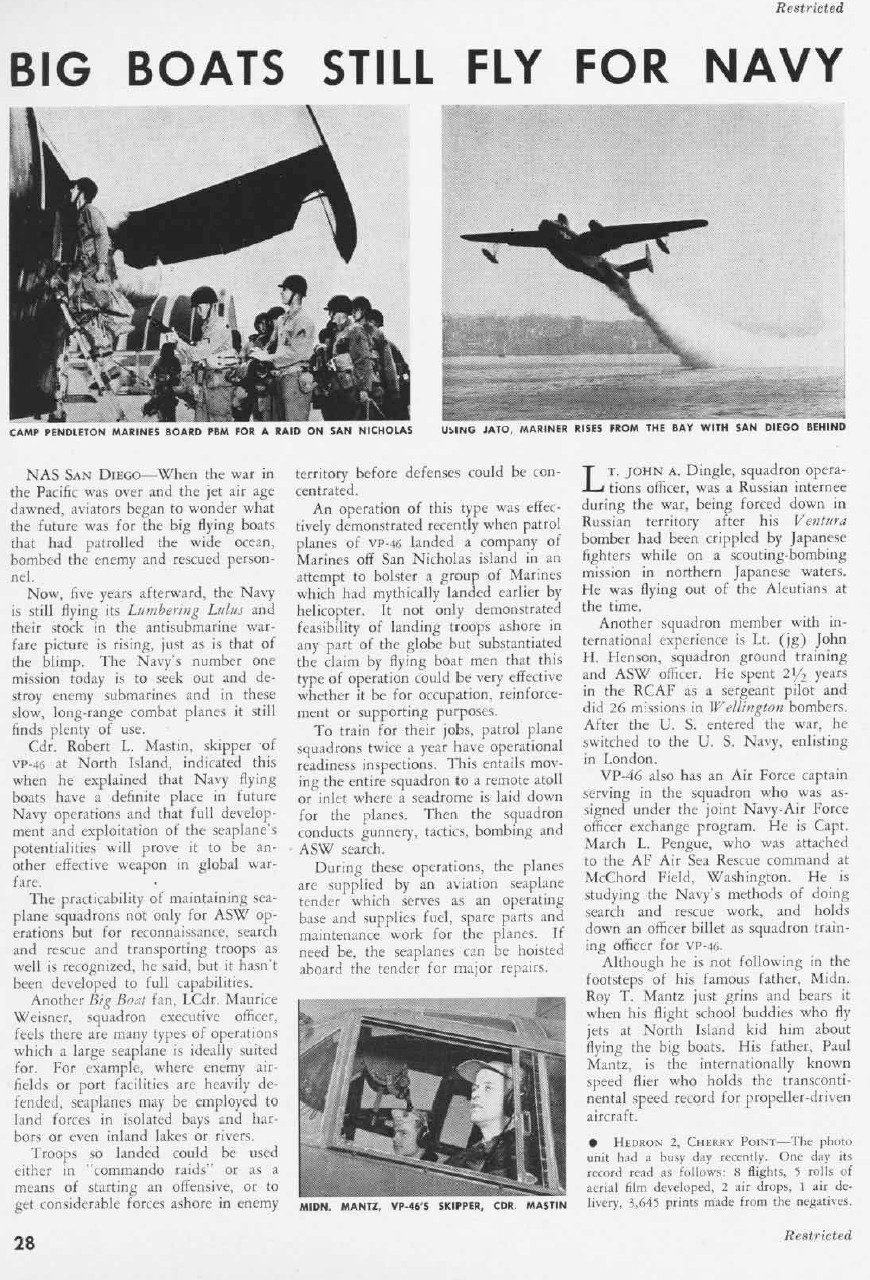
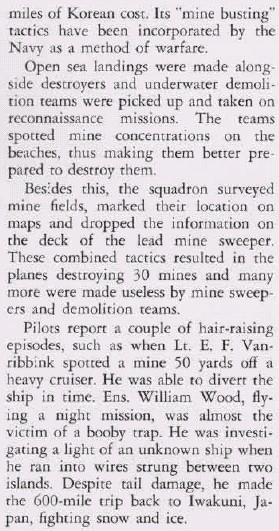
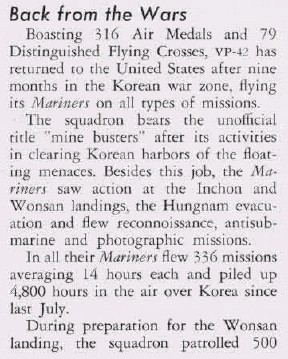
P-5M Marlin Seaplane Parachute Insertion of Nuclear-Armed SEAL/UDT Commandos!
www.youtube.com/watch?v=PXr2ud89els
This amazing declassified film shows a Special Atomic Demolition Munition (SADM) being parachute jumped by U.S. Navy SEAL/UDT frogmen with fins from a low-performance CH-46 SeaKnight helicopter and a high-performance P-5M Marlin ASW/maritime patrol seaplane:
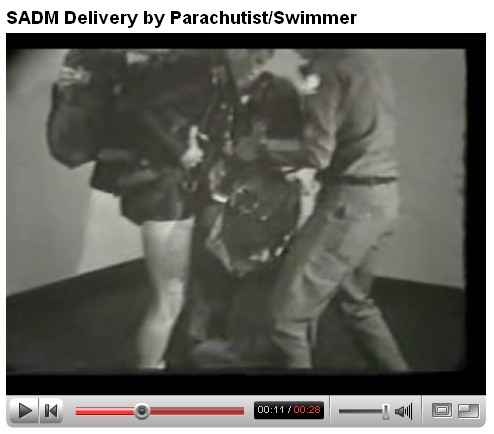

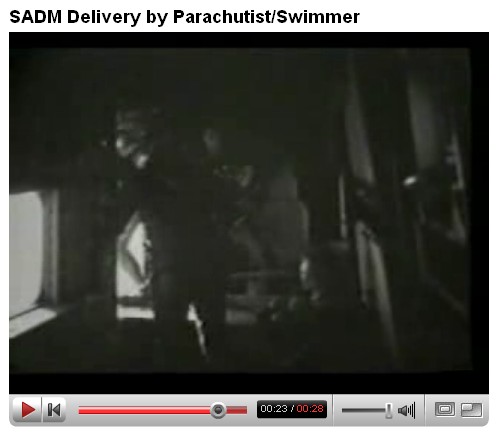
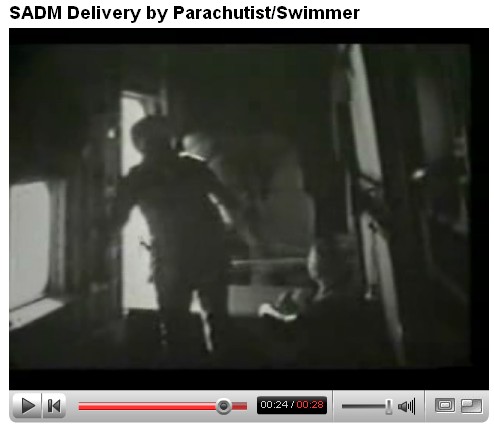
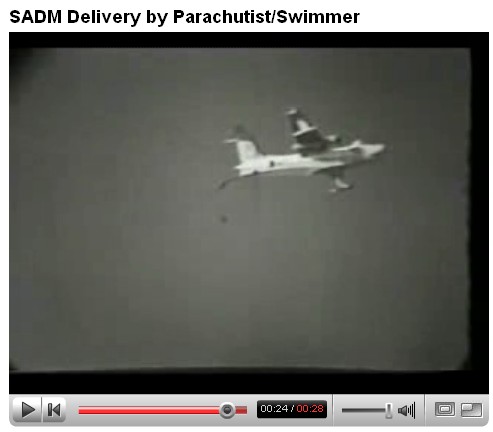
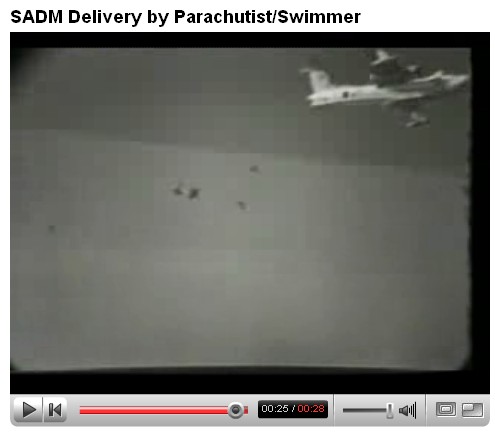
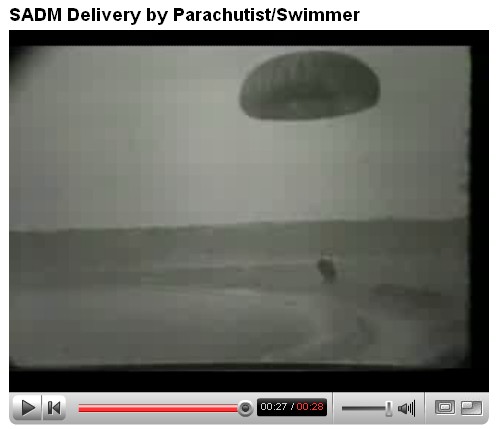
Not only does this film show heavy equipments can be jumped by Paratroopers like folding mountain bikes, it reveals that when the aircraft carrier "mafia" hadn't ruined the U.S. Navy that our special warfare commandos used seaplanes to infiltrate/exfiltrate behind enemy lines. Today we lack ANY fixed-wing seaplanes to insert/extract our SEALs and land-based commandos, which is criminal military incompetence on our part.
Hugging the Curvature of the Earth to Stay Undetected by Radar and Sight Over The Horizon
http://radarproblems.com/calculators/horizon.htm
The lowest altitude to parachute jump in the U.S. military mind is 500 feet. So if you are a SEAL team doing a "rubber duck" jump (boat with outboard motor on pallet with cargo parachutes you wear personnel parachute and swim fins and jump after the rubber duck is pulled off the rear ramp) you will be outside of radar detection up to 31.6 miles from target and 27.39 miles away will not be visible. Can you motor ashore these 27-31 miles in a small boat? Yes, but its no picnic.
Let's say we have the British Irvin parachutes and jump at 250 feet, radar is 22.3 miles and visual is 19.3.
Let's say we use a SEAPLANE flying 50 feet above the water. How close can we get before being detectable?
10 miles by conventional radar and 8.6 miles by visual.
Let's say the seaplane lands and has a 20 foot high tail...it can get as close as 6.3 miles by radar and 5.4 miles by visual.
Don't you think seaplanes are worth doing for special operations as an insertion/extraction means?
Large Seaplane Design R & D in the order fielded....
Crew Habitation for long-range missions

Water-Injected Emergency Power for Piston Engines
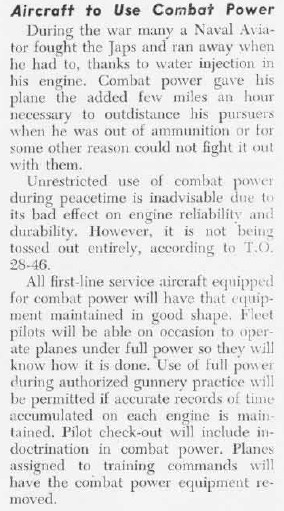
ASW/CSAR searchlights
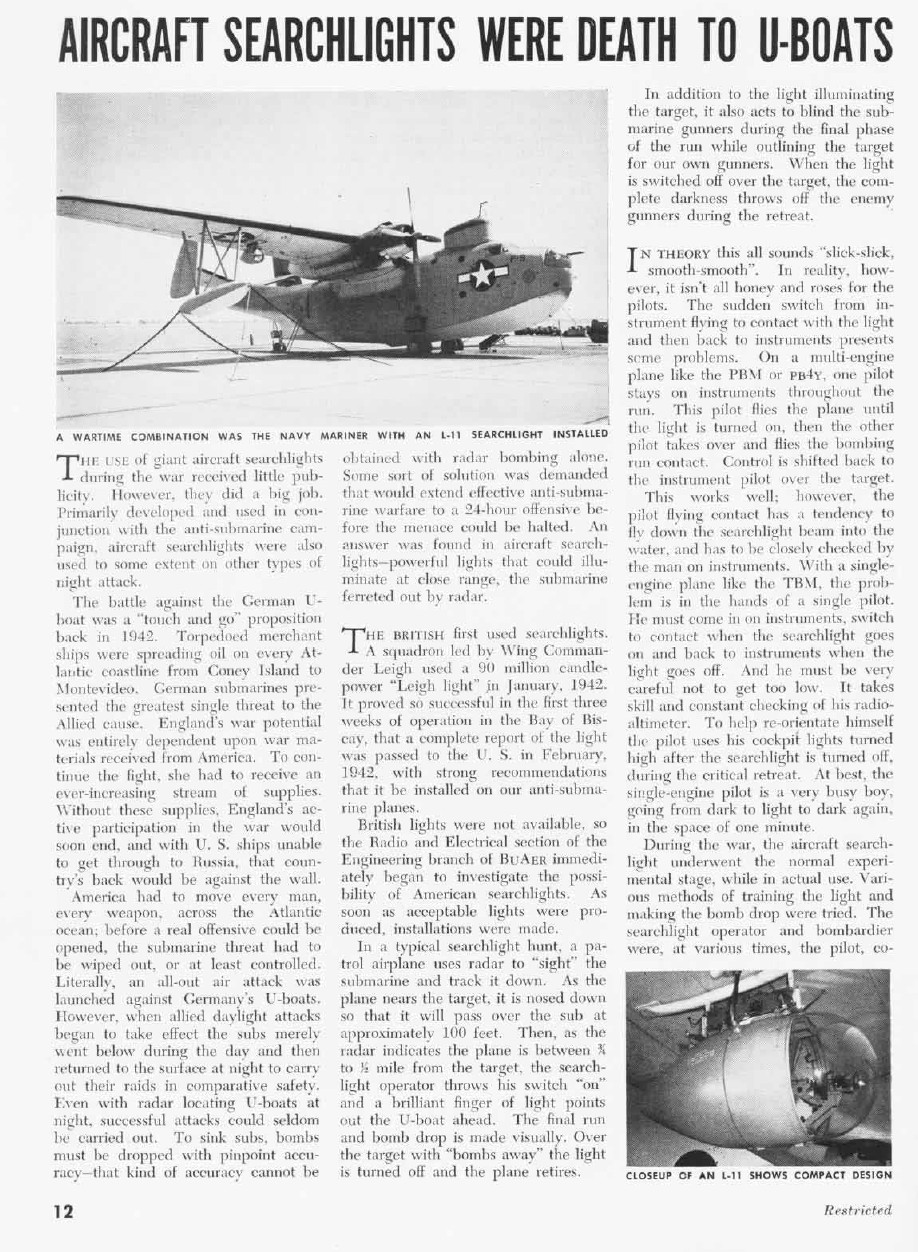
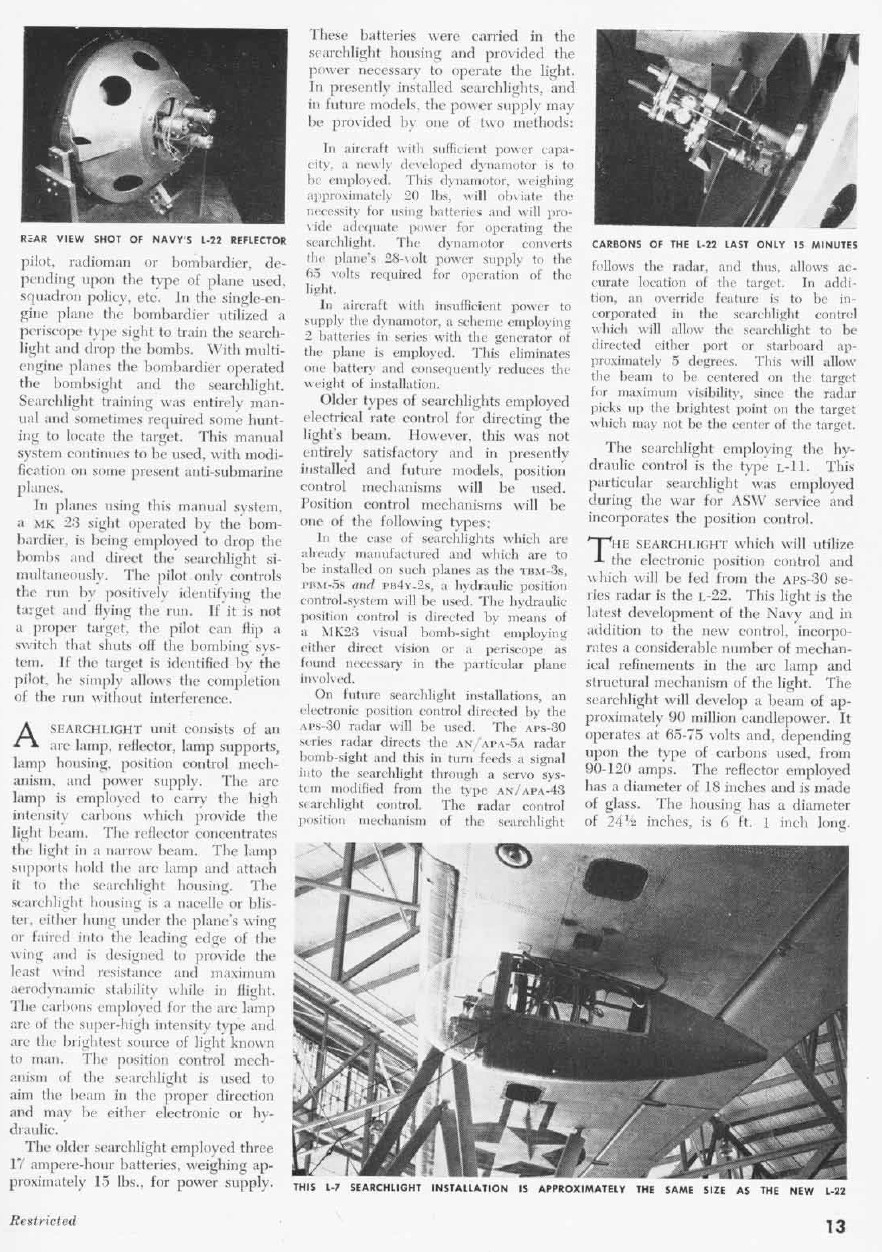
Seaplanes can spot/bust sea mines
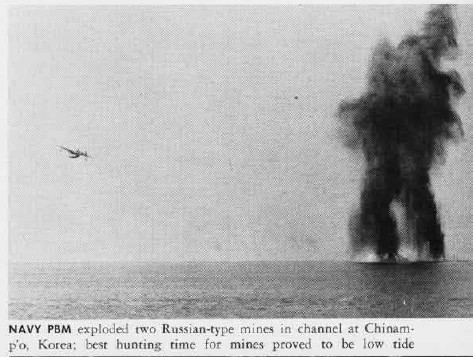
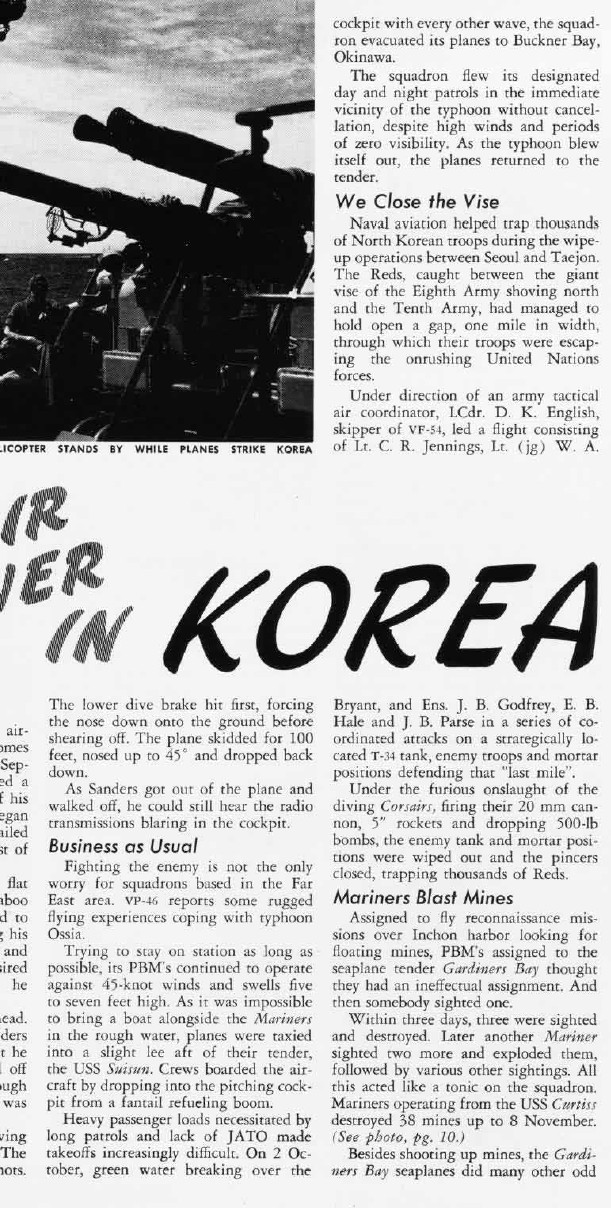
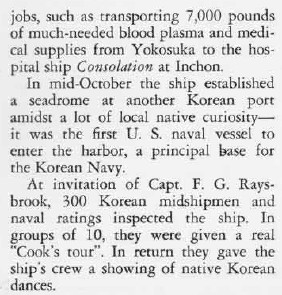
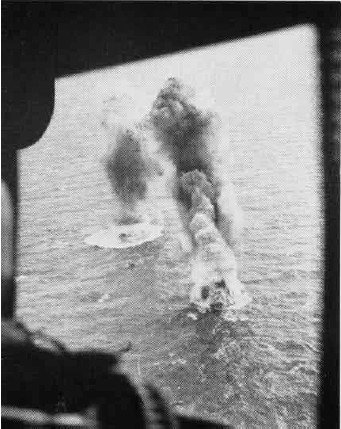
Use of JATO to take-off Seaplanes in rough water/shorter distances

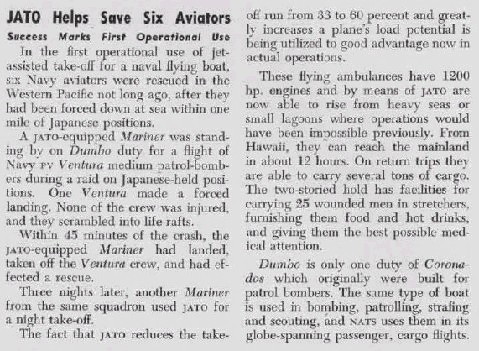
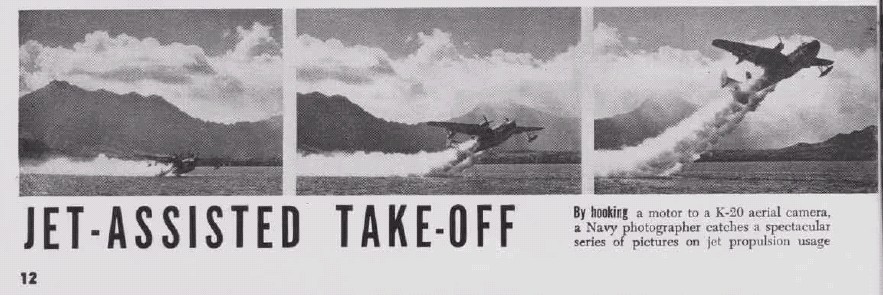
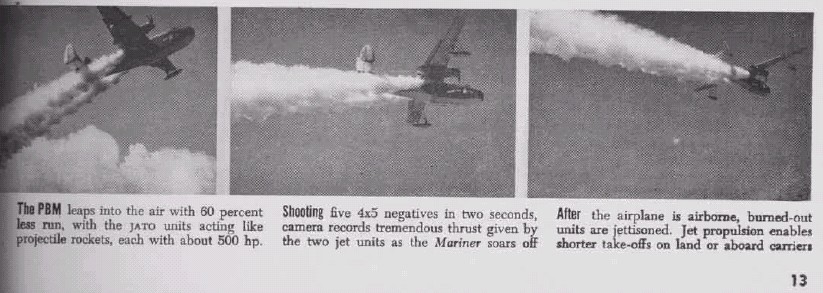
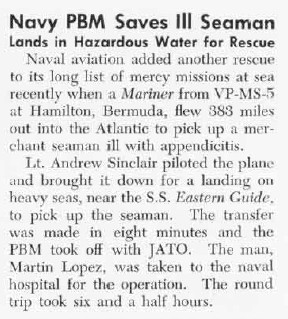

Reverse Pitch Props not Available in WW2, but available ever since!
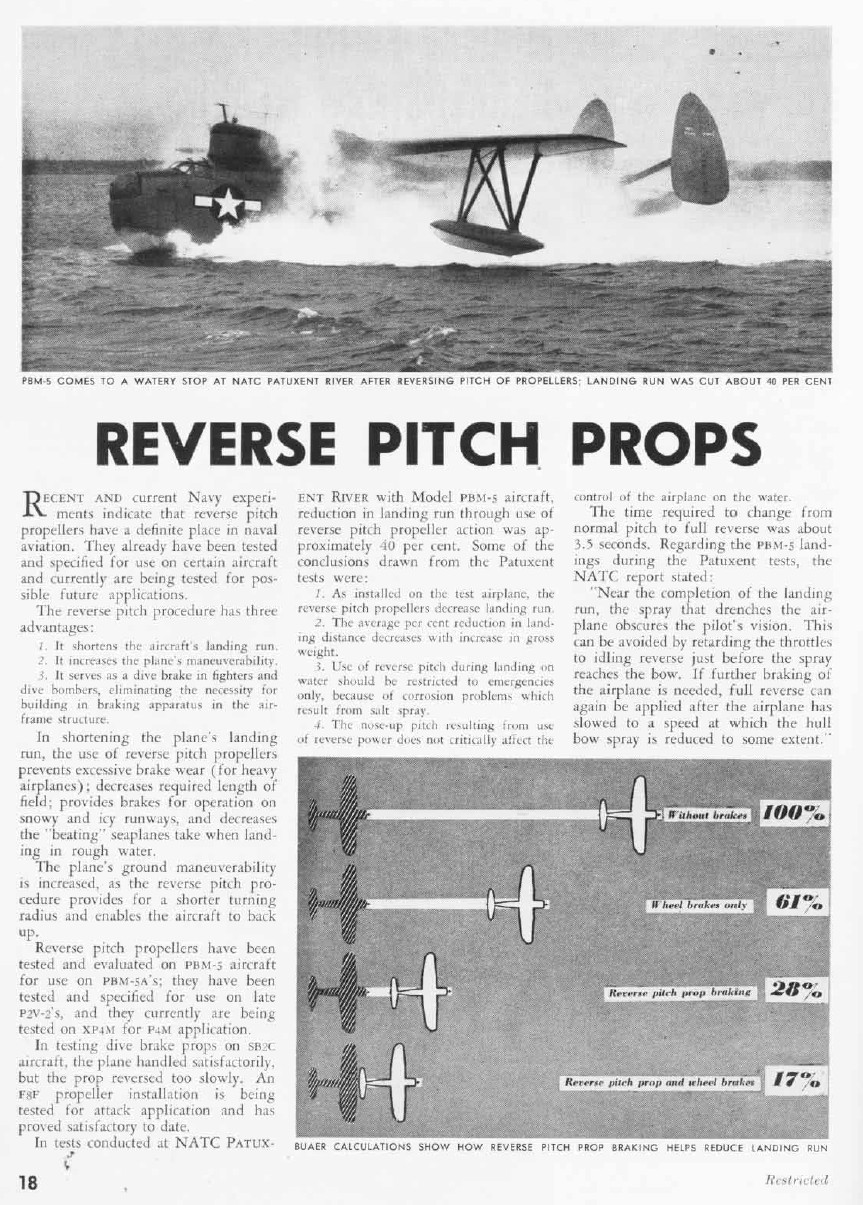
Turboprop Engines
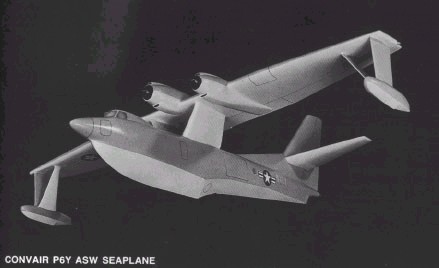
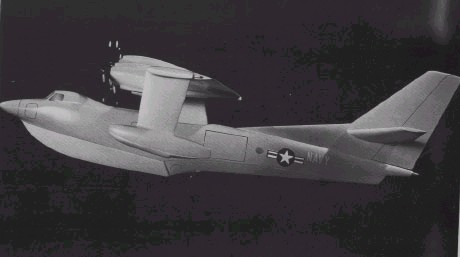
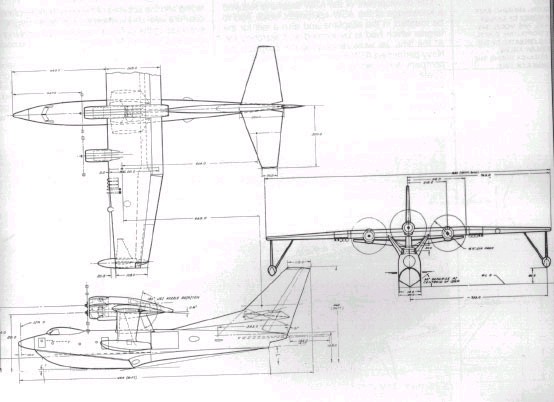
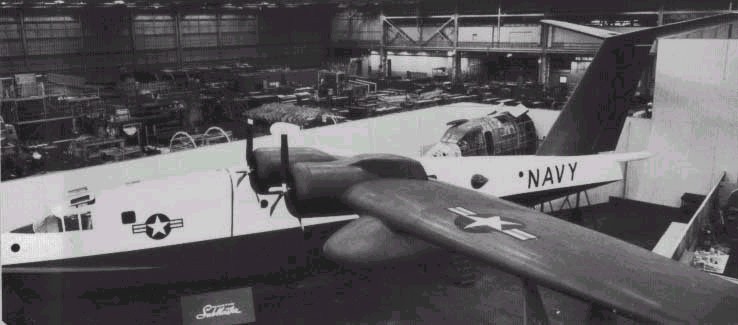
The promising P-6Y had dipping sonar after landing on the open ocean to hunt for enemy submarines and not just toss out expensive sonobuoys was the replace the P-5M Marlin...cancelled in the 1960-destroy-the-seaplanes "purge" by the Stalinist aircraft carrier mafia assholes.
Contra-Rotating Props
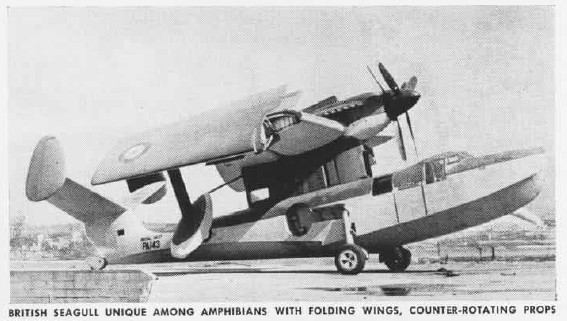
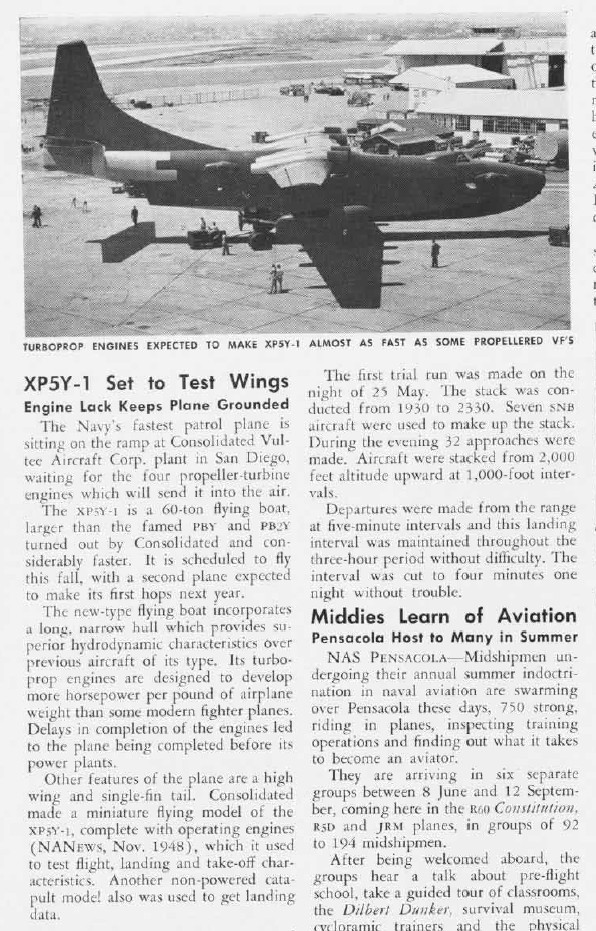
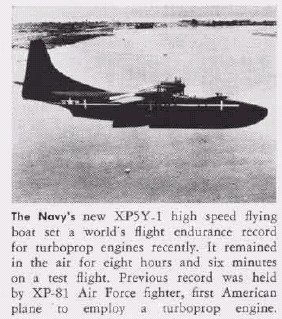
When the XT40 contraprop/turbine combination failed in the SkyRaider improvement, SkyShark, and the R3Y Tradewinds, the AJ-2 Savage and the POGO, WHY DIDN'T WE GO TO THE BRITISH FOR HELP AND USE THEIR RELIABLE CONTRAPROP/TURBINES USED IN THE HIGHLY RELIABLE, SUCCESSFUL FAIREY GANNET USED FROM 1954 TO 1965?
The Gannet could do it...damn it...
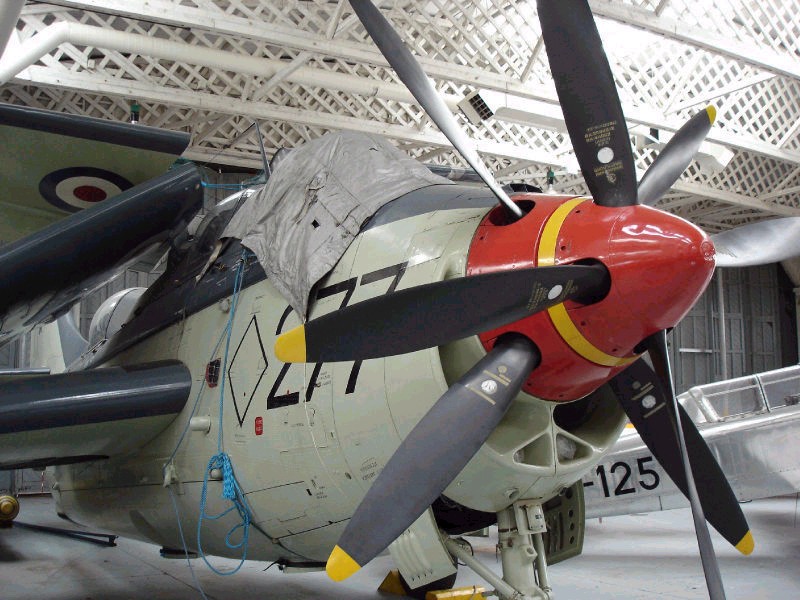
3, 875 shaft horsepower....don't you think one Double Mamba
[http://en.wikipedia.org/wiki/Armstrong_Siddeley_Double_Mamba] is enough to fly a SkyRaider/SkyShark?
2 for the Savage and 4 for the Tradewinds? When American engines stunk we used British Merlins to make the P-51 Mustang the great success it was....Oh, I forgot...this was a decision made by the U.S. Army Air Corps...and they wanted the P-51 to succeed...
What's the U.S. Navy's excuse for not turning to the British for contraprop turbine help?
They have none. They wanted to kill the SkyRaider and all seaplanes ASAP.
P.S. notice the observation by the British that their AEW capabilities went to shit when they no longer had fixed-wing Gannets and now have to rely on short-range BS helicopters.
http://en.wikipedia.org/wiki/Fairey_Gannet
EXCERPTS:
The Fairey Gannet is a carrier-borne Anti-submarine warfare and Airborne Early Warning aircraft of the immediate post Second World War-era developed for the Royal Navy Fleet Air Arm. It has a conventional monoplane mid-wing and tricycle undercarriage. The pilot sits over the gas turbine engine atop the fuselage and behind the double, co-axial, contra-rotating propellers; the one (or two) crew sit in additional cockpit stations behind the pilot. The second crew member sat in a separate fuselage "bubble" facing the tail.The Gannet's wings fold in two places to form a distinctive "Z" shape on each side. The first fold is at about 1/3 of the wing length where the inboard anhedral (down-sweep) changes to the outboard dihedral (up-sweep) of the wing . The second wing fold is at about 2/3 of the wing length.
Design and development
The Gannet was built in response to the 1945 Admiralty requirement GR.17/45, for which prototypes by Fairey ("Type Q") and Blackburn B-54 / B-88 ("YB 1") were built. The prototype first flew on 19 September, 1949 and made the first deck landing by a turboprop aircraft, on HMS Illustrious on 19 June 1950, by pilot Lieutenant Commander G. Callingham.
Engine
After considering and discounting the [liquid-cooled, piston engine] Rolls-Royce Merlin (actually, twin Merlins) due to size, the Fairey decided to install an engine plant based on the Armstrong Siddeley Mamba. The Double Mamba (also commonly called the "Twin Mamba") was selected, driving two counter-rotating propellors through a common gearbox.
The ASMD 1 engines (2,950 hp) were used in the AS 1, ASMD 3 engines (3,145 hp) in the AS 4, and ASMD 4 (3,875 hp) in the AEW 3 variant.
The Double Mamba engine could be cruised with one of the engines stopped, to conserve fuel and extend endurance. It has been said by pilots that, while this was possible, it was inadvisable at low altitude - in case the operating engine stopped for some reason. This happened frequently enough to be a "known fault," and created considerable disquiet for the crew while that or the other engine was restarted.
www.thunder-and-lightnings.co.uk/gannet/
FAIREY GANNETAEW.3 XL502; Garry Lakin
The Gannet was very much an unsung hero; it was vital to the Navy's anti-submarine defence for several years before helicopters took over this role, but it was in the airborne early warning (AEW) role that it ended its career. The lack of any AEW capability was to prove near-disastrous only a few years after the last AEW Gannet was retired. To this day the Royal Navy only has limited AEW capability in the shape of Sea King helicopters equipped with AEW radar - and these can never hope to even compare with the effectiveness of Fairey's most outstanding product.
Jet Engines


Supersonic Seaplane Bombers



Tender Ship/Seaplane Interfaces
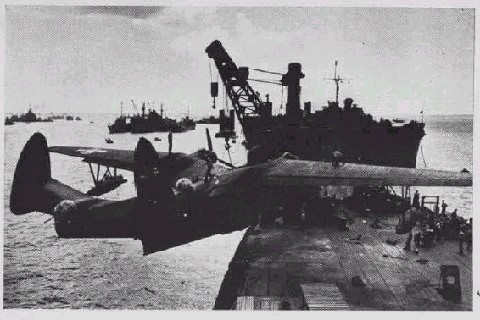
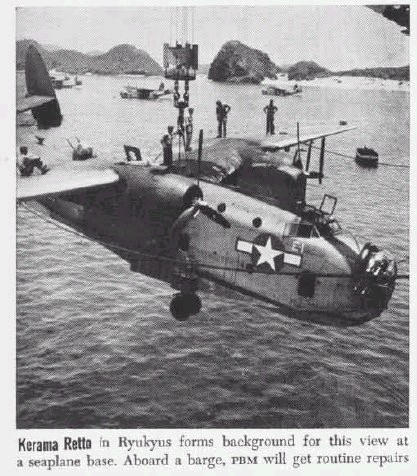
Large Seaplane Catapult Launching

One of the key mistakes the Navy seaplane community made was not to keep pursuing CATAPULT LAUNCHING of large seaplanes from their tender ships. The XPBM-2 as large as it was, was catapulted from a large in 1942. The German U-Boat threat was so pressing, this improved model PBM with twice the fuel/range was dropped in favor of increasing basic PBM 1 production. Being able to launch from the tender ship would eliminate the sea state as an operational no or no-go mission consideration for getting into the air. Reducing the seaplane/sea interface to just landing by the tender would greatly increase flexibility and save time and work.
Narrower Hulls
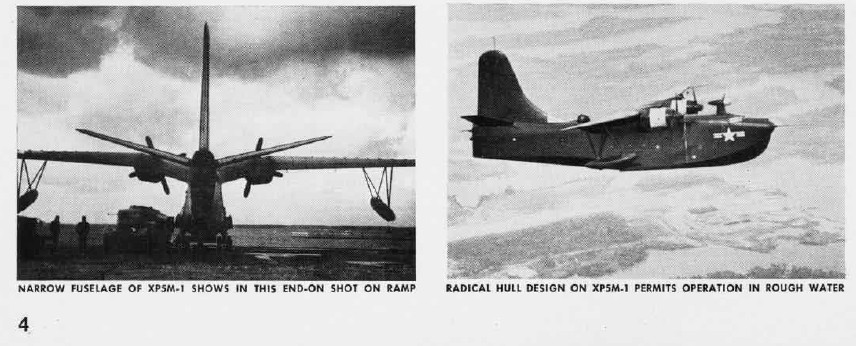

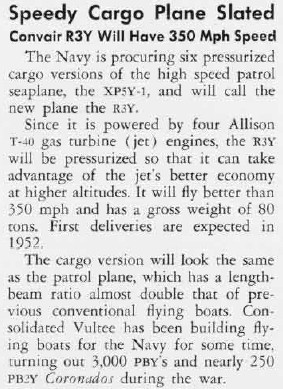
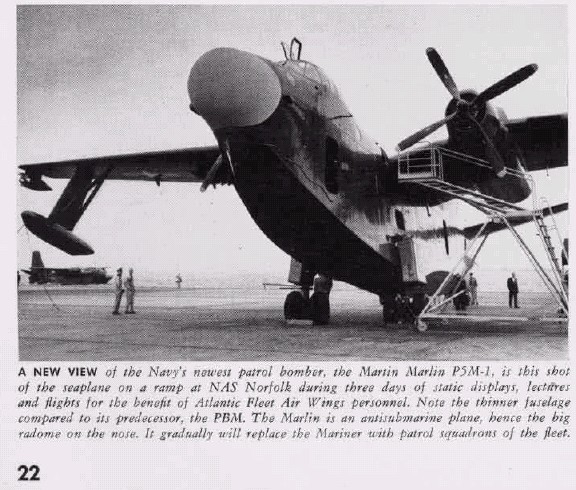
Skis to make initial water contact

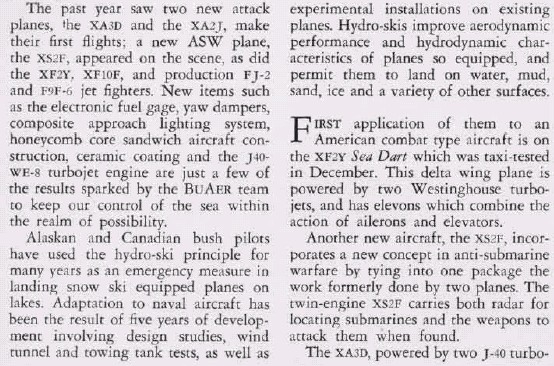
We discovered from bush pilots that all you really need to land on the water are skis or even a single ski...if you don't slow down you don't even need to float....the PANTOBASE ski system for water, snow and ice doesn't interfere with landing on ground and can be fitted to any aircraft. Sealing the hull and adding wing floats are minor changes that only impact aerodynamically by 2%. If you make the skis and wing floats retract, flight performance penalty is ZERO. The technology (know-how) is there. We just have to regain THE WILL to land in the water.
Sea Plane Refuel improvements
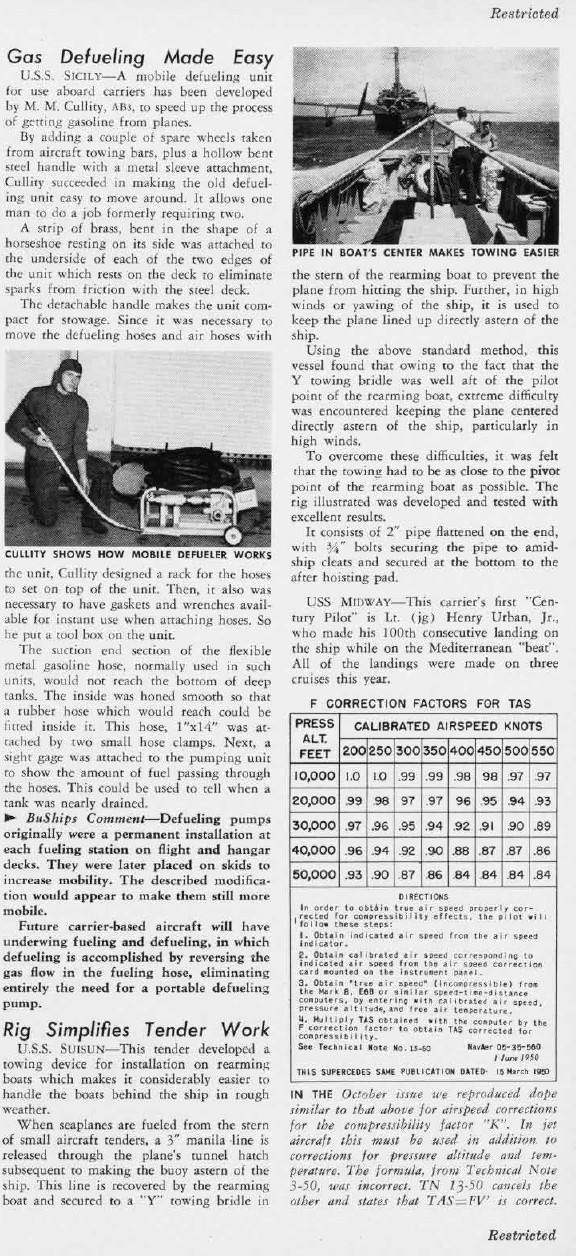
Seadrome Lights
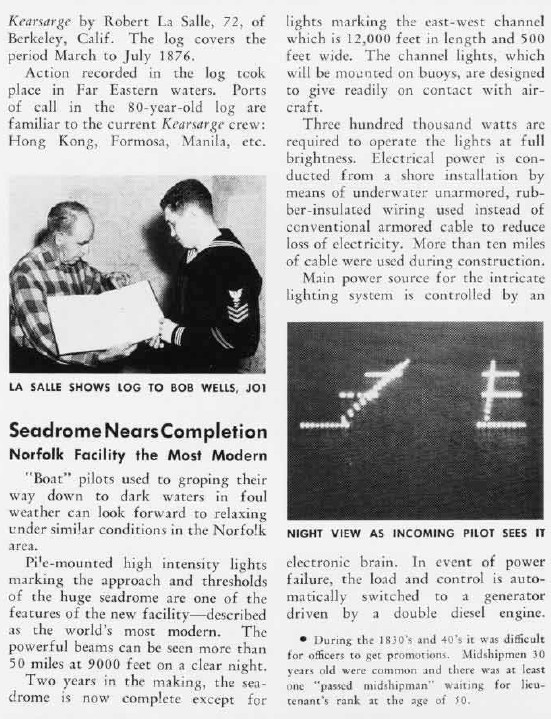
Air Brakes act as rudders in the water
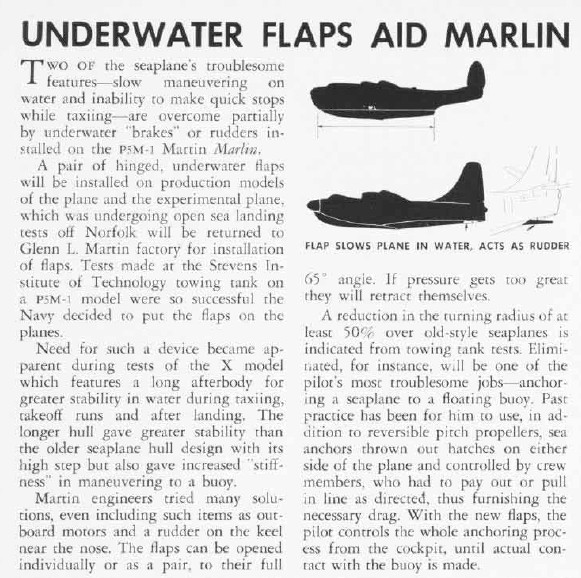
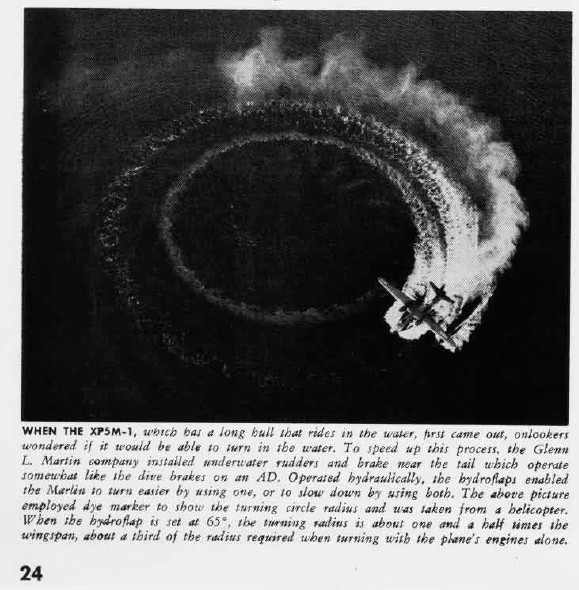
Amphibians with their own landing gear
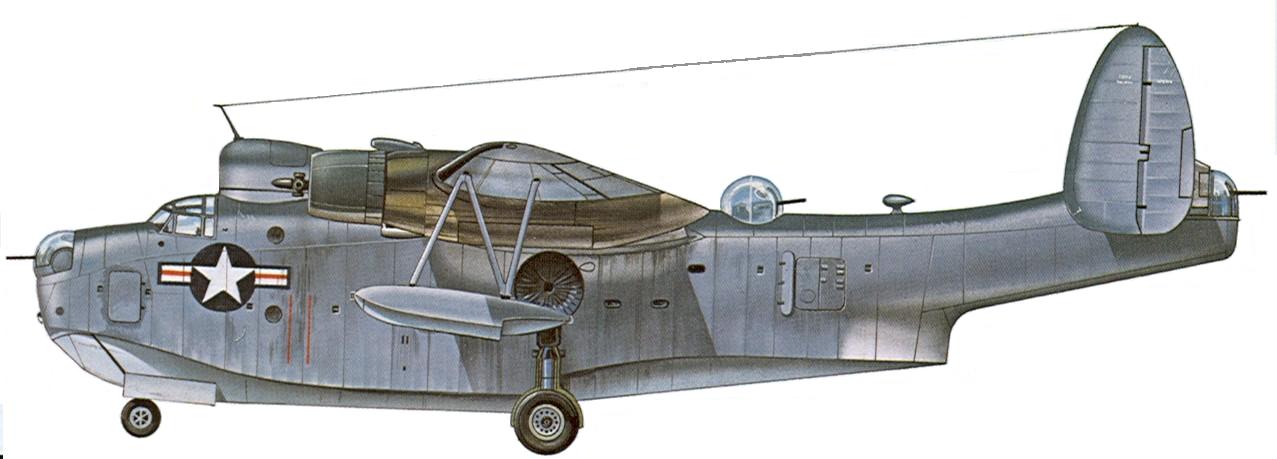
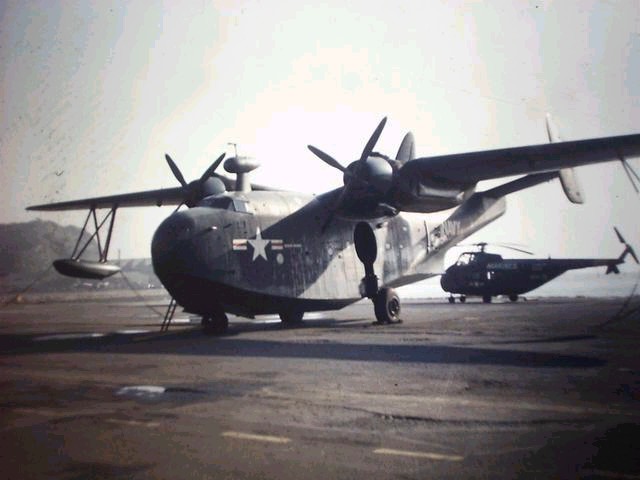
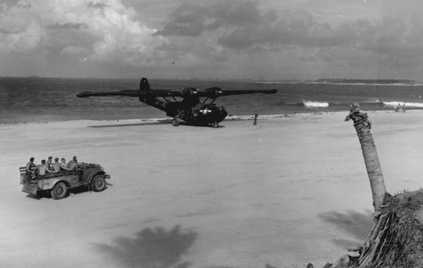

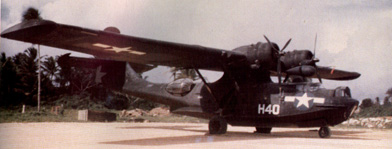
Mobile Dry Docks for Repairs
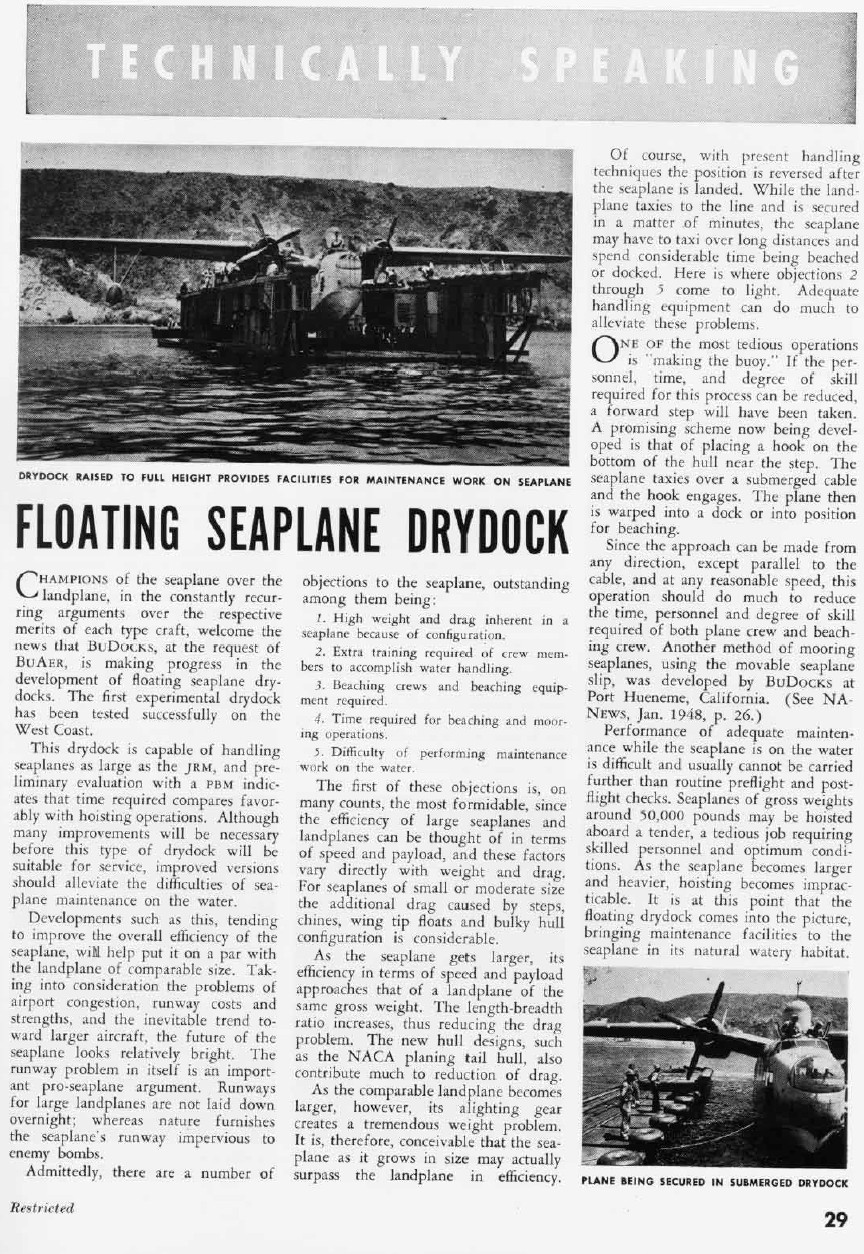
Beaching Cradles for Seaplanes without Landing Gear
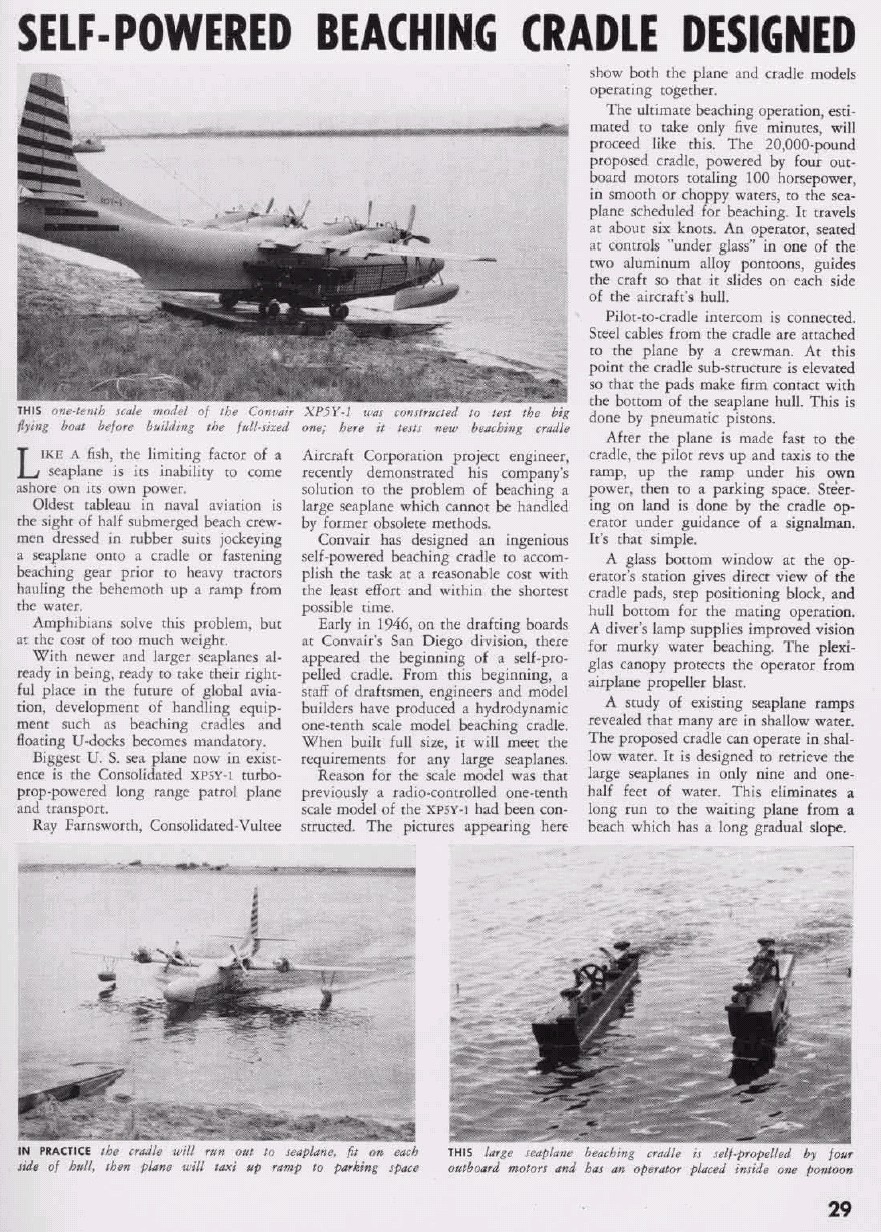

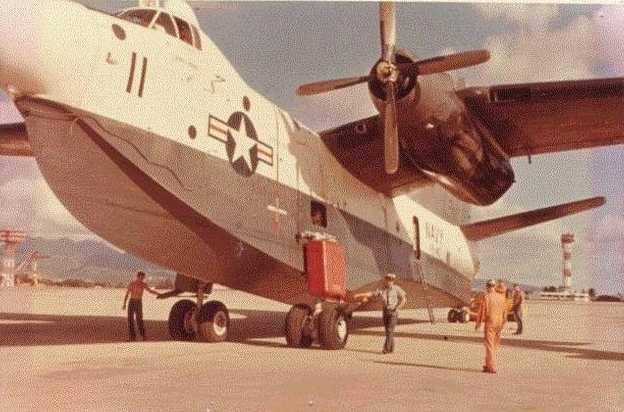
 A History of Success that continues on...despite of the U.S. Navy and its marines...
A History of Success that continues on...despite of the U.S. Navy and its marines...
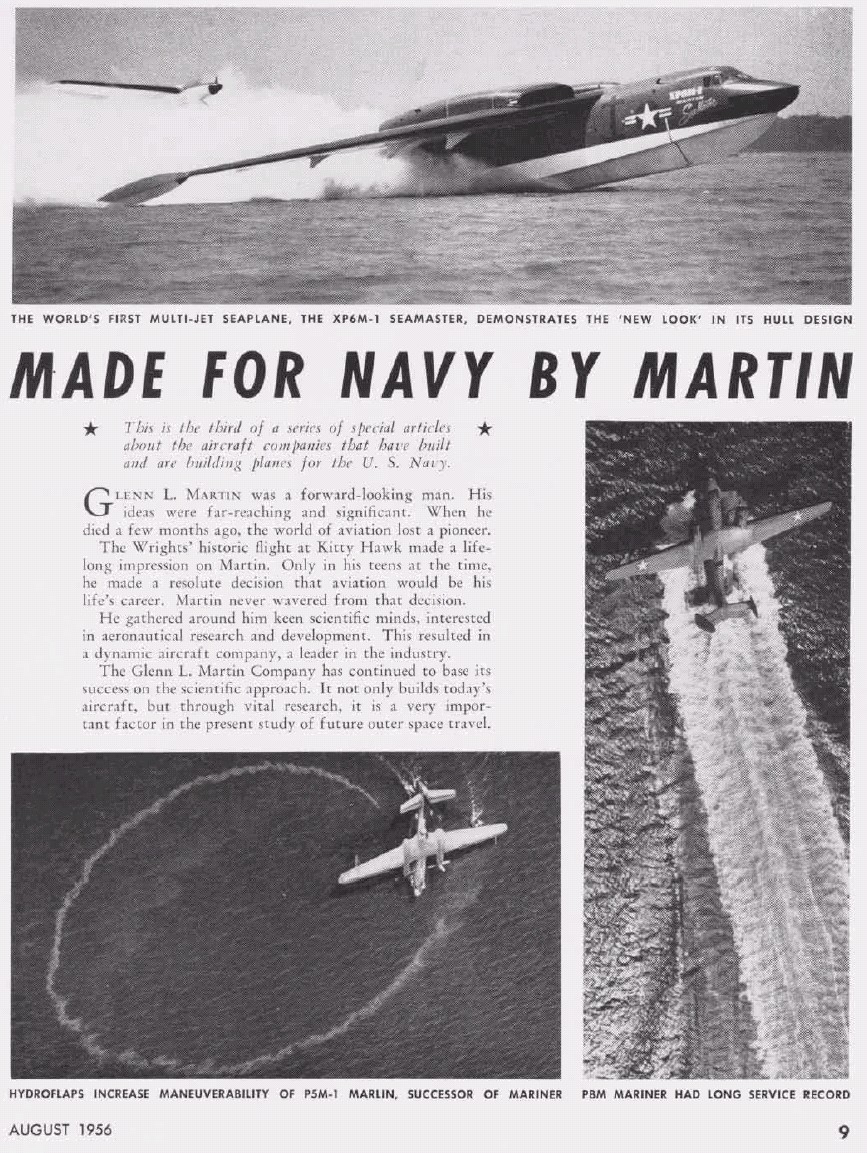
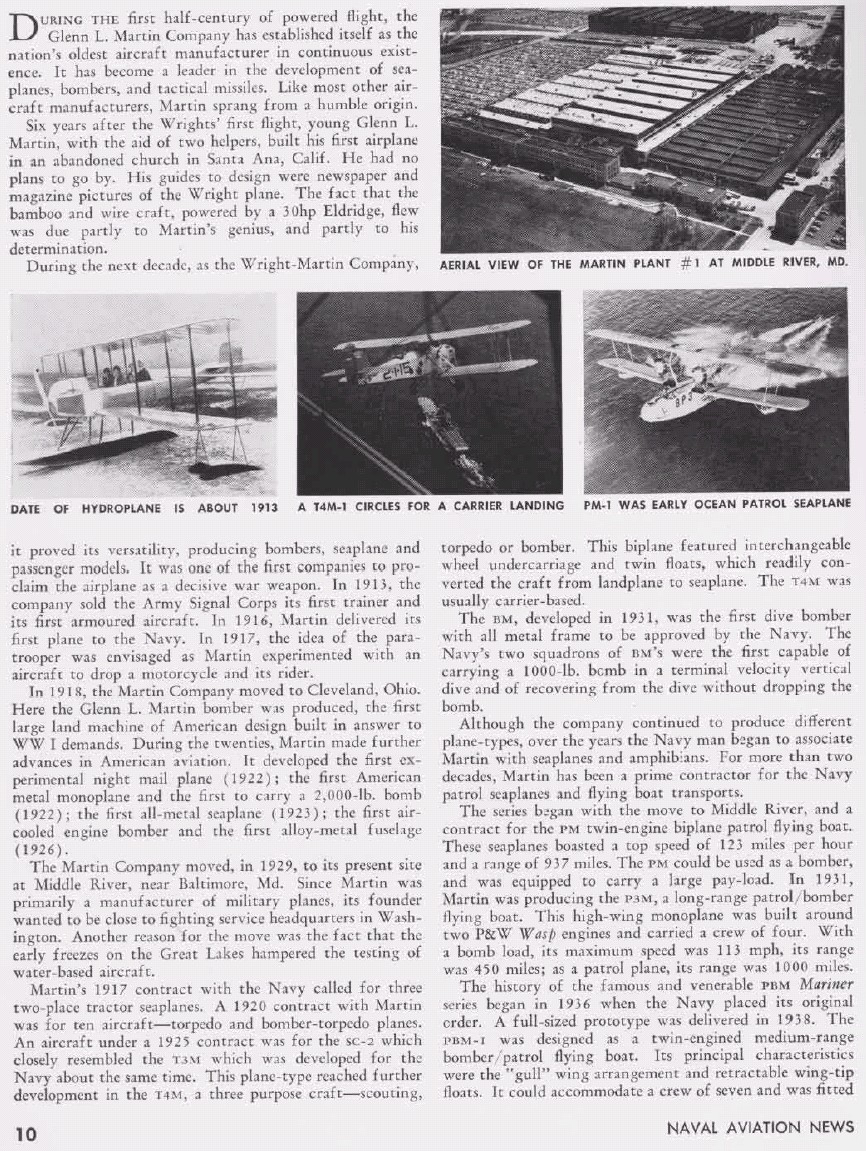
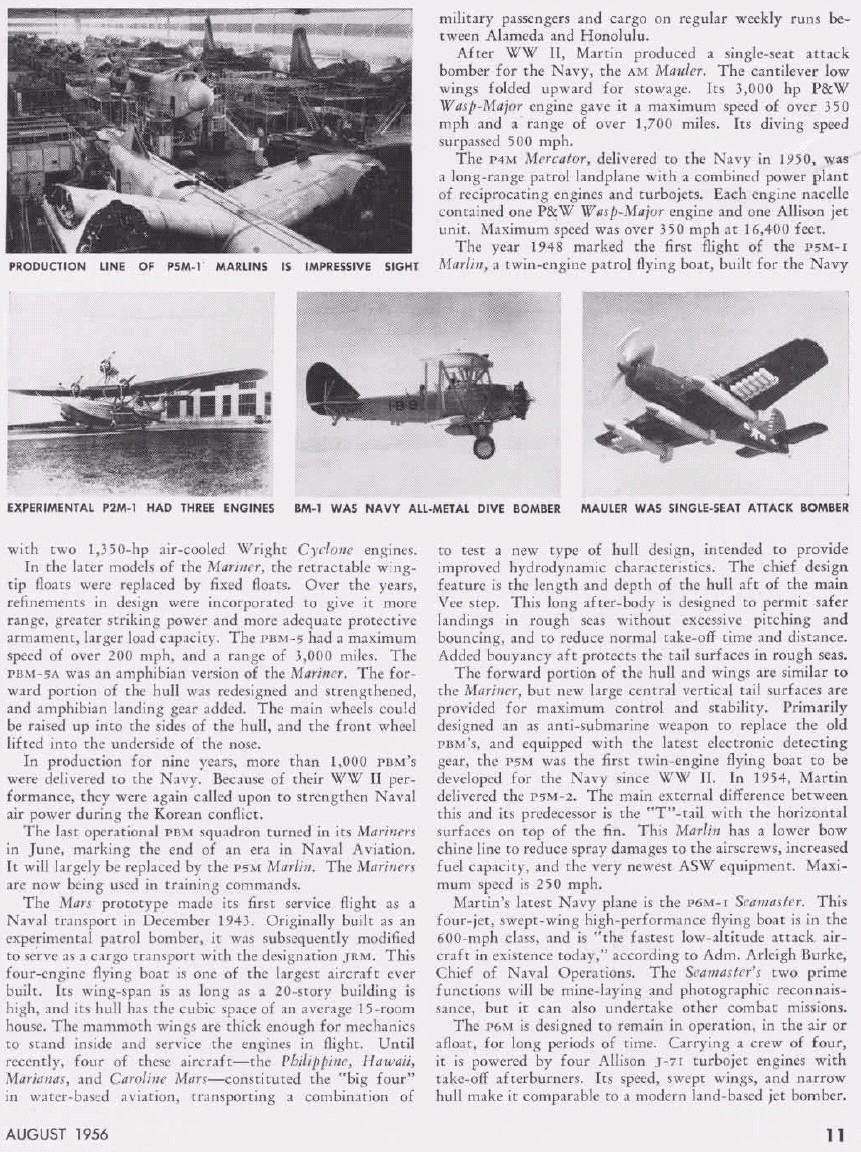
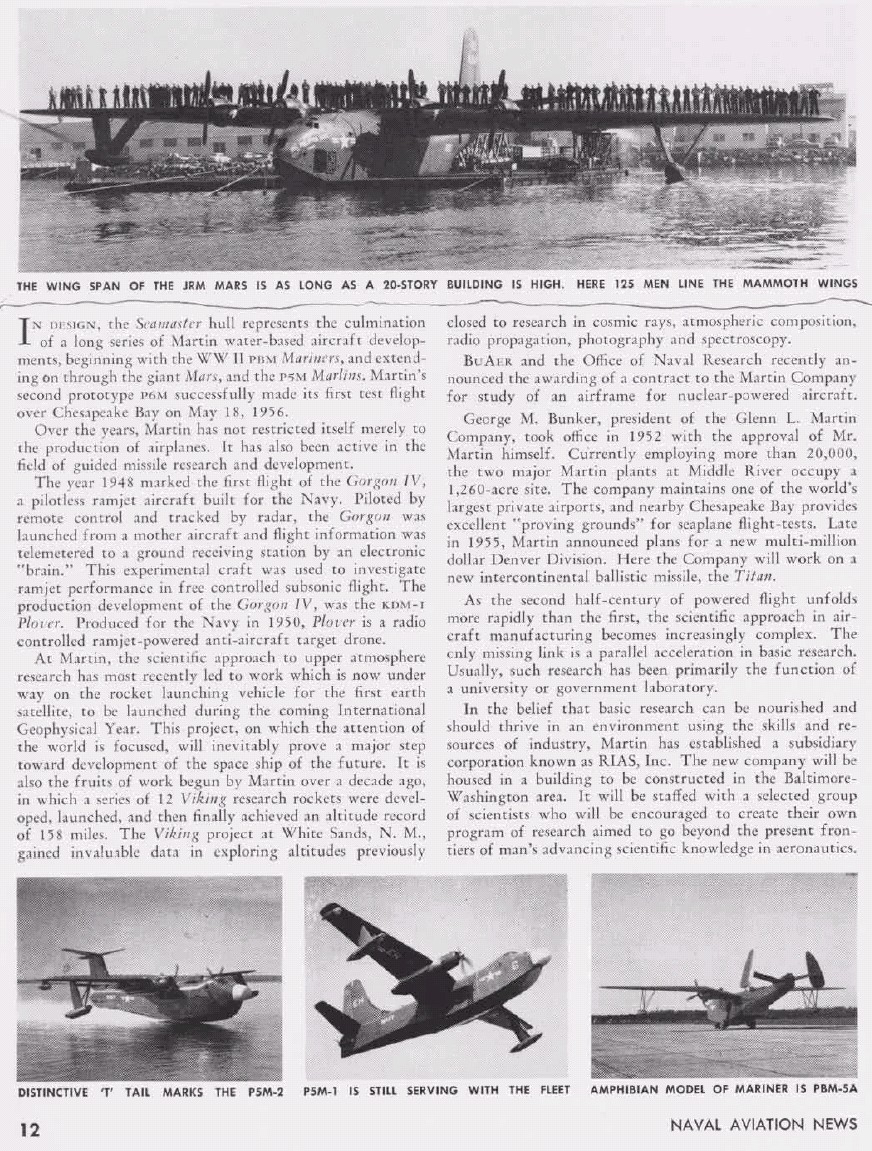
60 years of Seaplane Design Triumphs in 1960; U.S. Navy Stabs Everyone Involved in the Back!
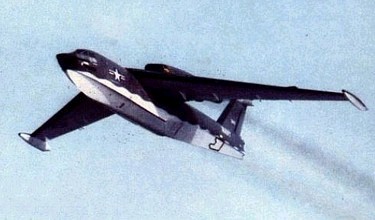
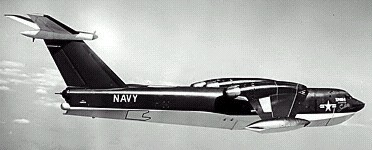
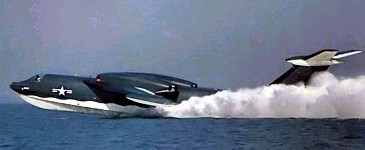
As you can see above, great progress was made in seaplanes by the Navy and by 1960, Martin had solved the aerodynamic handicap once and for all, and the aircraft carrier mafia realized their "gig was up" so they shut down seaplanes quickly before the truth got out that they were now more capable than land planes in EVERY way.
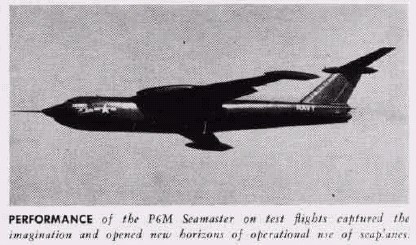
The aircraft carrier's contribution to the war effort is distorted as doing the lion's share of the work which is simply not true. Reports are that the extreme costs of nuclear-powered aircraft carriers are forcing our Navy from 12 to 8 carrier battle groups. The aircraft carrier is a ship with a relatively small airstrip on top. While the ship sacrifices itself so to speak, by crashing forward through the waves it does this to keep the flight deck straight and level for LAND aircraft to land at sea! The oxymoron here is astonishing. The aircraft carrier is a "work-around" to the lack of range/payload of WWII-generation aircraft and to work-around the need for advance naval land bases. However, the limit of the flight deck reduces the size/payload of the land airplanes that can be slung off the decks and recovered to such a degree that the cost efficiency is far less than a large heavy bomber that can take-off from 10,000 foot runways or better yet giant seaplanes that have an unlimited water runway to use to get lift to take off. We understand that there are times when the sea conditions may be too rough for a seaplane to land, however these are also times when the aircraft carrier, on station cannot conduct flight operations without losses by mishaps due to bad weather. Nearly all aviators in all the services are reluctant to admit the simple fact that often bad weather on planet earth means they cannot fly and are grounded. Its all a question of immediacy, but its moot point if the seaplane bomber is resting on the stern holding ramp of a surface forward arming and resupply (FAARP) ship (seaplane tender) waiting for the seas to calm. Furthermore, the original Lockheed C-130 seaplane concept had a small hydrofoil that would greatly expand the sea state conditions the P-6M SeaMaster could land on.
The greatest asset of the aircraft carrier, on-scene presence is also its biggest curse, its one hell of a target and 4GW psychological prize if the enemy can get it. The Navy's going to discover, hopefully by wisdom and not 5,000+ dead necessity that it must conduct naval bombardments by seaplane bombers and FAARP ships and submarines so the enemy does NOT have a long-term target to track, hunt and destroy. The Navy's seabased "B-52", should be a "P-6MA2 Seamaster II" in modern form that will need fighter air cover from manned fighter-bomber darts and maybe Unmanned Combat Air Vehicles (UCAVs) if the latter can be made to work, and these will still need flight deck aircraft carriers so there's no need to go out and sell your leather flight jackets.
Seaplane Fighters: YES
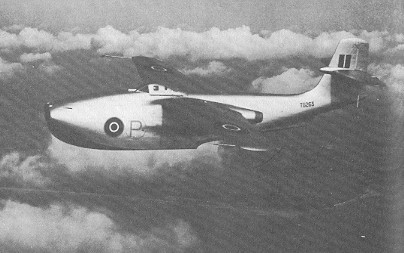
www.youtube.com/watch?v=d9ks7RF9TBM
www.youtube.com/watch?v=VT-N-ReR-ls
Maurice Allward writes:
"Thus in 1944 Britain issued a specification for a single-seat, twin-jet fighter flying boat for use in such areas. Of interest is that four years previously the Japanese Navy had issued a specification for a single-seat fighter seaplane to cover the early phases of amphibious landings and for the defence of small islands where hard runways were impractical! The result of this specification was a float-plane development of the exceptional 'Zero' fighter, the appearance of which was one of the more unpleasant shocks given to the Allies during the initial stages of the war in the Pacific."
The following is from "The JET AIRCRAFT of the World" by William Green (February 1956)
The unique operational flexibility of the water-based fighter has attracted many aircraft designers but, owing to hull drag, the flying-boat fighter employing a conventional hull structure cannot compete in level speed with its land-based counterpart. However, the water-based fighter can perform a variety of useful roles, and the obvious value of such combat aircraft during the war in the Pacific resulted in the issue of specification E644, which called for a single-seat, twin-jet fighter flying-boat.
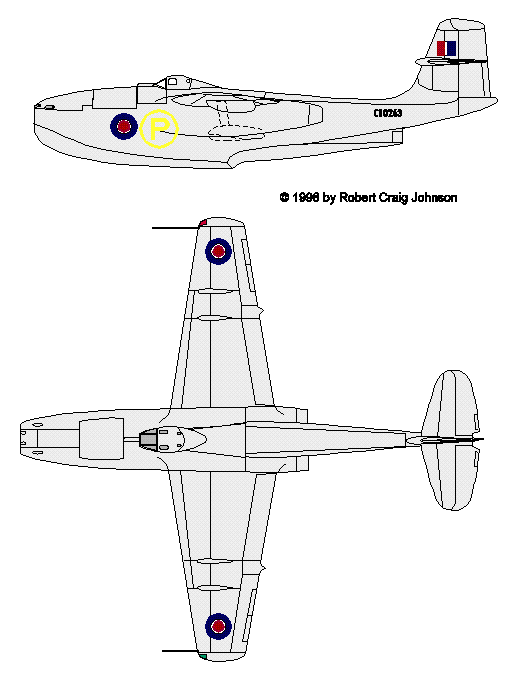
To meet the requirements of this specification, Saunders-Roe Ltd. produced the S.R.A.1, which, while of conventional construction and employing conventional hull design, embodied several features which were, at the time of its appearance, novel. The first of three S.R.A.1 prototypes flew on July 16, 1947, powered by two 3,250 lb. thrust Metropolitan Vickers Beryl M.V.B.1 turhojets housed in the hull with a common intake in the nose and outlets just aft of the wing. The first prototype, which was the world's first jet flying-boat, was followed by a second machine powered by two 3,500 lb. thrust Beryl M.V.B.2 turbojets, and a third prototype powered by two 3,850 lb. thrust Beryl 1 (M.V.B.2) units.
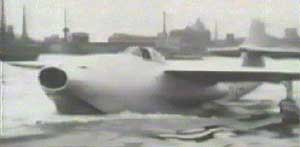
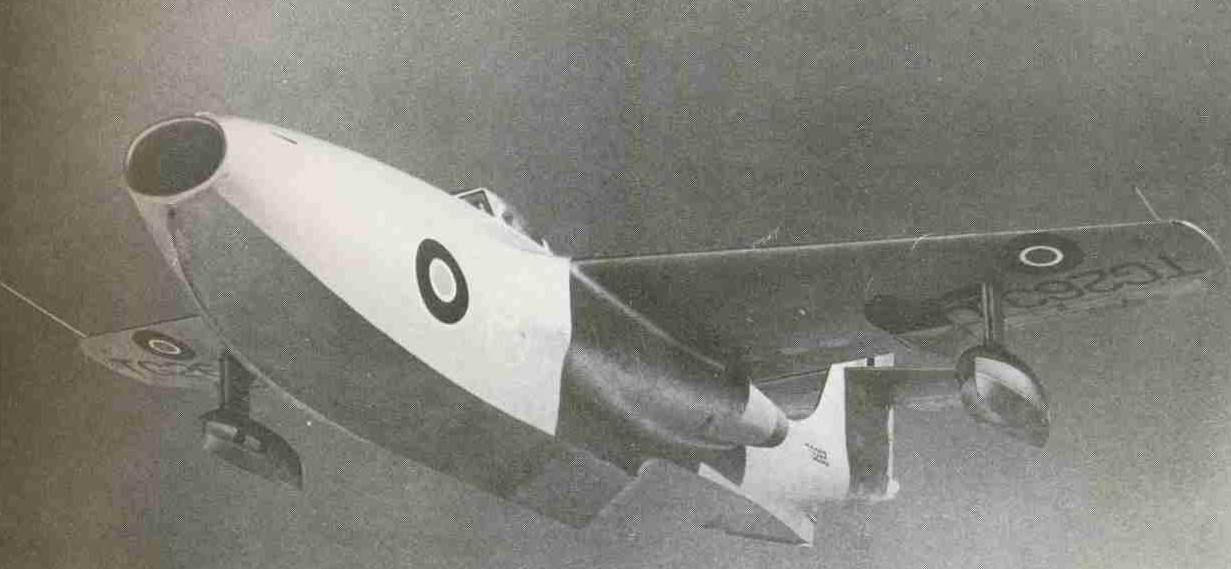
The S.R.A.1 had a normal fuel capacity of 425 Imp. gal., and jettisonable fuel tanks could be carried under the wing inboard of the retractable stabilising floats. Loaded weight was l6,255 lb., and empty weight was 11,262 lb. The third prototype attained a maximum speed of 516 mph., and initial climb rate exceeded 4,000 ft/mm. Dimensions were: span, 46 ft.; length 50 ft.; height, 16 ft. 9 in.; gross wing area, 415 sq. ft."
The Navy solved the boat hull aerodynamic loss problem by using skis.
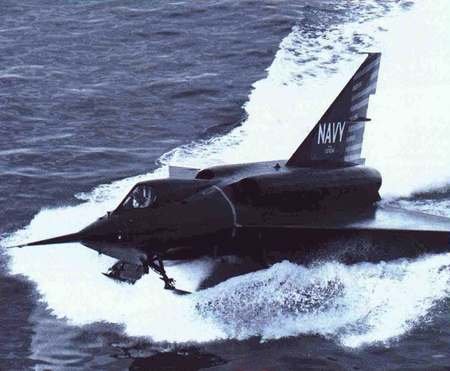
The next move to a smaller aircraft carrier that can perhaps submerge or be much more stealthy to avoid SSC targeting by Short Take-Off and Landing (STOVL) fighter-bomber darts like the Lockheed/Martin lift-fan F-35 Joint Strike Fighter that require less landing deck space or even better a seaplane JSF that takes off on skis like the Convair SeaDart that could escort the SeaMasters from FAARP ships/subs are hard choices the Navy must make if its to have a future and not have a rendezvous with disaster if it perpetuates the large-deck aircraft carrier. Right now, the Navy is not making these kinds of hard choices or being honest with itself as it drifts with the marines towards defacto irrelevance.
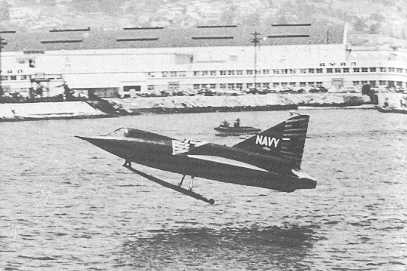
The F-35's ability to land vertically simplifies what's needed to float in the water to small skis or pontoons.
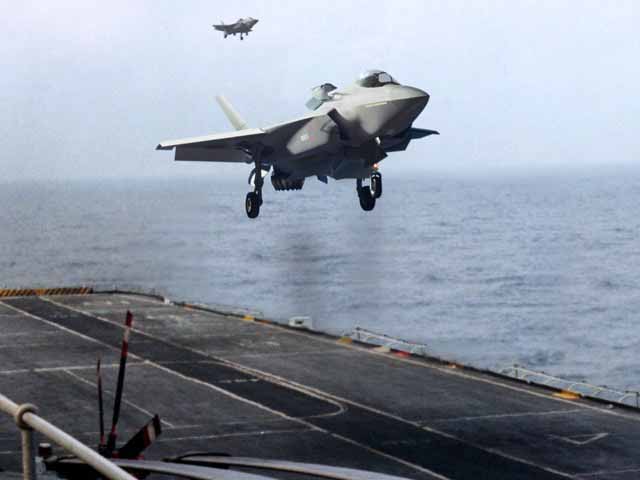
Now the SSF has the "SeaDart" to self-protect themselves without needing an aircraft supercarrier.
UPDATE 2005: What do we do next?

Since we put this web page up last year we discovered in the 1950s the USAF tested a ski system on C-123 transport planes:
The first thing we must do immediately is get back into the seaplane business by purchasing and start using floatplanes or better yet Pantobase skis on Lockheed/Martin C-130J turboprop aircraft to deploy USN SEAL team squads over the rear ramp after the aircraft has landed in the water, under the curvature of the earth and radar horizon just like U.S. Army SF uses MH-47D/E Chinook helicopters to launch boat team "Delta-Queen" style. The SEALs can still train for and practice "rubber duck" and "rigid duck" parachute water jump insertions of themselves and their small boats in case the waters are not favorable for a seaplane landing or a seaplane is not available. However, if they are dropped and their boats fail to work with C-130 floatplanes they can signal for an immediate pick-up and retry the mission after their gear is fixed or replaced. Float/ski plane C-130s offer SEAL squads an exfiltration means also that could recover surface or sub-surface craft or combat swimmers with fins and mask. Again capabilities must be valued more than what is just ego-gratifying. The U.S. Navy had a "Flying LST" in the 1950s called the Convair Tradewind turboprop seaplane cargo aircraft which had counter-rotating propellers that flew faster (403 mph) than C-130s until the "J" model introduced recently in the 1990s! The float/ski plane C-130 would be regaining a capability the USN should have had since the 1950s!
Aviation expert Earl Swinhart writes:
"Thank you for your comments. It's always nice to hear from someone who has an opinion (either positive or negative). Keeps me on my toes.Even though only eleven Tradewinds were built, they represented 'cutting-edge' technology in military turbo-prop cargo craft design. It was even a few years ahead of the U.S. Air Force's C-130. Had it not been for the troublesome GM/Allison T-40 engines, the Tradewind would have had a much longer production run and contributed much more to military aircraft.
If you would like to see a photo of the Tradewind with its nose raised for cargo loading, go to www.aviation-history.com/convair/tradewind. This version was known as the 'Flying LST'."
Another mission for C-130 floatplanes would be to deliver U.S. Army M113A3 Amphigavin crews to APS-3 sealift ships so they can swim these ocean-swim kit upgraded vehicles can swim ashore to expedite the offload of Army prepositioned land vehicles/supplies without need of a port.
Another application would be the C-130 floatplane ramps modified on the lip end to float in the water so a M113A3 Amphigavin amphibious tracked AFV and its up to 11-man personnel on board can splash ashore to do combat missions as a Light Cavalry/Dragoon combined-arms force with multiple weaponry (autocannon, missiles, cannon, rockets, machine guns, grenade and mortar launchers) and mission equipment variants (laser designators, mobile trauma ambulance, C4I, mast-mounted sensors). A very powerful amphibious light tracked AFV combat force has been critical to winning battles in WWII, more recently in the 1971 Indo-Pakistani war and used successfully by our enemies in Vietnam. Amphibious "Air-Mech-Strike" using ocean-going M113A3 Amphigavins and C-130J floatplanes would be a powerful 3D capability and threat that sea anti-access strategems would not counter.
The long-term: the return of the P-6MA2 SeaMaster II seaplane heavy bomber
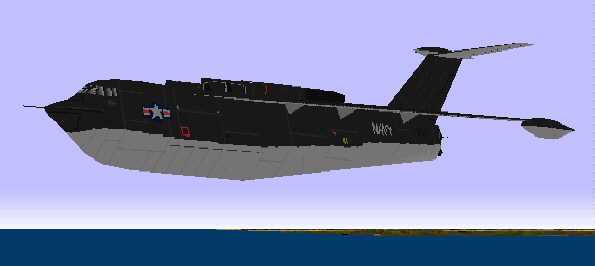
Fortunately the Russian Beriev company makes the world's best military jet seaplane called the A-40. A partnership with an American company could create a westernized version with "P-6MA2" SeaMaster aerodynamic refinements like the Burnelli lifting fuselage technology to make the 400 mph A-40 fly at the 600 mph the SeaMaster could do with better fuel economy. If not, the as-is A-40 with U.S. engines will do. We need capabilities now not another 10-20 R&D program that leads to no production aircraft and capability. The modern SeaMaster II would have regular wheeled landing gear and eventually tracked landing gear to operate from land as well as from water. It would be beneficial if a rear ramp or nose that could open while in the water for offloading was provided so M113A3 Amphigavin AFVs could splash ashore as well as other seacraft to include rescue mini-subs so if a nuclear submarine like the Kursk goes down and men are trapped below, the SeaMaster II can fly directly to the water above the trapped sub, launch the mini-sub and rescue the men.
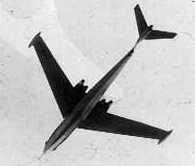
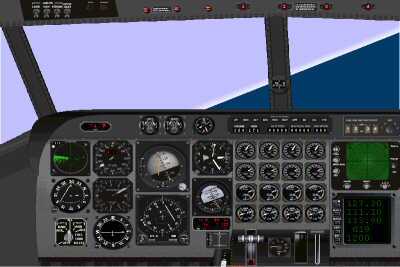
To accompany and resupply the SeaMaster IIs would be specially modified amphibious ships with stern holding ramps and clandestine submarines, reducing the need for land bases that tend to inflame the locals who envy American affluence and rightfully detest our 20-something's MTV like behaviors.
Who would own and operate the P-6MA2 SeaMaster IIs?
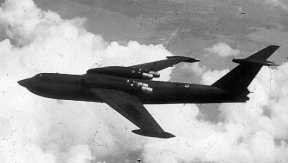
The Navy Patrol Squadron community which now operates long-duration Electra turboprop airliners turned into P-3C and EP-3C Orions would own and operate the Navy's SeaMasters. Their mission capability would be expanded thanks to the P-6MA2 SeaMaster II from ASW patrol to water area surface Combat Search and Rescue (CSAR), DSRV submarine undersea rescue and Strategic/Tactical bombing using precision guided munitions, seamines and cruise missiles. During peacetime if a P-6MA2 sees a group of people in the water needing rescue, they can land on the water and immediately help them with onboard medical care experts and supplies and rescue them by flying back to shore bases. A whole aspect that the USN is avoiding is that in all-out naval combat ships go down. Who is going to rescue all the men floating in the water? At least in WWII we had hundreds of PBY Catalina seaplanes, today we have zilch. If a USN ship goes down in wartime hundreds of men will be left to the elements to die and be eaten by sharks like what befell the USS Indianapolis because it was on a secret mission delivering A-Bombs and earlier in the war, the USS Juneau where the 5 Sullivan brothers died. The oldest Sullivan survived the torpedo attack but was eaten by sharks when the USN didn't send a PBY patrol plane to rescue him and his comrades.
For ASW missions, dozens of SeaMaster IIs could cover a large area if fitted with airborne Magnetic Anomoly Detector (MAD) tails, but could also land and quietly listen for enemy submarines using dipping sonar, saving lots of money over dropping sonobuoys though this would still be a capability in an intense hunt. The P-3 replacement program called the Multimission Maritime Aircraft (MMA). The Broad Area Maritime Surveillance aircraft is being proposed as an absurd modification of the land-based 737 jet commuter airliner when what the USN needed all along was the P-6M SeaMaster jet seaplane that can land on water.
Navy Attack and Patrol SeaMaster Squadrons would also in time of war be able to lay mines to keep a Red Chinese invasion fleet from crossing to land on a Taiwan, as well as launch anti-ship missiles to sink enemy capital ships. Fighting sub-national groups in places like Afghanistan where the U.S. is hard-pressed to have land bases infrastructure, the SeaMasters can saturation and precision bomb using sea-based FAARP ships and submarines at less cost and vulnerability over large deck aircraft carriers.
NEW!
Burnelli type seaplanes!
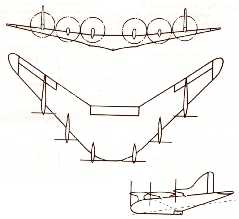
The Vincent Burnelli lifting body design could be applied to a seaplane....British designer H. Roxbee Cox proposed this 6-engined flying wing seaplane just before WWII...with an unlimited take-off run and the 100% lift efficiency of a flying wing, the SEAPLANE deserves another examination with modern technologies....
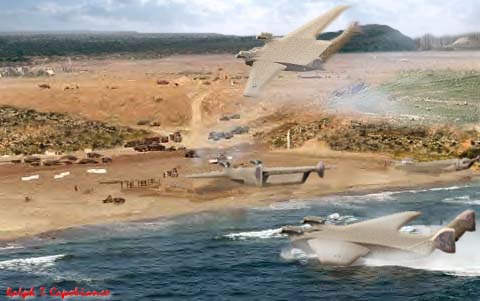
Also imagine if a Burnelli-type Extremely Short take-Off and Landing (ESTOL) aircraft had air cushion landing gear?
[Artwork courtesy of Mr. Ernest Zavala who is writing a book on the history of Burnelli aircraft]
It would become a defacto seaplane, able to land in oceans, rivers and lakes...and it would be able to land almost anywhere on land without actually needing hard surfaces for wheels to roll on....the Russians have already put into production such a combination airplane/hovercraft even though it was Bell Aircraft in the 1960s/70s that first conceived of flying prototype aircraft with this revolutionary landing/take-off system.....who needs costly, unsafe V/TOL hybrids if you can land almost anywhere in an extremely short distance irrespective of the terrain type?
Imagine setting up our troops anywhere around the world in less than 12 hours after leaving their U.S. home base and deploying them to surround the enemy in all terrain? Ride on a cushion of air and set them down without having to "daisy" bomb an area for landing an aircraft. Talk about them not knowing where we will strike!
For more info on the fascinating Burnelli type aircraft and how its THE solution to future fixed wing air transport:
UPDATE 2007: WHAT ARE WE GOING TO REPLACE OUR P-3Cs WITH? MORE LAND-BASE AIRCRAFT? WHY NOT A JET SEAPLANE??
Why settle for a landlubber, warmed-over civilian airliner that can't land in the water?
NO!
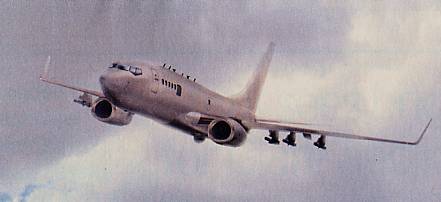
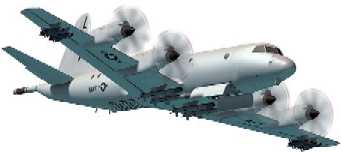
One of the things that saved the Royal Navy (RN) was that Argentine unarmed 707 jet airliners tailing their invasion fleet were run off by SeaHarrier STOVL jets. The Argentines had a hard time without space satellites and ocean patrol planes to locate the RN fleet to launch Exocet ASM and dumb bomb attacks until the fleet stopped offshore the Falkland Islands to offload ground forces. In fact, since the British chased off Argentine 707s from ocean surveillance with SeaHarrier jets during the Falklands war, the "lessons learned" migrated to their own ocean surveillance Nimrods which can be armed with AIM-9L air-to-air missiles to self-protect. I think we need to get longer ranged AMRAAMs on our patrol planes so the enemy fighter can be kept farther away/shot down.
In 2000, an unarmed USN EP-3 Aries II patrol plane was intimidated and then brought down by a Communist jet fighter after a collision. If prior to a war, a capable enemy blinds/disables/shoots down our ocean surveillance satellites, we will be in the same emasculated position as the Argentines were in 1982. Not only are our current P-3C Orion patrol planes often unarmed, the Navy wants to buy yet another civilian airliner, a 737 commuter jet to replace them at great cost but with little improvements in combat power. The time has come to face the facts that in naval combat RANGE achieved through a multi-engined, fixed-wing plane means a plane vulnerable to shoot down by smaller, faster enemy fighter jets flying from nearby land or sea bases. If we sail to defend Taiwan, WE WILL BE GOING INTO THE CHINESE ENEMY'S BACKYARD WHERE HE WILL HAVE THOUSANDS OF MISSILES AND JET PLANES to shoot down our P-3C or warmed-over 737 airliner patrol planes.
http://seattlepi.nwsource.com/business/70087_boeing13.shtml
Boeing 737 may be enlisted as a warplane
Monday, May 13, 2002By JAMES WALLACE
SEATTLE POST-INTELLIGENCER REPORTERST. LOUIS -- Flying off the Washington state coast recently, a Boeing 737 suddenly swooped low above the dark waters of the Pacific.
P-I GRAPHIC
http://seattlepi.nwsource.com/dayart/pdf/737military.pdfView a graphic showing the main attributes of the 737 business vs. military versions and the primary competition (Acrobat PDF, 120K).
When the jet was just a couple hundred feet above the waves and banking sharply, power was cut to one of the two jet engines -- a maneuver that no commercial pilot would deliberately make with a planeload of passengers. But this was no commercial flight. It was a demonstration for the U.S. Navy. Boeing wants the Navy to select the world's most frequently flown commercial jetliner as a replacement for the aging fleet of Lockheed Martin P-3C Orion maritime patrol aircraft and the EP-3C planes that gather intelligence. The purpose of the demonstration flight was to simulate an attack on an enemy submarine and show Navy officers on board that a two-engine jetliner designed to carry passengers at nearly Mach 0.80 can make a very good replacement for the lumbering four-engine turboprop Navy planes that often fly low and slow for anti-submarine operations.
It also was an effort to show that the 737 can operate safely and effectively in such an environment, even on one engine. If Boeing wins the competition, it would mean a lot more 737s rolling down the Renton assembly line.
"We are looking at a global market, but the heart and soul of the program is the U.S. Navy's requirement for about 200-plus planes," said Jack Zerr, general manager of Boeing's maritime aircraft program.
The maritime version of the 737 that Boeing is offering the Navy would be based on the Boeing Business Jet, which has a 737-700 fuselage and the bigger wing of the 737-800 to handle extra weight, including additional fuel tanks. But rather than being outfitted to carry business executives in plush comfort, the maritime version of the 737 for the Navy would likely have missile racks on its wings and a bomb bay in its belly to carry everything from mines and depth charges to the sonobuoys used to track submarines.
"This plane can do the mission, no question," Zerr said during an interview in his office at the St. Louis headquarters of Boeing's Military Aircraft and Missile Systems.
The company submitted its proposal to the Navy on May 3.
Next month, the Navy is expected to pick several prime contractors for an 18-month initial concept development phase of the program, which is known as the Multi-mission Maritime Aircraft, or MMA. The winning contractor would be selected in 2004.
The Navy wants the first planes to be operational by late 2010.
Boeing faces strong competition. Lockheed Martin is offering the Navy a modern and re-engineered version of its P-3. And BAE Systems of Britain is proposing the new version of its Nimrod maritime patrol plane that it is already building for the United Kingdom.
Interestingly, BAE Systems has approached Boeing about becoming its partner in the competition. So one Boeing team could end up competing against another. Boeing is already a major subcontractor for BAE Systems on its new Nimrod plane, known as the MRA4.
Boeing's chances of winning may well hinge on funding.
The Navy, already facing proposed cuts for its fighter programs, could have a difficult battle to get all the money it wants to replace its P-3s and EP-3s. "If there is an off-the-shelf jetliner solution for MMA, Boeing's 737 wins," said Richard Aboulafia, an aviation and defense analyst with the Teal Group. "That's the good news. The bad news is that I don't think the Navy is ready for a jetliner-based solution. Those turbofans and swept wings are terrible for swooping and diving to low altitudes, as patrol aircraft need to do. "And the absence of any carriage bays means the 737 would either need to cooperate with armed planes, a terrible approach, or Boeing would need to develop a 737 with large munitions and sonobuoy bays. The development costs associated with gouging these large cavities in a round pressurized fuselage would erase many of the cost savings of going with an off-the-shelf jetliner." He believes the Navy probably will go with the modernized P-3. But don't count out the newly designed Nimrod, he said.
Navy officers have privately told reporters who cover the defense industry that the new Nimrod would make a very good P-3 replacement. The Navy initially was not going to allow a foreign prime contractor to enter the competition. That would have forced BAE Systems to look for a partner. But the Navy changed its mind.
"Like the 737, it's a jet, but it has straight wings, so its a good compromise," Aboulafia said of the new Nimrod. "It has huge bomb bays. And it would reward our close ally, Britain. Nimrod can be seen as a promising dark horse." Boeing's recent 737 demonstration flight for the Navy was done in part to counter the perception -- like Aboulafia's -- that the two-engine jetliner would not be ideal for the kinds of low-altitude missions often flown by the P-3C Orion turboprop planes.
Boeing received permission from one of its airline customers to use a 737-700 whose delivery was delayed because of the Sept. 11 attacks. At the controls was a Navy pilot and P-3 wing commander. The co-pilot was a Boeing test pilot.
Zerr, a former Navy fighter pilot, was a passenger. The plane took off from Boeing Field and headed out over the Washington coast to simulate an anti-submarine warfare mission.
"They were doing typical ASW maneuvers at 200 feet," Zerr said of the March 5 flight.
It was during one 60-degree banking maneuver that power was deliberately cut to one engine.
"There was no adverse handling," Zerr said. "They leveled the wings, put power on the good engine and climbed right out of there. It was impressive." Although the 737 is best-known as a workhorse of the commercial airline fleet, it is also used by the military.
Boeing has built 737-700s for the Navy. The C-40A, as the plane is known, is used to carry passengers and cargo for fleet logistics.
And Boeing is developing a 737 for airborne warning and control. Australia has ordered the electronics-laden plane and Boeing is negotiating with Turkey for several more.
But the maritime patrol version presents unique challenges, since the jet would have to carry weapons, some of which would likely be carried on the wings because of the limited size of the bomb bay.
Zerr said wind tunnel testing has been done on a 737 model configured with a bomb bay to determine the handling characteristics of the jet with the doors open. The test results were good, he said.
Additional high-speed wind-tunnel testing will be done in August. Next year, wind-tunnel testing will examine what happens when weapons are dropped from the wings.
"Weapons separation characteristics are one of the items on our risk chart," he said. "But we have a fair amount of experience in this part of The Boeing Co. with dropping weapons from airplanes. It as much an art and craft as engineering and science....
"But separation of weapons from this plane should be no where near as complicated as dropping weapons off airplanes such as fighters, where speed and conditions are considerably more demanding."
Another challenge for the 737 is low-level operations.
"At low altitude, the P-3 does a little better than us," Zerr acknowledged. But the 737 has a much higher ceiling, and it also has the advantage of speed. The P-3 and EP-3 replacement planes wanted by the Navy must be able to perform multiple missions. In addition to intelligence-gathering, they must be able to direct what will be a growing fleet of Navy unmanned aerial vehicles. Navy officials have said they want a plane that can act more like an "airborne node."
But the bottom line remains affordability. One of the program requirements is to reduce what the Navy calls "total ownership costs," and well as reduce current P-3 and EP-3 cost-per-flight-hour by 17 percent.
"We are expecting to do considerably better than that," Zerr said. Lockheed Martin and BAE Systems are equally confident.
BAE Systems is planning to fly one of its new Nimrod MRA4 patrol planes to the Naval Air Station at Patuxent River in Maryland next year to give the Navy and look -- and a ride.
Its time to stop this airliner BS and to obtain real maritime combat patrol planes like the Russian A-40 jet seaplane patrol bomber that can land on the water to refuel, dip sonar, lay seamines and attack enemy surface and sub-surface ships and stay on patrol, not have to return to distant land bases. We should build A-40s under license from the Russians and arm them with AMRAAM beyond-visual range (BVR) air-to-air missiles (AAMs) so if they encounter enemy fighters they can shoot them down and not only survive but continue the mission. If we do not do this, our patrol planes could get shot down and turned away as the German Fw200 Condors were defeated by Hurricane fighters launched from merchant sealift ships by Jet Assisted Take-Offs (JATO) in WW2. Without the Condors to locate enemy ships, the German U-Boats (submarines) were hard pressed to mass together into wolfpacks to effectively gang up on surface ship convoys that were increasingly better defended by anti-submarine warfare (ASW) blimps, sonar, radar and depth charges.
Even the AMRAAM might not be enough to ward off enemy fighters due to its range letting them also get within their own medium missile ranges. War is an extreme activity that comfortable peacetime garrison practices may simply not yield enough of an advantage over the enemy to win. We need to develop a way for two F-16 or A-4 SkyHawks and jet ski/floats or two F-35B STOVL fighters with AMRAAM/Sidewinder SRAAMs to meet up with the A-40 after separate take-offs and then "hook up" to a wingtip towing cable on the A-40's wings so they can by with the A-40 while on patrol but appear to be one radar blip to the enemy. If the enemy scrambles fighters to intercept the A-40, the two "parasite" fighters can detach and meet the threat to shoot it down. The parasite fighters if undamaged could hook back up to the A-40 or divert to a submarine aircraft carrier or surface ship to land.
The P-3C fleet has been worn-out over Iraq doing make-ship air surveillance since DoD has foolishly retired all its manned observation/attack aircraft like OV-1s and OV-10s. Now the P-3Cs need to be replaced. The two candidates are warmed-over P-3 "Orion 21" turboprops and a converted 737 airliner turbofan jet. Neither can land on water. Why not instead add patrol gear to an existing Russian A-40 seaplane jet patrol bomber upgraded with American turbofan engines and get better ASW, Sea Control and SAR patrol capability?
YES!
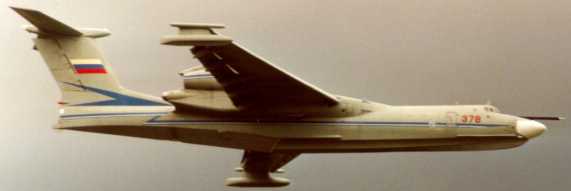
NEW! CLICK HERE TO SEE THE A-40 FOR MMA POWER POINT SHOW AND VIDEO!
www.youtube.com/watch?v=BDx-swVqG1o
Set a new course: Navy must employ Jet Seaplane Patrol Bombers to meet Multi-Mission Maritime Aircraft (MMA) requirements for the 21st Century
If the status quo perpetuates, the Navy will replace its limited P-3C land-based patrol aircraft with yet another runway-dependant patrol plane adopted from a civilian airliner. Is this a "vision" that advances the state of maritime operations?
Hardly.
The earth is 100% covered by air and on the surface 75% by water yet we don't act like it, do we? When the time comes to replace our worn-out platforms we must obtain new capabilities to better patrol the earth, and slapping in electronic gadgets doesn't count, you can do this into most anything. Clearly at the dawn of the jet age the U.S. Navy had lost its way and now at the dawn of the 21st century fallen into irrelevance. We have forgotten the words of courageous Commander Liebhauser who in a prescient article in U.S. Naval Institute Proceedings "Capital Ship for an Air Navy", (Vol. 83 September 1957 - No. 9 - Pages 961 through 969) reminded us of the tremendous potential for seaplanes in our Navy.[1] The reason is we have forgotten about the physical in favor of the mental. When we do "physical" its overly large, costly and cumbersome. Instead of physically adapting to the sea, we have worked around our weakness by giving land planes an artificial land runway on huge aircraft carriers or tried to make high endurance civilian airliners into combat planes. This is the exact same mistake the Germans made in WWII with their flimsy FW 200 Condor aircraft which never controlled the low-level air battle space over the water like we did. [2] The new Multi-Mission Maritime Aircraft (MMA) is about to repeat the mistake a second time for the post-WWII U.S. Navy by selecting yet another weak civilian airliner as a quasi-mount for military maritime patrolling.[3] How did we win the sea lanes in WWII? Not with civilian airliners.
We did it with military, combat seaplanes.
Jet SeaPlanes are the answer to 21st century MMA Requirements
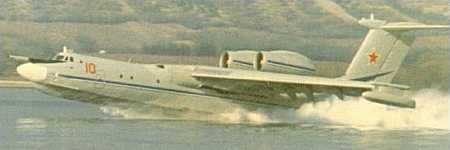
The seaplane can land on water and be refueled and re-armed by ships and not need to flee back to an aircraft carrier or land base. In our discussion here we define "seaplane" as ANY aircraft that can land on water be it floats, skis, air cushions or a boat shape hull. What I am not going to do is marginalize and disparage seaplanes with water landing hulls as "flying boats"; a clever semantical tactic of the foes of amphibious combat aircraft. Any airplane that can land on the sea is a seaplane, PERIOD. So while the Germans struggled to provide land based aircraft cover to self-protect their U-Boats which needed to surface to run their diesel engines to recharge their batteries, we were fanning out all over the oceans in search of prey with our PBY Catalina "Black Cat" and other type seaplanes. [4] The seaplane can listen for submarines while in the water and not have to spit out a limited number of expensive sonobuoys. If the Seaplane is damaged by combat action, its crew is not lost but can float in the water, be retrieved and repaired to return to duty. The seaplane rescues other pilots and seamen from sunk ships. These things do happen in war. Our Navy if its to contribute to the global war on terrorism needs self-reliant jet seaplanes to patrol the oceans and when needed land and be an impromptu patrol boat to board/inspect and yes--raid vessels smuggling terrorists and their weaponry. The Patrol Navy can no longer afford to remain stand-offish to what's going on in the water or fly overhead as the enemy knows we can't stop what they are doing on the surface.
The first and oft-heard baloney about seaplanes is that if they use boat hulls their aerodynamic performance is severely handicapped to the point that they are disqualified from further consideration as an USN patrol means. This is patently false; the P-6M SeaMaster jet patrol bomber in 1960 flew over 600 mph which is faster than today's B-52 heavy land-based bombers still in use by our Air Force.[5] The R-3Y Tradewind turboprop seaplane transport still holds the prop seaplane speed record of 403 mph--this is faster than the USAF's new C-130J Hercules with propfans which can do 400 mph.[6] The point is that at the dawn of the jet age just when we had figured out how to make seaplanes just as--if not faster than land planes--"we gave up the ghost", for I suspect purely parochial bureaucratic reasons. The faulty engines on the Tradewind aircraft were replaceable, and the design of the SeaMaster was well on the way to perfection as the Russians have operated fast jet seaplane patrol bombers for years to our everlasting shame. The real reason was/is the Navy brass were threatened by seaplanes and decided not to do them anymore. True, you don't receive flag rank commanding a seaplane, but you could if you commanded a large grouping of seaplane jets. The narcissistic "career path" is there if we want it. America does not need and can ill afford to subsidize anything but the very best and most efficient means possible for her military and its time the Navy patrol community get back into the genuine maritime patrol business which requires seaplanes.
Moot point: Seaplanes with wheels land on runways, too
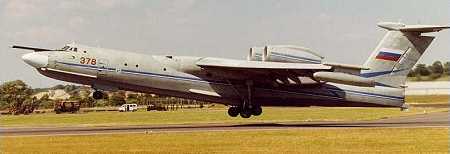
The next straw-man objection to seaplanes is the myth that they are limited to the water; open up almost any WWII naval aviation book and you will see PBY Catalina and PBM Mariner seaplanes with regular wheeled landing gear sitting on the tar mac on naval bases after landing on runways like land based planes.
The Corrosion Non-Problem
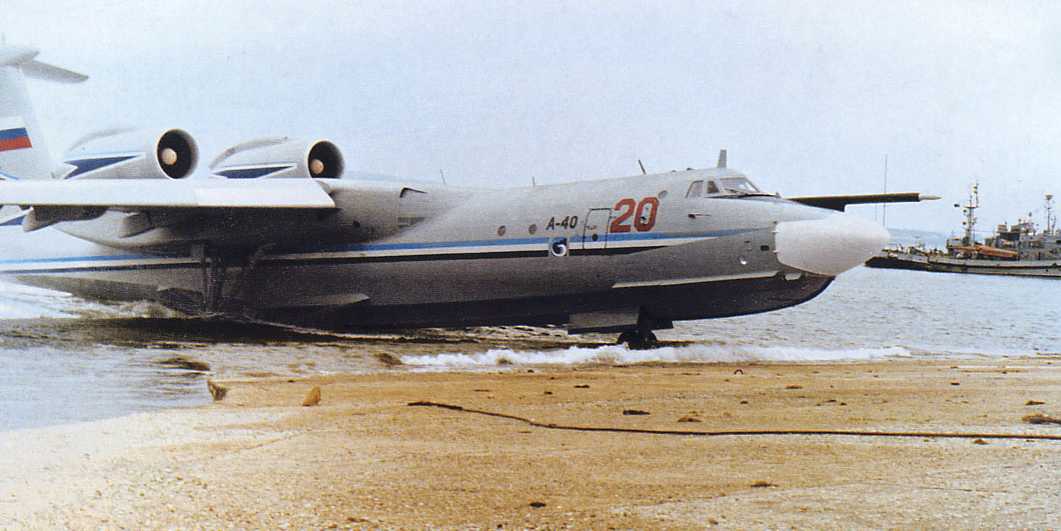
The next excuse used to dismiss seaplanes is the whine that its "too hard to maintain them in sea water from corrosion, blah, blah, blah". So what does the 5,000 Sailors do to the Nimitz victim-class aircraft carrier? They fight corrosion in a daily and labor-intensive costly basis. So we can and should do the same for 100 seaplane jet patrol bomber MMAs at far less cost than a 5,000 man Nimitz class carrier with just 48 attack planes. Have I spit on someone's sacred cow to remind us of honest reality? When we talk of MMA we need them regardless of what we do with our supercarriers, anyway. But the MMA must be a seaplane jet to render new capabilities to return our Navy and marines to relevancy and we will not forget the forest among the trees here. Corrosion on a relatively small seaplane that spends most of its time in the air is less of a problem than corrosion on a 85,000 ton super carrier that constantly sits in sea water 24/7/365.
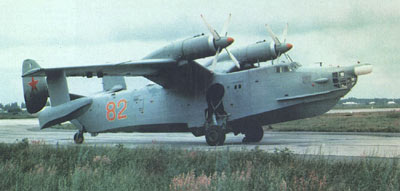
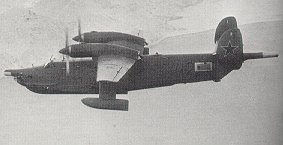
The Beriev Be-12 has been in use for over 4 decades since 1960--the year we gave up on the P-6M. When taken apart recently they found NO CORROSION inside. Berievs are well-built.
The final excuse: "we don't do seaplanes, anymore" falls
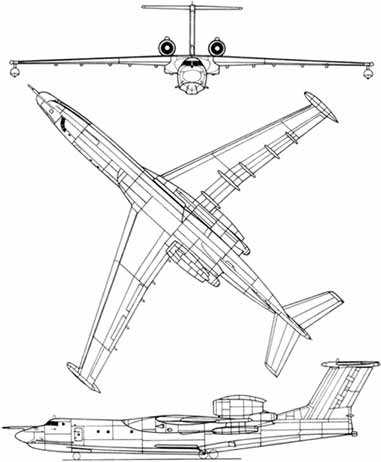
The status quo apologists final card is to admit that seaplanes are indeed superior, but in the same breath say that "none are available" so we have to use their conservative and visionless land-based aircraft means. It is true, U.S. aircraft manufacturers no longer make large seaplanes. But the Russians and several other countries still do. There is no reason why the 470 mph+ Russian Beriev A-40 jet seaplane patrol bomber couldn't be fitted with more powerful and fuel miserly U.S. turbofan engines and the same MMA electronics MENTAL packages as the Lockheed-Martin P-3 Orion 21 and Boeing warmed-over 737 airliner have, at the same time creating, new unprecedented maritime mission PHYSICAL capabilities because it can land on water. There is nothing stopping the A-40 design being built at Boeing or at a Lockheed-Martin plant, to get our "feet wet" again with advanced seaplanes. The A-40 carries more weaponry/payload, and has greater range than either the Orion 21 or 737 MMA. The A-40 is much faster than the Orion 21 and only 55 km/hour slower than the 737 MMA: not bad for a seaplane that is assumed to be aerodynamically inferior.[7]. Another thing to remember is the ENEMY (remember him?) may attack our patrol planes when they merrily go about their ASW, minelaying and patrol work with fighter jets. Do you want to be in a civilian airliner or an A-40 jet patrol bomber with AMRAAM and other missiles that can fight back?
When we are not at war: saving human lives is good PR for the Navy
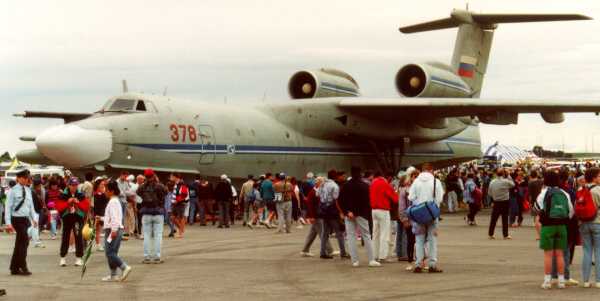
Most of the world fortunately is not directly engaged in the global war against sub-national terrorists. However, boats and ships are still in peril in the seas, and need more than a Coast Guard C-130 to fly over and drop a raft and a promise "help is on its way". No one talks about the number of people who have died who could have been saved had it been a seaplane that spotted the survivors clinging to body heat in the water and had landed immediately to get them out of harm's way.[8] We don't talk about this because we are unprofessional and self-serving to the our comfortable status quo. Real professionals don't smugly sit on their laurels and means given to them by their betters in the past, they constantly seek to do better, to find faults and correct them, they take chances, they try new things, BECAUSE THEY GIVE A DAMN ABOUT PEOPLE. The status quo is never good enough so long as one person has to die needlessly one second before they have to.
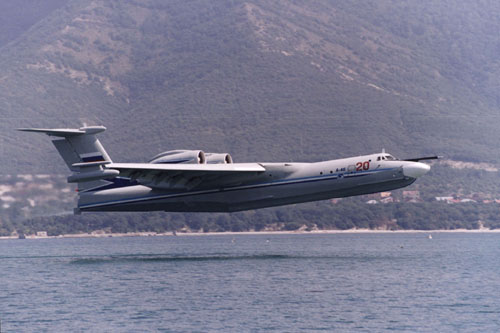
If our navy were to adopt a MMA jet seaplane we could as needed, pitch in and land on the water to save lives that are now being lost in our current land plane finds, wait-for-helicopters-and-surface-ships-to-come-later approach. MMA seaplane jets can land and refuel from surface ships and stay on station longer to cover a larger search area faster to find what we are looking for be it survivors, enemy subs, surface combatants.
Pantobase skis and hydrofoils to modify existing aircraft to land in any sea state
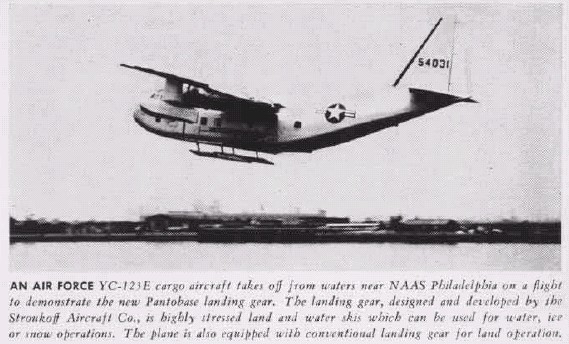
Another excuse people try to use to deny the overwhelming reality that seaplanes are necessary is that in some really rough sea conditions a boat hull seaplane may not be able to land safely. Pantobase skis should solve this, if not if there were hydrofoil skis on the seaplane less surface area would have to cut through the water to land.
The International Hydrofoil Society web page reports: Hydrofoil Articles in Popular Magazines
http://64.233.161.104/search?q=cache:ipQLBaNJJfkJ:www.foils.org/popmags.htm+seaplanes+amphibious+assaults&hl=en&ie=UTF-8
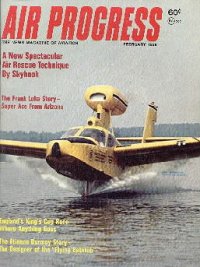
Levy, Howard, "HRV-1 Hydrofoil Amphibian," Air Progress - The News Magazine of Aviation, Condé Nast Publications, New York, Feb 1968, vol 22 no. 2, pp. cover, 38-39, 73-74. "... the hydrofoil seaplane can operate in sea states three times the size safely handled by a basic seaplane... For almost five years, David B. Thurston, President of... Thurston Aircraft Corporation of Sanford Maine has been conducting relatively unpublicized hydro-ski and hydrofoil development and flight evaluation programs for the U.S. Naval Air Systems Command (NAVAIRSYSCOM)... It was during Spring 1964 that the Naval Air Test Center at Patuxent conducted an evaluation of an Edo-developed Grunberg hydrofoil on a Grumman JRF-5G... A second generation seaplane hydrofoil configuration called for a single, small foil positioned below the hull. The resulting design was a single supercavitating, penetrating hydrofoil considered suitable for use on the Grumman HU-16 Albatross... a modified 1960 Lake LA-4A Skimmer amphibian was chosen as a scale flight test bed." Note, a summary of David B. Thurston's accomplishments is posted on the web, and includes information about his work with hydrofoil amphibians at Thurston Erlandson Corp
Clearly there are a host of technologies yet to be fully exploited to make the most of seaplanes for military service.
If the waters are still too choppy to land, the A-40 MMA jet seaplane crew drops a lifeboat with a Fulton Surface-To-Air II (STAR II) "SkyHook" kit, and possibly a combat rescue swimmer by parachute to assist. The MMA jet seaplane snags the tethered balloon and "snatches" up to 6 people, and reels them inside.
New Seaplane Jet MMA Patrol Paradigms
The jet seaplane MMA could carry a small Zodiac F470 rubber boat with outboard motor and armed special boat team(s) to board/inspect suspicious boats/ships that might house terrorists. SEALs in this manner could be the entire mission payload as the A-40 MMA seaplane flies overhead with guns/rockets/missiles providing air cover after dropping off the boarding party boat teams.
A-40 MMA jet seaplanes can carry large bomb loads to support special operations forces inland looking for hidden sub-national terror groups freeing up large aircraft carriers and reducing American presence which inflames locals. The A-40 MMA jet seaplane's bombloads are twice that of a F/A-18 Hornet and with far greater range.

When patrolling for submarines, the A-40 MMA seaplane can set down in the water and use dipping sonar instead of using up its limited supply of costly sonobuoys, providing better and farther reaching ASW capability for our Navy. When a rogue diesel-electric submarine is spotted, the A-40 MMA jet seaplane can attack/destroy it with homing torpedoes and depth charges. Everything a P-3C Orion, Orion 21 or 737 MMA can do, a jet A-40 MMA seaplane can do better.
A variant of the A-40 MMA could have its nose open like the Tradewind seaplane transport did to offload SEAL boat teams faster or even Army or marine troops in ocean-going M113A4 Amphigavin light tracked armored fighting vehicles with ARIS SPA waterjets and nose sections.[9] Who says forces can only come ashore from large, expensive and vulnerable ships packed full of men for 6 months at a time?
Synergism means over-lapping capabilities
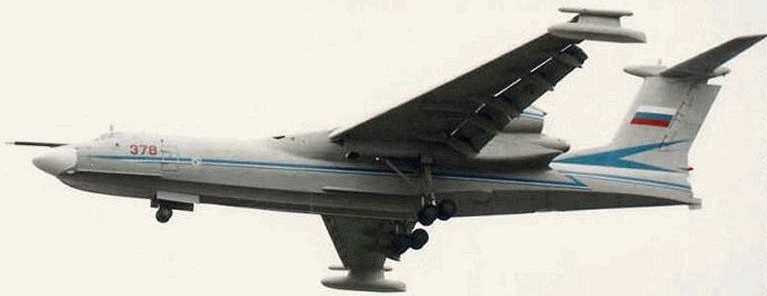
The current egocentric mentality that everyone protects their own role & mission has resulted in Navy/marine irrelevancy on the non-linear battlefield full of enemies who know to stay far inland and be intermingled with civilians and difficult, closed terrain. The Navy's P-3Cs have only gotten action over Iraq due to Army/Air Force foolishness to retire OV-1, OV-10 manned observation/attack aircraft and over-rely on non-existent and soda-straw vision limited Unmanned Air Vehicles (UAVs). Now our Orions are worn out and need replacing.[10] The marines only get action due to our small 10-division Army being exhausted by back-to-back deployments. With everyone staying-in-their-lane, gaps in coverage are readily apparent and our enemies are exploiting them. THE EARTH IS STILL A VERY LARGE PLACE. True "jointness" means sharing the glory and mission areas so there are more coverage and overlaps, anything less and the enemy will continue to get away and be able to strike homeland America with potentially a city-wiping out WMD attack. Its high time our Navy embrace jet seaplanes for the MMA and start providing new and urgently needed air/sea/land capabilities; its time to set a new course and steer away from the current course taking us towards the rocks of irrelevance and mission failure. America expects us to come through with the needed punch.
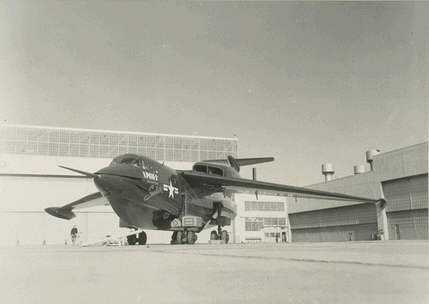
NOTES
1. "Capital Ship for an Air Navy", by Commander C. H. Liebhauser, U. S. Navy (Deceased) United States Naval Institute Proceedings www.usni.org - Vol. 83 September 1957 - No. 9 - Pages 961 through 969
www.vpnavy.com/vpnavy_seaplane_29oct2001.html
2. "Between Two Stools: Very Long-Range Aircraft in Sea Control" by Dr. Roger A. Beaumont, Air Chronicles Review, September-October 1981
www.airpower.maxwell.af.mil/airchronicles/aureview/1981/sep-oct/beaumont.htm
Why Not VLRs, Now? by Lieutenant Colonel William A. Barry, Air Chronicles Review May-June 1982
www.airpower.maxwell.af.mil/airchronicles/aureview/1982/may-jun/barry.html
3. Lockheed Martin Orion 21, Flug Revue magazine
www.flug-revue.rotor.com/FRTypen/FROri21.htm
www.flug-revue.rotor.com/FRTypen/Fotos/lockheed/Ori21ArK.JPG
Boeing 737 MMA, Flug Revue magazine
www.flug-revue.rotor.com/FRTypen/FR737MMA.htm
www.flug-revue.rotor.com/FRTypen/Fotos/boeingmi/737MMAk.JPG
4. Dave's Warbirds Web Site on the Black Cats
www.daveswarbirds.com/blackcat/contents.htm
5. Martin P-6M SeaMaster ; Stan Piet & Al Raithel, Martineer Press, 2001, new, soft cover, detailed history of Glenn Martin's last & finest flying boat, many photos, 224 pages. $34.95
www.aeroplanebooks.com/ jet_photo1.htm
"Sea Power and The B-52 Stratofortress" by Dr Donald D. Chipman and Major David Lay, Air Chronicles Review January-February 1986
www.airpower.maxwell.af.mil/airchronicles/aureview/1986/jan-feb/chipman.html
P-6M SeaMaster web page
www.combatreform.org/P6Mseamaster.htm
6. Web page on seaplane transport technology
www.combatreform.org/seaplanetransports.htm
7. Beriev Be-42 / A-40 Albatros / MERMAID data web page, Federation American Scientists
www.fas.org/man/dod-101/sys/ac/row/a-40.htm
8. The Army Air Forces in WWII Volume VII, Edited by W.F. Craven and J.L. Cate CHAPTER 15, AIR-SEA RESCUE www.ibiblio.org/hyperwar/AAF/VII/AAF-VII-15.html
9. Web page on ARIS SPA water jets kit for M113 Gavins
www.geocities.com/armysappersforward/amphigavins.htm
10. Back To Sub Hunting, P-3s will spend less time tracking land-based targets by David Brown and Glenn W. Goodman Jr. Armed Forces Journal International May 2004
www.usni.org/Proceedings/Articles00/prorowe.htm
Proceedings Magazine > 2000 > September Issue
Saving Naval Aviation
By Lieutenant Commander Steve Rowe, U.S. Naval Reserve
Proceedings, September 2000
The Navy has unbalanced the carrier air group's support and force-protection capabilities in favor of decks jammed with strike aircraft, essentially duplicating the Air Force's role. If naval aviation is to survive, it must be able to perform unique missions with forces based entirely at sea.
Ask any naval aviator or naval flight officer (NFO) why the Navy bases its tactical aviation at sea, and he will tell you that Navy air is a vital and unique national capability. He will say that only carrier-based aviation can provide powerful combat power without the need for overseas airfields, basing rights, and over-flight permissions, and regardless of the sensibilities of other nations. Navy aircrew will say that every aircraft carrier is little piece of sovereign U.S. territory from which the United States can defend its vital interests--with allies if desired; alone if required. Until very recently, the Navy pilot or NFO would have been right.
During my 12 years as a naval flight officer, I took great pride in the unique contribution of naval aviation. Navy air was the nation's enabling air arm. This unique capability arguably is no longer credible today, and will almost certainly become a paper tiger in the near future. Why? Because the leaders of naval aviation and the Navy as a whole have forgotten what the Navy is about. In the mad rush for dollars in an under-funded military, the leaders have neglected our core competencies, and grossly unbalanced support and force-protection capabilities to favor strike aircraft. The capabilities Navy air has retained are the same ones provided by Air Force tactical aircraft, and, to an extent, Army aviation and long-range artillery and missile forces. The capabilities the Navy has chosen to discard are those for which we alone are responsible. The once powerful enabling capability of naval aviation has become little more than a copy of an Air Force fighter wing. Today, like its Air Force counterpart, the carrier air wing (CVW) can no longer operate effectively without shore-based support.
The shift toward a littoral, land-attack focus was an appropriate response to the demise of the Cold War's open-ocean naval threat. In the rush to capture limited defense dollars by cashing in on power-projection funding, however, the Navy has effectively eliminated the battle group's ability to operate in a contested littoral without land-based support. This situation will become worse in the next decade, as current budget plans are followed and littoral area-denial threats continue to grow.
Consider the capabilities that today's carrier air wing struggles to bring into a littoral fight:
Antisubmarine Warfare (ASW). Littoral submarine threats are becoming stronger, and advanced automated systems are eliminating the Third World submariner's traditional weaknesses--lack of training and the need to expose a periscope to attack. The failure to respond to these trends applies to Navy aviation and to the Navy as a whole. Despite the fact that the problem is more difficult and the threat is becoming more dangerous, layered battle-group ASW capability is gone.
The S-3B Viking was the battle group's only air-ASW search platform, and it is being eliminated. In addition to a solid acoustic capability, the Viking had naval aviation's best non-acoustic sensor suite, and it was the only platform with the dash speed to investigate rapidly a contact more than a few miles away. Today, all acoustic ASW capability has been stripped from the S-3 community, and the aircraft will be decommissioned by 2008.1
In addition, the number of ASW-capable aircraft in carrier-based H-60 Seahawk squadrons has been cut in half. The special operations-configured HH-60 may be better suited for plane guard, passenger transfer, and other logistics functions, but it cannot prosecute a fleeting radar contact or flaming datum. Having an ASW-capable helo ready when needed will be a challenge in the face of other mission requirements, maintenance priorities, and flight-deck-spotting considerations.
Its aging avionics and airframe and vulnerability to littoral threats can justify retiring the S-3. But it is inexcusable that no replacement has been planned or even seriously considered. The common support aircraft (CSA), in theory the S-3's replacement, never has been more than a Power Point slide.2 Even if a new aircraft were made a priority today, it probably would not be operational in less than 10-15 years.
To make matters worse, the P-3 Orion maritime patrol (VP) community, which is supposed to assume the Navy's air-ASW mission, has been cut dramatically. The Orion is even more vulnerable than the Viking to littoral air and missile threats, and antisubmarine training and readiness have suffered because the Navy's emphasis has been on other missions. Many VP aircrews will admit freely that they have lost perishable ASW proficiency. Finally, even though the P-3 has long legs, the aircraft is slow and must be based near areas of operation to keep pace with dynamic situations.
Furthermore, the P-3 is an aging airframe that will need replacement in the near future. Despite increasing corrosion and fatigue problems that threaten the airworthiness of the Orion, the Navy simultaneously is postponing a replacement and cutting a service-life-extension program that would push the aircraft's service life to almost 40 years.3 The Navy is taking the same dead-end approach to the P-3s as it did with the S-3, despite the fact that studies have shown that building a new aircraft is the most cost-effective option.
The result of these programmatic decisions is that naval aviation will have almost no sea-based capability at a time when advanced submarine sensors, and fire-control and weapons technology will become widespread. The automation inherent in new submarine systems means that Third World submariners soon will be able to get off a good shot without extensive training or the need for a close approach. Battle-group capabilities for air-ASW search, mid- and long-range attack, and possibly the close-in reactive capability needed to exploit the typically fleeting and unexpected submarine contact, are rapidly disappearing. Meanwhile, land-based ASW aircraft will continue to be affected by diplomatic constraints and by survivability, numbers, training, and aircraft condition limitations. If land bases are not available, the situation becomes worse; if they are available, one must wonder why carrier aviation is needed.
Anti-surface Warfare (ASuW). These programmatic decisions also will degrade the battle group's ASuW capability. The S-3B also was the battle group's best organic ASuW platform and remains the only CVW asset with an imaging radar. The Viking's endurance and multi-sensor suite made it the platform of choice to locate priority surface targets and coordinate war-at-sea strikes. The same factors that limit the P-3's ability to take up the ASW mission will limit its ASuW contribution.
The carrier's strike fighters will be increasingly needed to step into surface search, war-at-sea coordination, and birddog missions. Strike fighters can locate and identify surface contacts, but they are not well suited to extended low-altitude ASUW. Appropriately, strike fighter crews focus on air-to-air and air-to-ground power projection. There simply is not enough training time or resources for small fighter crews to become experts at everything, and my at-sea experience consistently showed they are not the best choice for surface search, identification, and surveillance.
Tanking. With the A-6 Intruder long gone, naval aviation lacks a sea-based mission-tanker capability. The only organic Navy tanker aircraft, the S-3B, is well suited for the recovery tanker role, but never had the speed and high-altitude performance for mission tanking. Though sometimes pressed into the mission-tanking role--usually because Air Force tankers are not available--the S-3 must be launched well ahead of the strike group. This exposes the vulnerable aircraft to enemy defenses and potentially alerts the adversary to an impending attack. In addition, strike aircraft must make significant deviations from preferred flight profiles to rendezvous with an S-3 tanker, decreasing the potential reach of the strike package. In practical terms, the Navy is wholly dependent on land-based Air Force tankers.
Given the recent emphasis on land attack, Navy air wings have made heavy use of mission tanking. These aircraft must come from foreign bases. They require diplomatic clearance and often they need overflight rights. Therefore, they may not be available when they are needed most.
Navy air is betting the farm on the ability of the F/A-18E/F to fill both the mission- and recovery-tanker roles. The program office promises great range, endurance, and resulting fuel off-load improvements over previous versions of the Hornet. There were similar high expectations for the early Hornets, an aircraft that is notoriously fuel critical. Without an organic mission tanker, the airwing cannot fill the enabling role; without reliable recovery tanking, the air wing cannot conduct flight operations safely at all. For Navy air, the stakes are immense.
Overland Surveillance. In the era of Navy power projection ashore, one would think that organic overland surveillance and strike support would benefit from strong programmatic support. The CVW, however, is dependent on shore-based aircraft.
Kosovo clearly showed that our strike forces lack the sensor capability to attack concealed, deceptive ground forces effectively. Precision weapons are great, but they require precision targeting that we just do not have for most mobile targets. Naval aviation has been slow to procure the multi-sensor capabilities needed to support modern, high-tempo strike operations. While the Air Force is developing a family of land-based unmanned aerial vehicles (UAVs) carrying a variety of sensor packages, the Navy UAV programs languish as backwater demonstration efforts that have not been integrated into air-wing operations. A handful of P-3s have been outfitted with advanced electro-optic and other sensors, but they are not sea-based and not survivable. Like other types of land-based support, these platforms may not be with the carriers when needed.
The Navy has retired the ES-3 Shadow, its only dedicated electronic surveillance aircraft. ES-3s made significant contributions to strike operations during both air wing strike training at NAS Fallon and real contingency operations. Beyond support for individual strike missions, day-to-day electronic surveillance is a key part of building knowledge of the enemy's electronic order of battle and pattern of operations. This knowledge, in turn, is the foundation for future strike planning. Today, this capability is resident only in shore-based aircraft.
Suppression of Enemy Air Defenses (SEAD). In this area, at least, there is a very good tailhook aircraft. The EA-6B Prowler has a long and distinguished history of direct, integrated CVW strike support. Even so, the Prowler is now a national asset, not a Navy one--the community is considered to be "low density, high demand." It is generally accepted that strike aircraft will not fly opposed missions without EA-6B support, so dedicated Prowlers are an absolutely critical requirement. The nationalization of the Prowler fleet means that the Prowlers may not always be where the Navy needs them, and even if EA-6Bs remain with the air wing, very high-use rates will prematurely wear out the airframes. Though SEAD is not the critical shortfall the Navy faces in many other areas, it is an area that bears watching.
Command and Control. For the last decade, the Navy has advertised its ability to plan and execute enabling air operations from our forward-deployed, on-scene carrier battle groups. The Navy argued that it could support an enabling Joint Force Air Component Commander (JFACC) in the early phases of a crisis or conflict, and exercise command and control of air operations until the preponderance of air power shifted to the Air Force and this function shifted ashore. The Naval Warfare Publication on JFACC (NWP 3-56.1) articulated this capability, and this publication represented the Navy position in joint doctrine. Because the armed forces use joint doctrine to shape their operations, the Navy's doctrinal position on command and control of enabling air operations is a critical prerequisite for exercising this capability in the real world.
The Air Force has never accepted the Navy vision of a JFACC. Accustomed to operating out of sprawling land bases where limited shipboard space was never a problem, the Air Force argues that even a small JFACC must be a gargantuan organization. The Navy has long argued that JFACCs need not be so large or top heavy. In the Navy's view, a smaller sea-based JFACC could not only manage moderately sized air operations, it also would be more agile, responsive, and better able to deal with mobile and time critical targets.
The Navy, however, recently accepted the Air Force vision of JFACC, and conceded that it cannot plan or control significant air operations from forward-deployed carrier battle groups. According to the minutes of the Navy's JFACC Coordination Committee and the revised draft of NWP 3-56.1, a carrier can support only a "Maritime Air Tasking Order (ATO)." The maritime ATO is defined as the carrier's own normal flight operations, with perhaps that critical Air Force tanker thrown in to support Navy strike aircraft. According to these documents, a true sea-based JFACC requires a fleet command ship. Because command ships are not forward deployed with the battle groups, surging one from the United States could take weeks. Clearly, neither the maritime ATO nor a JFACC hosted on a command ship hosted is relevant for the command and control of enabling air operations.
Why Should We Buy Carriers?
The bottom line is that the naval aviation leadership's myopic dedication of strike capabilities has stripped the carrier air wing of critical support in virtually every other mission area. The recent reversal in Navy JFACC policy means that land bases will be required for command and control, even if they are not needed to support actual operational capabilities. The few bright spots are overwhelmed by the many gaps in essential capabilities.
While it true that the carrier may be able to position aircraft somewhat closer to an enemy's coastline, Air Force tanking (on which the Navy is also dependent) can ensure similar combat reach for land-based strike fighters. Even the supposed force-protection benefits of basing air power at sea are increasingly questionable, given the growth of area-denial threats and the Navy's reluctance to devote real resources to ASW, ASUW, overland sensing (to detect mobile missile launchers), or mine countermeasures. If putting the carrier air wing at sea provides no unique advantages, then why spend billions upon billions of dollars for aircraft carriers and specialized, tailhook-equipped aircraft?
The enabling air power that Navy air can provide is essential to the nation's security. I do not advocate disestablishing tactical naval aviation, but this is the path the Navy leadership has begun to follow. Navy air should do things that no one else can do--project air power without land bases.
Restoring naval aviation's enabling capability requires a dramatic and immediate change of focus--the balance in Navy core competencies must be restored. In the near term, the support aircraft capabilities that have been allowed to atrophy or vanish entirely must be restored. S-3B squadrons should be restored to eight fully mission-capable aircraft. At least some of these should be equipped with a synthetic aperture radar and the avionics to share these data with strike assets. In addition, chronically under-funded air ASW sensors should be assigned a higher priority. A carrier-based aircraft needs to be identified to fill the ES-3's electronic surveillance role. Perhaps some of these sensors could be carried by the S-3, E-2, or in UAVs.
Instead of accepting the Air Force definition of acceptable air operations command and control, the Navy should exploit information technology and incorporate distributed collaborative planning and its tradition of decentralization to the JFACC. Whether aircraft and capabilities are based at sea or ashore, we must be able to command air operations forward and without land bases to meet our enabling force commitments.
In the mid to long term, replacement airframes must be developed to replace aging support aircraft. The common support aircraft program must transition from sets of ill-defined view graphs into a real, funded, aircraft program. Naval aviation should exploit emerging UAV and sensor capabilities to field low-observable--and sea-based--land surveillance and targeting capabilities. This aircraft, or set of aircraft and/or UAVs, must correct the shortfalls in ASW, ASUW, overland surveillance, and strike support. This effort should be naval aviation's top priority, because without support, strike aircraft merely duplicate Air Force capabilities at much greater cost.
Such actions will not be cheap--taken together, they may be very expensive. Without them, however, Navy air becomes a redundant--even meaningless--force. The nation will lack the true enabling capability that it will some day need. Navy air is the foundation of Navy sea control and power projection. Therefore, the offsets required to make these changes happen should be found from across the spectrum of Navy programs. Given the long timelines for aircraft development, this work should start immediately. Only by making these changes now can we ensure that naval aviation remains a useful, relevant, and unique part of our nation's defense.
"Leaner and Meaner: The New Naval Aviation Plan," Navy Times, 6 March 2000, p. 18.
Ibid. Rear Admiral J.B. Nathman (N88) officially announced that the CSA would not be developed in a February interview. His statement merely formalized the implicit decision by lack of a decision for the last few years. back to article "Admiral: Cash Woes Preclude the Most Cost-Effective P-3 Patrol Plane." Inside the Navy, 6 March 2000, p. 14. Rear Admiral L.D. Newsome, Air Antisubmarine Warfare Program Executive Officer, recently announced that the Multi-Mission Maritime Aircraft is unaffordable, and that the sustained readiness program has been cut short.
Commander Rowe was an S-3B naval flight officer, and served with the Naval Doctrine Command Staff. He currently works as a defense contractor, developing future naval concepts.
REVELATION! SMALL SEAPLANE FIGHTERS + SUBMARINES = SUBMARINE AIRCRAFT CARRIERS: the Japanese did this first in WWII
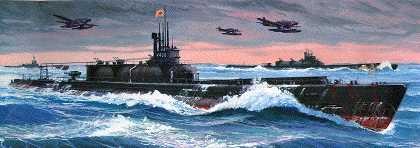
OK, they were the enemy.
But they were also part of the WWII can-do generation that actually did things not talked about it. The shocking truth is the Japanese Navy had 46 large submarines that could operate 1-3 seaplane fighter-bombers and actually launched an attack on the mainland U.S. Just as the war ended they had powerful floatplane fighter-bombers ready to attack via submarine aircraft carriers the Panama canal. For more details on how we should revive this idea go to our 3rd web page in this series on Naval transformation:
What do we do to fix this?
Relearn what a Navy is for not how to better mooch political concessions from Congress and the public. Bring back ALL of the Iowa and North Carolina class 16" gun battleships and all 8" gun cruisers. The standard is ships on the surface are ARMORED to take hits and keep fighting not live in fantasy land that they will evade hits entirely by mental electronic gadgetry trickery. Bring back small seaplanes that can spot for naval guns, hunt subs, insert SEALs, rescue men in peril in the sea, be our "killer bees". Bring back large seaplanes to heavy bomb, mine lay, hunt subs and ships 24/7/365, insert/extract SEALs, and Army troops to do land maneuvers. Bring back LTA blimps to do AEW/ASW/CSAR. Create kits to make container ships into small aircraft carriers so we can actually have 100 of them to saturate the naval battlespace with their "killer bees". Divide the Navy's sub-elements up and give them budget authority to go to Congress directly each year. Stop buying large aircraft carriers that cannot even transit the Panama Canal. Disband the selfish USMC. Do your job before we have a major fucking disaster on our hands that topples the U.S. from the world stage as a super power into a stupor used-to-be power.
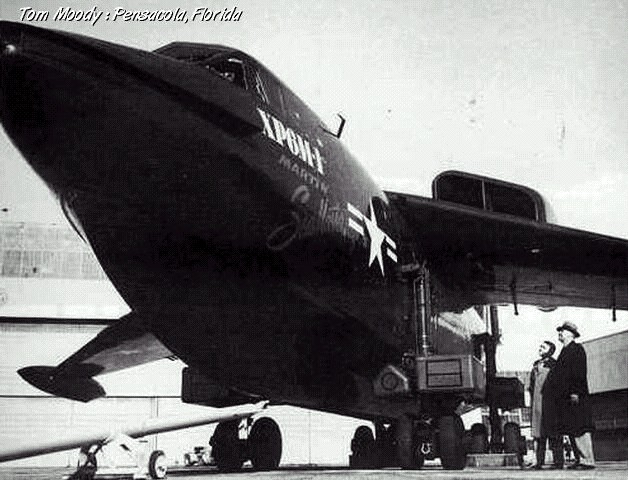
A Vietnam combat vet and current war futurist writes:
"Just read the excellent article on the Seamaster and a few points popped up.
First, the WIG effect would also work on the seaplane. The Germans used it to good effect in the 40s for long range over water flights. The distance happens to be about 1/2 the wingspan for maximum lift. This could almost double the plane's range.
Speaking of range. The Germans also experimented with refueling seaplanes from a "Milch Cow" U-Boat. OK, we can do that. Avgas was much more volatile than JP-8 or whatever the Seamaster would burn. So; take one atomic SSBM submarine and convert it to a subsurface tanker. In calm weather you could also rearm the plane. If the jet can be made to burn hydrogen and oxygen...the sub's atomic pile could run the electrolysis plant to make jet fuel out of seawater...HOO BOY.
I may have missed it, but was there mention of the Convair Sea Dart?
We could always use a sea-riding fighter-bomber to escort the SeaMaster bombers. The tech on that bugger wasn't complete, but they had an idea.
The Seadart was an unfinished concept. As I remember the belly was still round and the skis were merely parts of the fuselage. With a little more 'injuneering' it could have been a dyno-mite concept. The skis, for instance, could have been eliminated by a Seamaster style hull, allowing wheels for amphib ops to be substituted. The wings could have been given the swing-wing treatment, enabling WIG operations, and the wingtips could have been given retractable float-skis that would allow snow operations.....Now try that capability with a direct-lift fan and you have a fighter-bomber that can go anyplace there is enough room to land, and that can be fueled from any source. It IS possible, for instance, to burn vegetable fuel in a diesel, so why not a jet?
The key word on that, to type into your google browser search engine, is BIODIESEL. That ought to keep yer brain cells rattling for a while."
"Movement of troops and ordinance over the distances that the Pacific Ocean area involves, makes this not only a good idea, but the only one that might work. Gone are the days when we can muscle out way into or out of any place.
Notice the Chinese have been quiet, especially about Iraq. Might they be planning a move when we are tied down both in the war on terrorism and Itaq.
A two-war strategy does not envision that both wars would be fought in the same area of the world. Therefore, unless the entire air guard and reserve forces, including the Air Force, Naval Aviation, and Marine Aviation forces, are called up at one time, distances and a quick response will be impossible.
Yes. We have WIG and LTA that are on line. However, there are no presently operating militarized versions in large numbers worthy of consideration, but there could be.
But, there are also no bomber/fighters that can operate from dirt strips now (except the maligned Harrier and the successor the British/Marine version of the JSF).
That makes the P-6 and the F-2 fighter version such as the Convair, not only aircraft which can be separated from the carrier, but gives the Navy, and more importantly the NCA, a much broader range of options.
However just like the B-52s and the fighters from carriers, they need logistical support. In the Pacific that is easy. All of the island chains need economic help and we need gas stations. Like the infrastructure requirements to support a WIG and/or a LTA deployment, these islands can be "stepping stones" to support these seaplanes without the big investment in infrastructure needed to support a CVBG. We already have the West Coast, Hawaii, Japan, and Singapore.
I still believer the CVBG has its place. It might be an expensive way to conduct psyop, but that psyop mission is there and is a reminder to governments that might want to delve into mischief, that we can be there in a few days. The seaplane theory that you brought up gives the fleet a new capability.
Like the B-52, the P-6 and F-2 can deliver their loads over long distances. Unlike the B-52, the entire ocean is their landing strip. While the fleet steams west, the bombers with seaplane fighter escort, can make their bomb runs and rendevous with fleet elements, wherever they are.
Of course, then the Air Force would want another 'Key West' agreement with the Navy.
Very good and insightful article!"
"First a confession -I love seaplanes, so am quite biased. One of the selling points of the P6 strategic bomber force was that all a squadron needed was a couple of tenders and TANKER SUBMAIRNEs.
Where did these go?
They were once considered for commercial use and were cheaper than pipeline or surface ships. BTW-a tanker Seamaster could supply surface ships like the pocket corvette.
I don't think floats on a C-130 are practical -I would like to see air cushion landing gear-with this you could land on paddyfields and mudflats -the 160th SOAR should have these as standard.
Many seaplanes have excelled their land counterparts -in WW1 Italy's best fighter was a seaplane.
Is the modern U.S. navy really a war-fighting organization? I thought it was a police and diplomatic force?
On my ATT Gunship web page I suggest something like the XC-120 could have a seaplane pod, and there is a nice link there about the p20 that solved a lot of the aerodynamic problems. Any seaplane bomber needs the capability to have its bomb-bay refilled from above.
The idea of the seaplane JSF variant makes a lot of sense. WRT carriers, obvious answer is something smaller like the Kiev(?), which is half battleship and half VTOL/helicopter carrier.
Saw an interesting program on Harriers-SOP for RAF seems to be to drop flares as they make an attack pass. There are also IR lasers that can blind heat-seekers. I don't think the UK has lost a single Harrier to a heat seeker (I could be wrong)-maybe the USMC are forgetting something basic, like flying low or flares?
btw -British Harriers are now organized into a dual-service strike force capable of global deployment and all pilots trained for carrier operations."
NOTES
General Case for Modern SeaPlanes
"Capital Ship for an Air Navy", by Commander C. H. Liebhauser, U. S. Navy (Deceased) www.vpnavy.com/vpnavy_seaplane_29oct2001.html
P-6M SeaMaster Details
Definitive P-6M SeaMaster reference!
Martin P-6M SeaMaster ; Stan Piet & Al Raithel, Martineer Press, 2001, new, soft cover, detailed history of Glenn Martin's last & finest flying boat, many photos, 224 pages. $34.95
Aeroplane Books
P-6M SeaMaster web sites (all worth going to!)
Images
http://images.google.com/images?q=P-6M+seamaster&btnG=Google+Search&hl=en&safe=off&output=search
History
www.vpnavy.com/aircraft_P-6M_history.html
www.vectorsite.net/avcmast.html
114 Deer Path Road
Williamsburg, Va., 23188-2208
(800) 447-8890 - Order Line
(757) 565-4814 - Questions
(757) 253-1089 - 24 hour FAX line
Tuesday thru Saturday 9 to 5 (East Coast Time)
Last Dingo's P-6M SeaMaster page
Off-Loading from Seaplanes
One way to off-load supplies and vehicles is having the seaplane beach its nose and have it flip open like the Vultee "Flying LST" aircraft depicted here:
www.vpnavy.com/misc_02/seplane_history_03_29oct2001.jpg
Caption reads: Courtesy Consolidated Vultee Aircraft Corporation. R3Y-2 Tradewind - The "Flying LST." A cutaway sketch shows the load possibilities of the transport version of this flying boat. Over 100 rearward-facing passenger seats can be installed or 92 litters for hospital plane use.
Or the Russian "Oryonek" WIG aircraft which has a nose opening capability
Russian Jet SeaPlanes
Beriev Home Page
www.beriev.com/aircraft/a-40/a-40.html
www.fas.org/man/dod-101/sys/ac/row/a-40.htm
BUILDING A SCALE MODEL OF THE P-6M SEAMASTER
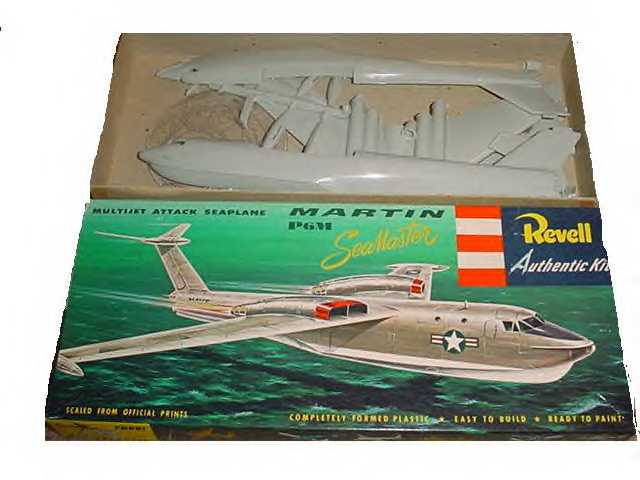
What would a SeaMaster look like in today's military colors?
If you are building the Revell SeaMaster model, flip the aircraft upside down and look at its nose: what does this look like?
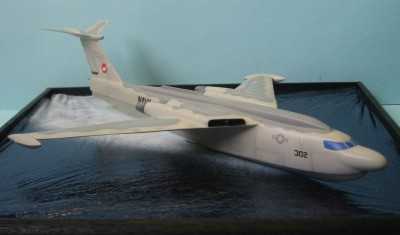
No wonder why the SeaMaster design is so brilliant! The Martin designers took inspiration from God's creation in nature...very smart move!

BARKSDALE AIR FORCE BASE, La. Throughout the history of military aviation, the B-52 has no peer. For half a century, the massive jet, with its eight gigantic engines and 185-foot wingspan, has been a symbol of American might - and the only bomber to lend its name to a rock band.
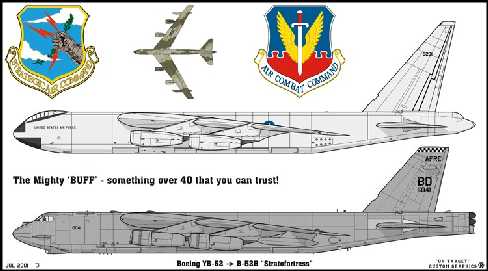
This month, the B-52, which made its maiden flight when Harry Truman was president, celebrates its 50th birthday. That heady milestone is only a marker for middle age, however. The bomber, whose lifetime spans 11 presidents, four wars and nearly every technological leap of the jet age, is still a vital part of the Air Force fleet.
It is scheduled to fly until 2040. That would make it the longest-serving military jet in history.
"It is quite a remarkable aircraft," observes Wayne Thompson, an Air Force historian in Washington, D.C. "The interesting thing is, everything it does today, it was never designed to do."
Though the youngest B-52 in today's Air Force fleet is 41 years old, the giant bomber is anything but a Cold War relic. It proved its mettle once again in Afghanistan by helping rout Taliban forces last fall. Lurking high in the sky like airborne artillery guns, B-52s hunted their prey by dropping smart bombs from 40,000 feet.
Linked to special operations Soldiers on the ground by laptop computers and satellite relays, B-52 crews flew higher than commercial passenger jets to drop their payloads satellite-guided bombs aimed at Taliban and al-Qaeda troops who could neither hear nor see the origin of their destruction.
"The B-52 is the Air Force's answer to the Navy aircraft carrier in terms of fear and morale," says Chris Bolkcom, an aviation analyst with the Congressional Research Service. [Editor, Bolkcom is full of shit. The B-52 engenders fear in the enemy like the Navy's BATTLESHIPS not aircraft carriers] "Nobody wants 70,000 pounds of ordnance dropped on them, and just the threat of B-52s flying overhead is enough to make our adversaries run."
The B-52 is to bombers what Strom Thurmond, R-S.C., is to U.S. senators. By the time the current B-52H models are retired, they will have served nearly 80 years. No other bomber or fighter has seen so much history pass beneath its wings, or so much technology zoom past its tail.
Ugly, fat and ageless
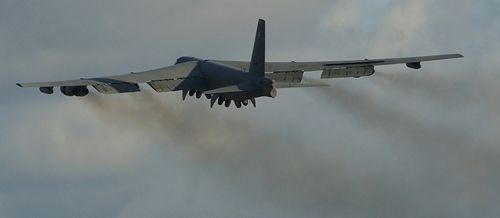
Known to Air Force crews as the BUFF (Big Ugly Fat Fellow), it was for nearly four decades an essential part of the United States' deterrent against the Soviet Union. The brainchild of legendary Air Force Gen. Curtis LeMay, the B-52 was dreamed up by Boeing engineers in a Dayton, Ohio, hotel room in October 1948.
The first B-52 lifted off April 15, 1952, for a test flight. Since that time, the lumbering bomber played a major role in Vietnam, the Gulf War, Kosovo and Afghanistan.
The B-52 owes its longevity to slide-rule-generation engineers who conceived the design after World War II. Built before the advent of computer models, the B-52's many structural redundancies from landing gear to wing design keep it airworthy today.
The B-52 is challenging for pilots to fly, short on space and modern comforts but nonetheless beloved by many who have climbed through its cramped entryway in the bottom of the fuselage.
Air Force Lt. Gen. Tom Keck, who commands the 8th Air Force, has spent 3,000 hours flying the giant bomber. His dad, retired lieutenant general James Keck, also flew B-52s. The younger Keck surmises that by the time the B-52 is retired, it will have been theoretically possible for four or five generations from the same family to fly it.
Although the Air Force built more than 700 B-52s, only about 90 survive. Boeing long ago shut down the production line, leaving crews to scrounge spare parts in the strangest places, including aviation museums and the Air Force's "Bone Yard," a repository for aging aircraft in the Arizona desert. Mechanics have literally scavenged repair parts by tearing up old B-52s with chain saws to keep the current fleet flying.
A renaissance
B-52 officers "Wall Street," "Doogie" and "Splash," assigned to a Reserve squadron at Barksdale Air Force Base, joined the military in the 1980s when the United States still kept the bombers on nuclear alert. (During the war on terrorism, the Air Force permits B-52 crewmembers to be identified only by their first names or military nicknames.)
The three Barksdale crewmembers marvel at how the bomber morphed from Cold War sledgehammer to its current role using smart bombs for surgical strikes. All three say they feared for the B-52's survival in the 1990s, when many officers thought it would be phased out in favor of newer B-1s and B-2 stealth bombers. Now, they say, the B-52 has proved indispensable because it is so reliable and can carry a huge store of smart bombs.
"When they gave us the coordinates, we'd kill whatever they told us to," says "Wall Street," a B-52 pilot who flew 19 missions over Afghanistan. In Afghanistan, the Air Force used B-52s to perform roles usually reserved for smaller, sleeker and faster fighter jets. The success of B-52s in a troop-killing role that the military calls "close air support" turned conventional wisdom on its head. For one, it suggested the Pentagon can modernize without spending billions on sexy new hardware. The aircraft's rebirth also rekindled a debate over the role of the nation's bomber fleet, which some say is too small. Instead of flying dozens of fighter jets capable of dropping only one or two bombs each, the Pentagon dispatched a handful of B-52s or B-1 bombers in Afghanistan to visit destruction equal to an entire squadron of smaller aircraft.
The practice of dropping large numbers of satellite-guided smart bombs from high altitude, which one senior Air Force general has dubbed "mass precision bombing," is certain to play a role in future U.S. attacks.
The effectiveness of the large bombers also has implications for U.S. basing as the Pentagon ponders options against Iraq. Because the bombers can fly thousands of miles farther than fighter jets without refueling, the United States could be able to attack Iraq even if Arab allies don't allow the use of their bases.
The United States has dropped about 12,000 guided bombs in Afghanistan. Satellite-directed weapons are viewed by military planners as the new weapon of choice. By using B-52, B-1 and B-2 bombers with clusters of satellite-guided bombs, the United States will put far fewer pilots at risk while greatly increasing the pace of attacks.
"The bomber re-emerged in this war," says Tom McInerney, a retired Air Force lieutenant general and Fox News military analyst. "People in the Pentagon don't fully appreciate what we did and how we used firepower in Afghanistan." Army Soldiers at Bagram air base near Kabul credited air cover provided by fighters and B-52 bombers for helping rout dug-in al-Qaeda forces during Operation Anaconda in March.
On at least two occasions, Air Force B-52s cruising high over Afghanistan prevented the defeat of Northern Alliance and U.S. Special Forces troops under siege. On Nov. 2, an Air Force Reserve B-52 from Barksdale came to the rescue of about 10 Special Forces soldiers under attack from an estimated 1,000 Taliban fighters near Kandahar. Twenty minutes after receiving the distress call, the B-52 was guided to the target by Army ground controllers and destroyed a ridge line full of Taliban forces.
The B-52s carry a mother lode of weaponry, including 16 satellite-guided smart bombs under their wings and 27 unguided "dumb" bombs in their bellies. Air Force B-52s loitered for three to four hours at a time over Afghanistan, where Soldiers directed them to enemy soldiers during the heat of battle using laser range finders and hand-held navigation aids linked to satellites. The tactics, never before used in war, allowed the United States to destroy the same number of targets as during the Gulf War by flying a tenth the missions.
A workhorse
B-52 crewmembers describe their airplane as a '57 Chevy in a world of late-model sports cars. The cabin and cockpit are more cramped than a backyard tree house and have about the same amenities. There are no bathrooms; instead, the five crewmembers urinate into a tube with little privacy. Inside the crew cabin, the jet is noisier than its namesake rock band, the B-52s. The 120 decibels generated by its engines are, according to crewmembers, louder than a typical rock concert.
The cockpit is crammed with buttons, dials and Vietnam War-era gauges and wires. Until about a decade ago, the B-52 crew included a tail gunner, a holdover from the days when U.S. bombers filled the skies over Europe during World War II.
Just behind the cockpit, there's another telling sign of the B-52's age: an opening in the top of the fuselage to navigate by sextant. There was little glamour inside or outside the B-52 during its heyday in the Cold War.
Bomber crews would rotate on alert status for a week at a time, confined to Spartan barracks known as "mole holes" from which they would race to their aircraft to get airborne before incoming Soviet missiles struck. The B-52 played a major role in the 1962 Cuban Missile Crisis as a nuclear bomber, and later, in Vietnam, proved to be a symbol of American futility despite an extensive and at times devastating bombing campaign in North Vietnam. During its days carpet-bombing North Vietnam, B-52s turned triple-canopy jungle into moonscape, gouging giant craters into the earth during more than 100,000 bombing missions there.
The B-52 is the monster truck of airplanes. It is the only military jet still flying that has eight engines. The aircraft is so sturdy, 8th Air Force commander Keck says, that even if it lost half its engines to enemy fire it could still land safely.
"You could probably land with three," Keck says, adding, "it's just a large, reliable airplane."
For all its archaic hardware, the BUFF remains the backbone of a bomber force that includes 21 stealthy B-2s and 93 B-1s.
"People have a soft spot in their hearts for the B-52," says Air Force Gen. Donald Cook, a former B-52 pilot who now heads Air Force training. "It's not sexy, but the aircraft always does a good job."
Sea Power and The B-52 Stratofortress
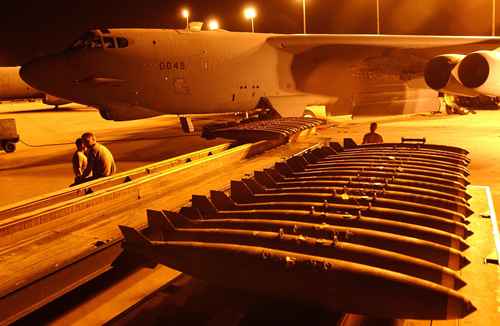
Dr Donald D. Chipman
Major David Lay
THE mission of the U.S. Navy is to fight at sea and protect our maritime security. Today, as the Soviet naval threat increases, this responsibility is becoming very complex and demanding. If a European war erupts, the U.S. Navy would defend the northern flank by blocking the Soviet Navy in the Norwegian Sea. In addition, they would have to protect the various Atlantic sea lines of communication (SLOCs). Naval Forces journal recently estimated the complexity of just is mission:
In a conflict of even moderate size, it would be necessary to reinforce the Allied Armies by some one half million men, provide some four and a half million tons of ammunition, four million tons of equipment and a hundred million barrels of oil.[1]
A maritime strategy that requires the Navy to defend the SLOCs while at the same time prosecuting a North Atlantic battle would necessarily require joint operations, including U.S. Air Force assets. Consequently, in 1982, after considering these contingencies, United States Chief of Naval Operations, Admiral James D. Watkins, and USAF Chief of Staff, General Charles A. Gabriel, signed a memorandum of agreement for joint maritime operations.[2] Commenting on this, General Gabriel noted: "As the Falklands conflict demonstrated, air power is a critically important part of successful maritime operations. We will be putting more emphasis on such collateral roles as sea-lane protection, aerial mine-laying and ship attack."[3]
In 1984, the Air Force changed its maritime role from a collateral responsibility to a major mission. According to basic U.S. Air Force doctrine, the aerospace maritime mission is to neutralize or destroy enemy naval forces and to protect friendly naval forces and shipping. Aerospace maritime operations may consist of counter air operations, aerial minelaying, reconnaissance and interdiction of enemy naval surface and subsurface forces, port facilities and shipping.[4]
To accomplish these tasks, the U.S. Air Force has modified the B-52G model to carry the Harpoon missile and has stationed one squadron of twelve planes at Andersen AFB on Guam and another squadron at Loring AFB, Maine.[5] The radar-guided Harpoon missile is thirteen feet long and weighs approximately 1145pounds with a penetrating high-explosive warhead. The B-52 carries twelve missiles and can launch them about fifty miles from the target.[6] In addition, four E-3A AWACS airborne warning and control aircraft will be modified to support the B-52Gs in this maritime role.7 The speed, range, and flexibility of the B-52 working with the E-3A in a joint operation with the U.S. Navy should provide tremendous offensive fire power in any maritime battle.
Carrier Battle Group and the B-52
The U.S. Navy's carrier battle group (CVBG) is a formidable striking force, yet the B-52 could enhance the CVBG's capabilities. If assigned to the perimeter defense, B-52s would allow the fleet to concentrate its force to an offensive strategy. Under tactical control of the E-2C Hawkeye, the B-52 could strike the enemy on the CVBG's flanks, leaving the fleet to attack the enemy's principal force.
Once the CVBG's perimeter defense is secured, the B-52 and the E-3A could coordinate attacks on hostile ships at long distances from the carrier. According to one expert, by linking the E-3A AWACS and the E-2C Hawkeye, the battle group could extend its area of operation up to 600 miles.[8] Since Soviet Navy Backfires carry air-to-surface missiles with a range of approximately 200 miles and Soviet surface combatants are equipped with surface-to-surface missiles with ranges of approximately 250 miles, this extended CVBG offensive operation area is a vital tactical requirements.[9]
According to Soviet naval doctrine, when confronted with air attacks, Soviet battle groups will disperse.10 In this scenario, linked by E-2C and working with carrier aircraft, the long-range B-52 could attack the dispersed enemy fleet. In such a strike, the B-52 would maneuver to the far side of the enemy to destroy their surface combatants. Simultaneous weapons arriving on target within moments of one another and coming from all directions would complicate the enemy's defensive posture.
In certain maritime arenas, the B-52 would work exclusively with the E-3A, allowing the E-2C and the CVBG more flexibility. The E-3A would direct strikes against distant enemy forces, while the E-2C would remain nearer the carrier for defensive purposes. The E-3A could provide distant early warning of approaching enemy forces to the E-2C, which, in turn, would coordinate the defensive tactics.
As the E-3A located distant enemy forces, it would vector both the carrier aircraft and the B-52s into the target range. With an Air Force KC-10 tanker tasked to provide fuel, this air armada could remain aloft for long periods. If Harpoon-equipped B-52s were joined by B-52s carrying mines, the force's versatility would increase considerably. Mine-capable B-52s could establish mine fields in significant enemy approaches, such as harbors and chokepoints. Minefields would force the enemy fleet to disperse, making individual ships more vulnerable to Harpoon attack.
Recently, the Soviets have practiced their own version of aerial ship strikes. In 1982, according to the Washington Post, eight Backfires staged two practice attacks against the U.S. carriers Enterprise and Midway in the North Pacific. Although the Backfires did not come within 120 miles of the American fleet, they were well within the range of its air-to-surface missiles.[11] Without U.S. Air Force B-52s, the U.S. Navy must rely on its slow P-3s to simulate this type of ship strike.
If the CVBG were escorting amphibious ships to secure an island or make a landing, the B-52 would complement this mission. The B52 could provide a secure barrier in one part of the Navy's and marine corp's amphibious operations area. The mine-laying B-52s and the Harpoon-armed B-52s, coordinated by an E-3A, would work together to seal off any enemy surface threat in one of the sectors. With reduced assets assigned to sector defense, the Navy could then concentrate on the amphibious landings. If this area of operations is near a friendly air base, F-15s could fly combat air patrol with the E-3As providing the defensive counter-air.
Thus CVBG joint operations with the Harpoon-armed and mine-capable B-52s, supported by an E-3A and a KC-10, could provide an additional warfare dimension for naval operations. This USAF air armada would defend a maritime sector, strike distant naval threats, provide over-the-horizon reconnaissance, and protect the CVBG. With this Air Force augmentation, the carrier battle group would be more flexible and thus better able to prosecute the main battle objective. As the Soviets have demonstrated with their Backfires, Badgers, and Bears in support of their navy, this mission is no longer an option but is a necessity.
Surface Action Groups and the B-52
Composed primarily of a U.S. battleship and other surface combatants, surface action groups (SAGs) lack organic air power. The Air Force could partially remedy this liability. If the SAGs journeyed near air bases such as in Iceland, fighters, B-52s, E-3As, and KC-10s could provide continuous air support. These planes would rendezvous with the SAG and position themselves in the direction of the suspected threat, providing both defensive and offensive capabilities. An E-3A could fly a patrol barrier while fighters circled above it in a combat patrol pattern. If enemy surface patrols were sighted, the E-3A could vector the Harpoon-armed B-52 toward the threat. To increase the loitering time, KC-10s would provide fuel.
This maritime aerospace armada would provide the SAG with both over-the-horizon location of enemy activities and a communication relay between various U.S. naval ships. Once an engagement began, the B-52 would attack the enemy with its Harpoons. When the Soviets deployed surface combatants into the Norwegian Sea, their Badgers, Bears, and Backfires would provide fleet air coverage.12 In a similar manner, B-52s and other USAF aircraft could be used to defend the U.S. Navy's SAGs.
Sea Lines of Communication and the B-52
With its inherent advantages in speed, range, and flexibility, the B-52 could operate independently in support of other primary sea power objectives. Capable of traversing vast distances rapidly, the B-52 could be tasked to accomplish a variety of significant maritime missions where time and distance to the operating area are critical factors. In time of pending war, patrolling the various chokepoints surrounding the Russian littoral would require quick reaction and sustainability. B-52s tanked by KC-10s could respond immediately.
In chokepoint defense, a patrolling B-52 could hinder the Soviet Navy's attempts to sail out of the inland seas into the blue waters of the oceans. Such a chokepoint as the Pacific's Kuril Islands is critical to the Soviet Pacific Fleet operations. In March 1985, a Soviet carrier battle group, composed of the Novorossiysk, four cruisers, three destroyers, and two replenishment ships, conducted a major exercise in the Pacific. This Soviet carrier group sailed south through the straits of Tsushima into the Pacific and then back to home port through the Kuril Islands, entering and departing the Pacific through critical chokepoints.[13] In 1905, the Japanese destroyed nearly the entire Russian Baltic Fleet in the Tsushima Strait during the Russo-Japanese War. 14 B-52s, armed with mines and Harpoons, could respond quickly to any U.S. Navy requirement for blocking the Soviet Navy at Tsushima or the Kurils. Mining the Kuril Island chain would force the Soviets to reconsider their strategy and keep them away from critical Pacific SLOCs. In the Atlantic, B-52s could patrol chokepoints such as the Greenland-Iceland-United Kingdom (GIUK) Gap and Baltic entrances.
Defending the sea lines of communication is another appropriate maritime mission for B-52s. In a European conflict, hundreds of thousands of tons of supplies would be shipped through the Atlantic SLOCS. This logistical mission would require large convoys and, in the early battle stages, a massive airlift. As these convoys and USAF aircraft transited the Atlantic, enemy surface ships armed with surface-to-surface missiles and surface-to-air missiles would attack. Assigning U.S. Navy combatants to protect these SLOCs would be costly in terms of time and assets. Overall, assigning Navy ships to this defensive mission would detract from the North Atlantic forward offensive strategy. Instead, B-52s could engage enemy ships threatening these convoys, allowing naval units to concentrate on attacking the enemy's main battle fleet. The B-52 would patrol threatened segments of the sea lanes to ensure passage of the convoy and airlift. On such a patrol, the B-52 would communicate with the convoy commander and the various escort ships, assuming a role similar to the World War II escort carrier that provided protection for convoys crossing the mid-Atlantic Gap.[15]
In addition, the B-52s could attack Soviet merchant ships. The Soviet merchant fleet comprises more than 1700 ships. These vessels are often found sailing on the distant oceans, carrying supplies to Soviet allies. Many of these merchant ships can convert to serve as Soviet Navy supply and replenishment ships.16 With these vessels scattered throughout the world's oceans, finding and destroying them would divert a tremendous number of U.S. naval assets. For years, B-52 crews have conducted reconnaissance flights identifying various Soviet merchant ships in an Air Force reconnaissance mission called Busy Observer.[17] This experience would be valuable when B-52s seek out and attack Soviet merchant ships.
North Atlantic Scenario and the B-52
In a major European war, the following assumptions concerning the battle of the North Atlantic are likely. As the aggressor, Soviet forces would have the advantage of early mobilization and surprise. The Soviet strategy would include securing the north maritime flank as Soviet southern forces fight across the European plain. The Soviets would move into the North Atlantic by taking parts of Norway and sending their navy into the Norwegian Sea. After securing Norwegian airfields, they would deploy their land-based naval aviation units to these areas and rapidly advance their Northern Fleet into the North Atlantic. These combatants would attempt to prevent Western forces from reinforcing Norway. As the Soviet naval presence increased, the area under their control would extend farther into the North Atlantic to threaten vital Western bases in Scotland,' northern England, and Iceland, as well as the North Atlantic SLOCS.
As the Soviets attempted to secure the North Atlantic and the Norwegian Sea theater, U.S. naval forces would deploy into a striking position.18 However, as the U.S. fleet sailed north to confront the enemy's main force, a second Soviet naval threat could appear from the south. The Soviet Union's surface combatants in the Indian Ocean and South Atlantic would sail north, placing the U.S. Navy between opposing enemy forces.[19]
In this scenario, an air armada of B-52s could assist the U.S. Navy in establishing maritime superiority. Approximately ten B-52s carrying 120 Harpoons could fly south to meet the South Atlantic and Indian Ocean Soviet squadrons. These aircraft would be refueled by KC-10s and vectored by E-3As. As this air armada converged on the Soviet ships, it would disperse in order to launch missiles from several directions. A complete saturation of the enemy with more than 100 Harpoon missiles should suffice.
OVERALL, the B-52, along with the support planes of E-3A and KC-10s, could assist the U.S. Navy in future engagements with a variety of missions, including ship strike, minelaying, reconnaissance, intelligence, and communication links. The acceptance of this new Air Force mission by the U.S. Navy has the blessing of the Secretary of the Navy John F. Lehman. Lehman, a Naval Air Reservist and an advocate of sea power, stated in October 1982 that he welcomed the Air Force to the wartime mission of destroying the Soviet fleet and keeping allied sea lines of communication open.[20]
While joint Navy and Air Force maritime operations are still in the formative stages, the Soviets are very concerned. Recently, a concerned Soviet Navy captain commented on the future of this program:
U.S. Air Force specialists do not exclude the possibility of employing not only the B-52 bombers, but also the FB-111, SR-71, and B-1 aircraft as well as U.S. Tactical Air Command aircraft in a war at sea. The same specialists a also are discussing the joint use of B-52 bombers as a platform for antiship weapon systems and E-3A AWACS long-range radar surveillance and control aircraft, which surpasses the B-52 by at least fivefold in the capability of detecting targets.[21]
The successful war at sea will require new tactics and new considerations. The B-52, a sea-power ship strike weapon system, is just the beginning.
Maxwell AFB, Alabama and Virginia Beach, Virginia
Notes
1. "The Air Situation in the North Atlantic," Naval Forces, vol. V (1984), p. 60.
2. Department of the Navy and Department of the Air Force, Memorandum of Agreement on Joint USN/USAF Efforts for Enhancement of Joint Cooperation (Washington: Government Printing Office, 1982).
3. F. Clifton Berry, Jr., "A Carrier Aviation Primer," Air Force, November 1982, p. 61.
4. Department of the Air Force, Air Force Manual 1-1, Basic Aerospace Doctrine of the United States Air Force (Washington: Government Printing Office, 16 March 1984).
5. "B-52s at Andersen to Carry Harpoons," Air Force Times, 20 May 1985, p. 31.
6. Susan H. H. Young and John W. R. Taylor, "Gallery of USAF Weapons," Air Force, May 1985, pp. 149-66.
7. "B-52s at Andersen to Carry Harpoons," p. 31.
8. George C. Wilson, "Pentagon Maps New Navy-Air Force Cooperation in Sea Warfare," Washingion Post, 7 October 1985, p. 21.
9. Norman Polmar, Guide to the Soviet Navy, 3rd edition (Annapolis, Maryland: Naval Institute Press, 1983), pp. 356-67.
10. Robert Waters, "Navy, Air Force to Share in Defense of Vital Sea Lanes," Hartford Courant, 25 September 1982, p. 1.
11. "New Soviet Bombers Fake Strike against U.S. Navy," Washington Post, 9 November 1982, p. 16.
12. Peter Almond "Maneuvers by Soviets, A Surprise to NATO," Washington Times, 5 April 1984, p. 6.
13. Richard Gross, "Soviet Naval Forces Simulate US Aircraft Carrier Attack," Jane's Defense Weekly, 27 April 1985, p. 701.
14. S. G. Gorshkov, The Sea Power of the State (Annapolis, Maryland: U.S. Naval Institute Press, 1979), p. 91.
15. E. B. Potter and Chester W. Nimitz, editors, Sea Power: A Naval History (Englewood Cliffs, New Jersey: Prentice-Hall, 1960), p. 91.
16. National Strength Information Center, The Challenge of Soviet Shipping (New York: National Strategy Information Center, 1983), pp. 1-45.
17. Defense Marketing Services, Code Name Directory, 13th edition (Greenwich, Connecticut: DMS Publishers, 1984), p. 135.
18. This scenario is described in LCDR R.E Arnold Shrubb, RN, "NATO North to Norway," Surface Warfare magazine, May/June 1984, pp. 12-14, and John Berg, "Soviet Front-Level Threat to Northern Norway," Jane's Defense Weekly, 2 February 1985, pp. 178-79.
19. According to U.S. Department of Defense, Soviet Military Power, 1985 (Washington: Government Printing Office, 1985), pp. 116-17, the Soviets maintain approximately six naval vessels in the South Atlantic and twenty-three in the Indian Ocean.
20. George Wilson, "Pentagon Maps New Navy-Air Force Cooperation in Sea Warfare," Washington Post, 7 October 1982, p. 21.
21. Captain N. Kabalin, "Over the Ocean-Strategic Bombers," Selected Translations from Morskoy Sbornik, March 1981, pp. 79-83.
--------------------------------------------------------------------------------
Contributor
Donald D. Chipman (B.A., California State University; Ph.D., Florida State University) is the Educational Advisor to the Commandant, Squadron Officer School, Maxwell AFB, Alabama, and a commander in the U.S. Naval Reserve. He has served on the faculty at Georgia Southwestern College, Americus, and was a U.S. Navy flight officer and navigator for the EC-121 Typhoon Reconnaissance Squadron in Agana, Guam. Dr. Chipman is co-author of two books on philosophical issues in education has written several articles published in academic journals, including the Review. He is a graduate of Squadron Officer School.
Major David Lay (B.A., College of St. Thomas; M.S., University of Southern California) in a USAF Liaison Officer to COMSTRIK-FLTLANT. Previously, he has served as Chief, Maritime Branch, Office of Current Opertions, HQ SAC, Offutt AFB, Nebraska. Major Lay in a graduate of Air Command and Staff College.
Disclaimer
The conclusions and opinions expressed in this document are those of the author cultivated in the freedom of expression, academic environment of Air University. They do not reflect the official position of the U.S. Government, Department of Defense, the United States Air Force or the Air University.
-----------------------------------------------------------------------
Air & Space Power Chronicles Home Page | Feedback? Email to aspj@maxwell.af.mil
www.usni.org/Proceedings/Articles03/progoldstein03.htm
China's Subs Lead the Way
By Dr. Lyle Goldstein and Lieutenant Commander Bill Murray, U.S. Navy
Proceedings, March 2003
China's maritime strategy relies heavily on submarines to patrol the littorals, blockade the Taiwan Strait, and stalk aircraft carriers. The U.S. Navy should not underestimate China's ability to build a capable submarine force to challenge a superior maritime foe.
While the U.S. military remains focused on the Middle East and Central Asia, China continues its rapid military modernization. Perhaps the most significant development for the U.S. Navy is China's extensive efforts to upgrade its submarine force. In addition to signing a contract with Russia for eight new Kilo-class diesel submarines last May, China continues to field its new indigenous Song class. The appearance of its new nuclear attack submarine (SSN) is imminent. Finally, Beijing is upgrading the submarine force's weaponry, recruitment, training, and doctrine-all of which suggest that submarines will form the backbone of China's gradual strategic reorientation toward maritime priorities. As one Chinese strategist recently wrote: "Submarines are the maritime weapons posing the greatest threat to an aircraft carrier formation. Submarines are also our Navy's core force." [1] Retired Navy Rear Admiral Michael McDevitt, a close observer of the Chinese Navy, similarly contends that submarines "are an essential ingredient in the ... maritime strategy of China," and calls for focused research on China's submarine force. [2]
The scale of China's $1.6-billion Kilo purchase suggests that People's Liberation Army-Navy (PLAN) strategists view diesel submarines as a vital asset. The eight new Project 636 Kilos, which are Russia's "best," will augment two older 636s and two somewhat more limited Project 877s that China already owns. Combined, these 12 imported submarines will help make China's 30 aging RomeosM and its 20-odd Mings (an indigenously modified Romeo) and newer Song-class submarines a formidable prospective undersea opponent in the East Asian littoral.
Even today, the Kilo probably is the most potent of China's submarines. Quiet and well armed, they deserve a measure of respect. The new set of Kilos, which China expects to receive within three to five years, will incorporate a number of significant upgrades, including superior batteries, an enhanced digital sonar system, slower turning screws, and quieter main engines. [3] The weaponry of these new ships also will be more sophisticated. In addition to the heavyweight wire-guided Test-71ME and the 53-65KE wake-homing torpedoes of their predecessors, they will carry the versatile and potent Klub weapon system, giving them the capability to fire land-attack cruise missiles, antiship cruise missiles with supersonic terminal homing, and rocket thrown anti-surface and anti-submarine torpedoes. The new Kilos also likely will deploy Russia's super-cavitating Skval torpedo, which, according to a Chinese report, travels in excess of 200 knots. Disturbingly, this article hints that the Skval system may already be operational within the PLAN submarine force. [4]
Air independent propulsion (AIP) might enhance the PLAN's next generation of diesel submarines. Although AIP-equipped diesel submarines cannot match the endurance or speed of nuclear submarines, AIP does permit diesel submarines to remain submerged for weeks at a time without snorkeling. European submarine manufacturers offer it as an option on their newest export classes. Pakistan, China's longtime ally, is getting AIP, and there is little reason to believe Beijing will settle for less. In addition, Chinese naval periodicals indicate a significant interest in AIP. [5] The Russian submarine builder Rubin offers a liquid oxygen and hydrogen fuel cell AIP system as an option on the latest Kilo models. Even Chinese-built diesel submarines may soon have AIP. Analysts noted last year that China's 20th Ming-class submarine was two meters longer than its predecessor, fueling speculation that it might be a test bed for an AIP system. [6]
A recent Pentagon report to Congress on Chinese military modernization concludes, "A new advanced version of the Song-class conventional submarine is expected to incorporate advanced AIP." This report details other Song innovations: a skewed seven-blade propeller, submerged antiship cruise missile launch capability, flank array sonars of French design, and German diesel engines. [7] The PLAN intends the Song to be a modern, capable peer to its imported Kilos. Alternatively, some have interpreted the May 2002 Kilo sale as the death knell of the Song program. Indeed, the half-decade between launches of the first two Songs> and the dramatic changes in the second Song's sail suggest possible performance and design troubles. Close analysis, however, of the sail's restructuring suggests that these design flaws were related to acoustic signature rather than underwater stability, as had been speculated in the open press. The recent completion of a third Song, and the apparent continued work on hulls four and five, suggest that the program is going forward. [8] If China does continue to build Songs, the PLAN submarine force is undeniably in the midst of a major near-term buildup.
The PLAN will soon deploy the first successor to its noisy and unreliable first-generation nuclear submarines. The new Type 93 SSN will augment the obsolete Han class, the last of which was commissioned in 1990. Though Chinese nuclear submarines are widely dismissed as obsolete, the Chinese press continues to extol sorties by these SSNs, even claiming that they played a role in the 1996 Taiwan Strait crisis. [9] Open sources state that the Type 93 will have an indigenously manufactured nuclear reactor and be technologically similar to the Russian Victor III, possessing enhanced sonar capabilities and advanced quieting. [10] The first prototype is nearly finished and a bow-on photograph of the vessel in dry dock suggests that the ship has both upper and lower bow sonar assemblies, as well as flank arrays. A recent Chinese source, however, claims that the Type 93 will have 65-cm tubes, which suggests it will be able to carry Russia's largest wake-homing torpedo designed specifically to destroy aircraft carriers. [11]
China's second-generation ballistic-missile nuclear submarine (SSBN) lags behind the SSN program. Known as the Type 94, it eventually will replace the 20-year-old, problem-plagued prototype of the Xia class, which itself recently emerged from a major overhaul. Chinese sources assess that the Type 94 aims to have a quieter acoustic signature than the Russian Typhoon, and will deploy with 16 8,000-km-range submarine-launched ballistic missiles, each equipped with three to six warheads. [12] It is likely that the first of the Type 94 SSBNs will not be launched for at least five years, perhaps longer. Despite this delay, the amount of space dedicated to SSBNs in China's journal of naval warfare, Jianchuan Zhishi, implies that the PLAN's determination to develop a functional SSBN force remains strong. Taken as a whole, Chinese efforts in nuclear submarines suggest a measured commitment to the development of a blue-water capability over the longer term.
Despite an overall reduction in personnel, the PLAN is building communities of intellectual excellence, including the submarine force. China recognizes that pay incentives help attract qualified specialists in a competitive labor market, and in recent years have initiated generous pay increases. Some ranks saw a salary increase of 100% in 1999-2000. Like their U.S. counterparts, the PLAN reportedly gives priority to "outstanding student cadres whom are willing to volunteer for submarine service." [13] Chinese military leaders have identified a severe deficiency in developing competent noncommissioned officers. Apparently, a policy to redress this problem is producing a new cadre of specialists for undersea warfare. [14] Capping this off, the PLA is putting the finishing touches on a rigorous system of professional military education, including an initiative that replicates the U.S. Reserve Officer Training Corps program. The new system is so similar to the United States that a recent profile of one Chinese submarine force admiral's resume reads similarly to a U.S. counterpart's: Admiral Zhang Xizhao completed two tours at the Qingdao Submarine Academy, and one each at the Nanjing Naval Command and Staff College and at the PLA's National Defense University in Beijing. [15]
Even more significant, the PLAN appears to be implementing a training revolution. As good students of U.S. military operations, Chinese commanders have become increasingly conscious of the imperative for joint planning and operations. [16] For example, the PLAN recently implemented an innovative program of "cross training" surface and submarine commanders. [17] Another striking facet of their effort to upgrade training is a shift from rote, repetitive drills to "confrontational" training, which allows for greater exercise free play. As with joint operations, this notion appears to be an effort to imitate successful U.S. practices. Competitive, realistic war games also are becoming standard in the fleet and within the submarine force. [18]
Analysts generally agree that after the Taiwan Strait crisis the PLA focused on the United States as its most likely future adversary. Training with U.S. capabilities in mind has enabled its submarine force to incorporate substantial innovations into its exercises. Working under the assumption that its bases would be damaged early in a conflict, for example, the PLAN recently conducted a drill in which torpedoes were loaded onto a submarine at a small civilian port employing mobile cranes and other special equipment. [19] Another drill focused on clearing disabled ships from a vital navigation channel, [20] and a logistics exercise featured practice in disguising important targets and conducting rush repairs. [21] In addition, "seaborne supply" operations have been conducted with the newest submarines. [22]
Beijing's commitment to undersea warfare over the long term depends on developing an outstanding science and technology research system that will sustain the fleet's development. The outlines of such a system are beginning to appear. The PLAN leadership has selected Wuhan and Harbin Universities as sites of maritime engineering excellence. The former, which opened officially in 1999, combines the Navy Engineering and Navy Electronics Academies. The curriculum is focused on "tackling the key problem of fusing and joining electronic information to weapons systems." [23] The latter has colleges of nuclear propulsion and underwater engineering. Recent research achievements of Harbin University for the PLAN include technology for ocean-bottom topographic mapping and a dual-use submersible for mine detection and deep-ocean salvage. [24] Chinese researchers also are working on lasers for submarine detection, and remote seabed hydrophone systems. These efforts are complemented by espionage. The director of the acoustic noise laboratory at Russia's Pacific Oceanography Institute is now on trial in Vladivostok for allegedly trying to smuggle secrets to the Chinese.
Nevertheless, it would be a mistake to assume that China's future undersea warfare technology prospects are dependent on Russian expertise. Many U.S. analysts fall into the trap of extrapolating from the PLAN's historical evolution, underestimating the impact of "systemic shocks" such as the Korean War or the Cultural Revolution to that development. It is a serious error, therefore, to predict future developments within the Chinese submarine force based on historical development examples such as that of the Han SSN, which underwent sea trials 16 years after its approval by Chinese leadership. [25]
Analysts generally agree that an invasion of Taiwan will remain beyond the reach of the PLA for at least the next decade. Notwithstanding the steady upgrading of the PLA Air Force, the revamping of Chinese special forces, and the fielding of a vast array of short-range missiles, a critical shortage of modern amphibious landing craft makes a full-scale invasion unlikely. The PLAN's near-term focus on diesel submarines, however, is one of several indicators suggesting that Beijing's preferred coercive tool against Taiwan would be a naval blockade.
As an island with few resources, Taiwan may be vulnerable to this form of coercion. The volatility of Taipei's stock market during previous cross-strait crises suggests that Taiwan's economy could face a meltdown if confronted with determined efforts to subvert it. Compounding this problem, it is likely that the mainland could exploit Taiwan's internal political fissures during a crisis. In other words, speedy capitulation is conceivable if Beijing confronts Taipei with a sophisticated strategy of sticks and carrots.
Chinese diesel submarines would be the decisive force in this troubling scenario. With its older submarines employed as minelayers and decoys, the more modern submarines could patrol north, south, and east of the island. Even a very few ship sinkings would prompt insurance brokers to revoke their coverage of merchant shipping, and commerce at Taiwan's two biggest ports, Taipei and Kaoshiung, would grind to a halt. Taiwan might try to break the blockade on its own, but its chance of success would be low. Its otherwise formidable air force might fall victim to missile strikes, but even without such strikes, Taiwan's aircraft are not well suited for antisubmarine warfare (ASW) operations. Reportedly, only 6 of their 26 S-2T Tracker ASW aircraft, which have been flying since the late 1950s, are operational. [26] Taiwan's current budget crunch casts doubt on the hoped-for purchase of 12 P-3C Orions from the United States, potentially forcing continued dependence on the unreliable S-2Ts through 2008. The imminent delivery of four Kidd (DD-661)-class destroyers will not help either, because the root of Taiwan's ASW woes is an inadequate number of overall platforms for the mission.
There has been much talk of expanding Taiwan's fleet of four diesel submarines, two of which date from World War II. But Taiwan's prospective purchase of eight diesel submarines from the United States is plagued by obstacles. First, it is far from clear that diesel submarines are optimal for the ASW mission. Second, the United States no longer builds diesel submarines, and those U.S. allies that do, such as Germany, are hesitant to jeopardize their relations with Beijing. Third, the PLAN expects to take delivery of eight more Kilos between 2005 and 2007 and might have a system for accelerated crew training given its large force of submarines. By contrast, the earliest Taiwan could receive eight new submarines would be 2010. Moreover, crew training is expected to be a major bottleneck, suggesting some additional years before the vessels are truly operational. This time lag, even under assumptions that favor Taiwan, will bring an even more substantial capability gap later in this decade. Finally, with the Taiwan defense budget at an eight-year low, the possibility of Taiwan making a $4-5 billion commitment for submarines seems remote. [27] Thus, it is unlikely that Taiwan will be able to cope with a blockade imposed by the PLAN in the foreseeable future.
The United States could break the blockade, but the growing capability of the PLAN submarine force will increase the risk to U.S. maritime forces, especially as U.S. antisubmarine warfare capabilities have withered since the end of the Cold War. Alternatively, U.S. SSNs could conduct a campaign against Chinese submarines, especially in the deep waters to the east of the island where the bigger, more sophisticated U.S. submarines could make full use of their superior technology. Even the U.S. submarine force must expect losses, however, given improvements in Chinese submarine platforms, training, weaponry, and the sheer weight of numbers.
Previously, PLAN doctrine did not task China's submarines with an ASW role. This is changing, and the development of submarine ASW tactics appears to be a priority. [28] PLAN submarine captains recognize that active pinging is tantamount to suicide and are shifting their focus to improving the performance of passive sonars, including towed arrays. [29] Chinese submarines increasingly are equipped with digital sonar systems that make extensive use of commercial off-the-shelf computer processing technology. [30] Multiple references in Chinese technical journals demonstrate a keen interest in sound surveillance system technology, [31] and China's military analysts also are studying sonar countermeasures. [32] In addition, Chinese sources openly describe using certain submarines as "bait." [33] Relying on this tactic, it is conceivable that U.S. submarines could reveal their presence to lurking Kilos by executing attacks against nuisance Ming-class vessels.
Despite increasing attention to antisubmarine warfare, PLAN writings leave little doubt that destruction of U.S. aircraft carrier battle groups remains the focal point of doctrinal development, and Chinese submarines might be the greatest threat. Chinese planners estimate, "[T]here is no way [for U.S. carriers] to evade . . . reconnaissance and tracking,"34 and in the Russian tradition believe that a carrier battle group can be destroyed with multi-wave and multi-vector saturation attacks with up to "100 anti-ship cruise missiles from all launch platforms in a single attack." [35]
The same analysis describes Russia's Cold War-era anti-carrier forces in great detail and concludes: "This is Russia's asymmetrical and economical answer to the threat of U.S. aircraft carriers. In the Russian armed forces, no other force could surely fight this threat except submarines." [36] Chinese planners also have duly noted that during World War II, 17 aircraft carriers were sunk by submarines. [37]
China is not the first land power to challenge a maritime nation's sea supremacy by investing disproportionately in submarines. Whether China will succeed where Germany and the Soviet Union failed is one of the greatest questions of maritime strategy for the 21st century.
Consequently, while the U.S. Navy must necessarily focus on projecting power into the Persian Gulf and Central Asia, it should guard its core competence of sea control. Conflict with China is not inevitable. Economic interdependence mitigates trends toward geopolitical competition. Moreover, close examination of the Taiwan issue discloses significant room for compromise. But if war with China does occur, the U.S. sea service will do the heavy lifting. This means that, for the foreseeable future, the Navy must retain an ability to locate and destroy Chinese submarines.
Wang Jiasuo, "Aircraft Carriers: Suggest You Keep Out of the Taiwan Strait," Junshi Wenzhai, 1 April 2001, FBIS Document No. CPP20020326000218. back to article
RAdm. Michael McDevitt, USN (Ret.), "Ruminations about How Little We Know about the PLA Navy," presented to the Conference on Chinese Military Affairs, 10 October 2000, pp. 8-9. Accessed at http://www.ndu.edu/inss/China_Center/paper14.htm. back to article
Charles Hutzler, "Deficiencies of Chinese Weapons Makers Underlined by Arms Accord with Russia," Wall Street Journal, 28 June 2002. back to article
Zi Xuan, "Qiaoji Konghua Wuqi" (Super Cavitation Weapons), Bingqi Zishi, January 2002, p. 51. back to article
See, for example, a series of articles in the January and August 1997 issues of Jianchuan Zhishi. back to article
Robert Sae-liu, "China 'Stretches' Latest Ming Submarine," Jane's Defence Weekly, 3 January 2001, p. 15. back to article
Annual Report on the Military Power of the People's Republic of China, p. 21. Accessed from the U.S. Department of Defense Web site at http://www.defenselink.mil/news/Jul2002/d20020712china.pdf. back to article
From the Web site of Chinese Defense Today at www.sinodefence.com/navy/sub/039.asp. back to article
Liu Geng, "Rugo Dalu Bude Buyong Wuli Jiefang Taiwan-Meiguo Hui Shizhuang Ganshe Ma?," Junshi Zhanwang, Sept. 2002, pp. 41-42. back to article
From the Web site of Global Security.Org at www.globalsecurity.org/military/world/china/type-93.htm. back to article
Jian Jie, "Shenhou Zhong de Xuangzi Zuo" (Myth of the Twins), Guoji Zhanwang, August 2002, p. 23. back to article
"Zhongwai He Qianting Bijiao" (A Comparison of Chinese and Foreign Nuclear Submarines), Jianchuan Zhishi, September 1998, p. 30. back to article
Bernard D. Cole, The Great Wall at Sea: China's Navy Enters the 21st Century (Annapolis: Naval Institute Press, 2001), p. 115. back to article
Su Yingcheng, Chen Wanjun, Yu Zifu, and Liu Ronghua, "The Ocean Applauds You-Getting Close to the High Quality Group of Soldiers and Officers of a Certain Submarine Unit of the Navy," Xinhua, 7 April 2002, FBIS Document No. CPP20020407000031. back to article
Zhang Zhennan, "'Long guan' Li Zou de Jiangjun" (The Tiger Admiral), Jianchuan Zhishi, August 1998, p. 5. back to article
Yuan Wenxian, "Strengthening Command Training in Joint Operations," Jiefangjun Bao, FBIS Document No. CPP20020409000117. back to article
"Cutting through the Waves as Well as Riding the Whale into the Sea," Keji Ribao, 2 February 2002, FBIS Document No. CPP20020201000184. back to article
Zhang Luocan and Sun Shiwei, "Submarines of a Submarine Detachment Brave the Winds and Storms-Sinking into the Sea for Confrontational Exercise," Jiefangjun Bao, 21 January 2002, FBIS Document No. CPP20020122000030. back to article
Liu Xinmin, Xu Feng, "Chinese Submarine Unit Succeeds for First Time in Making Use of Civilian Port to Load Torpedoes," Zhongguo Qingnian Bao, 6 January 2002, FBIS Document No. CPP20020603000058. back to article
Wang Guangxin, Yu Zifu, and Wang Yong, "Vessels' Protector and Savior-A Report on Exercises of Emergency and Rescue Operations of the Emergency and Rescue Contingent of the East China Sea Fleet," Jiefangjun Bao, 23 January 2002, FBIS Document No. 20020123000063. back to article
Liu Fazhong, Chen Duan, and Wang Shanhe, "Confrontation Drills Close to Actual Combat Situations-A Factual Record of Air Force's Logistical Units Strengthening War Support," Renmin Ribao, 23 July 2002, FBIS Document No. CPP20020723000084. back to article
Wang Guangxin, "Certain Service Vessel Group Strives to Raise Contingency Support Capabilities at Sea," Jiefangjun Bao, 27 August 2002, FBIS Document No. CPP20020827000067. back to article
Cole, Great Wall at Sea, pp. 123-24. back to article
Zhang Shimin, "Harbin Engineering University for Ships, Sea and Defense," Jianchuan Zhishi, 1 July 2002, FBIS Document No. CPP20020723000222. back to article
Cole, Great Wall at Sea, p. 98. back to article
Brian Hsu, "Taiwan Hopes to Extend Life of Submarine Aircraft," Taipei Times, 12 August 2002, FBIS Document No. CPP20020812000122. back to article
Brian Hsu, "Taiwan Defense Spending Hits Eight Year Low," Taipei Times, 4 September 2002, FBIS Document No. CPP20020904000138. back to article
Lin Zailian and Lu Yongzheng, "Certain Submarine Detachment under North Sea Fleet Conducts Drills and Develops 12 New Combat Methods," Jiefangjun Bao, 22 March 2002, FBIS Document No. CPP20020325000052. back to article
Dongping, "Qianting de Yinbi he Yinbi de Gongji" (Submarine Concealment and Concealed Attack), Bingqi Zhishi, May 2002, p. 51. back to article
Annual Report on the Military Power of the People's Republic of China, p. 23. back to article
He Zuoyang and Wang Wenzhi, "Design of Acoustic Holography Measuring Array," Harbin Gongcheng Daxue Xuebao, 1 April 2002, FBIS Document No. CPP20020627000203. back to article
Wang Jiasuo, "Aircraft Carriers." back to article
Wang Jiasuo, "Aircraft Carriers." back to article
Zhou Yi, "Aircraft Carriers Face Five Major Assassins," Junshi Wenzhai, 1 March 2002, FBIS Document No. CPP20020315000200. back to article
Dong Hua, "An Aircraft Carrier's Natural Enemy: the Anti-Ship Missile," Junshi Wenzhai, 1 July 2002, FBIS Document No. CPP20020710000185. back to article
Dong Hua, "An Aircraft Carrier's Natural Enemy." back to article
Zhou Yi, "Aircraft Carriers Face Five Assassins." back to article
Dr. Goldstein is associate professor of strategic studies at the U.S. Naval War College. An expert on Chinese security policy, he has studied in both China and Russia. Lieutenant Commander Murray is a military research fellow at the U.S. Naval War College's Strategic Research Department. He served tours on two fast-attack submarines and served as action officer in the operations directorate at U.S. Strategic Command.
Subj: Fwd: Role of seaplanes
Date: 08/18/2003 11:34:45 PM Eastern Daylight Time
From: Richard Wagner
"Although I don't agree with all of your positions regarding potential roles for seaplanes I do believe they have a definite place. I have always been intrigued by them but was convinced by the Falklands War.
Imagine SeaMasters or even Tradewinds bombing the airfield at Stanley instead of that farcical 14,000+ mile multi-refueling Vulcan strike that essentially failed. In the absence of signicant air defense those seaplanes could have pounded the airfield day and night while also mining the sea lanes.
Instead of surface ships exposing themselves to air strikes in confined waters with little room to maneuver Tradewinds could have flown in, deposited their loads, and exited before the Argentines could have launched an airstrike from the mainland.
With AEW even the relatively slow Tradewinds could have avoided attack even by jet fighters. With any kind of warning they could have easily withdrawn beyond range as AWACS planes do now and would have the advantage if an incoming attack was detected they would not need to return all the way to base. They could have withdrawn to a safe distance and "loitered on the surface" until the threat departed.
I envisage an AEW version of the Tradewinds with a limited tilt-wing, not for VTOL but for low speed take off and landings. Such a plane could be deployed forward of the fleet on a combined surface/air, land/fly operation that would give it tremendous endurance. Actually, a very large gyroplane similar to the Fairey Rotodyne might make a good seaplane for amphibious landings and AEW.
Speed is much over rated in some situations. It certainly is not that essential if you have a radar good enough so that one can avoid the incoming. Either approach would have been superior to Britain's cobbled up AEW helicopters which lacked speed, range, payload, and the ability to loiter on the surface.
In the case of the Falklands War the Seaplanes and Tradewinds would not have been restricted to operations from the open sea in bad weather. They could have operated from the nearly landlocked harbor at South Georgia island.
All in all, landplanes have superior performance but undoubtedly seaplanes' unique abilities add definite advantages that can not be matched, not even by VTOL or helicopters, in many situations."
Richard Wagner
"Dynamic Mike,
You never cease to amaze me. This is an excellent idea, of which I have only pursued at the margins. The points you make brilliantly show how current Navy/marine thinking has actually limited their usefulness in overall operations. Sea planes would massively rectify this situation.
Specwar operations and martime-marine operations would all have expanded utility through the use of sea planes. Marine doctrine now hardly places any value in maritime operations such as boarding and repelling. Assaults on coastal and littoral areas using Specwar assets would also be massively leveraged with seaplanes. Interdiction across the sea could be expanded with sea-planes. Coastal defense and rescue could be expanded. Oceanic search and rescue and ASW could be increased.
As with Fat-Boy or LTA or hybrid LTA craft, this is one area which would solve many of the problems restricting the deployment of American firepower. Seaplanes would open a whole new vista in naval-marine doctrine and should be massively researched and developed. You'd make one hell of a SecDef Mike."
Ren Ramsey
